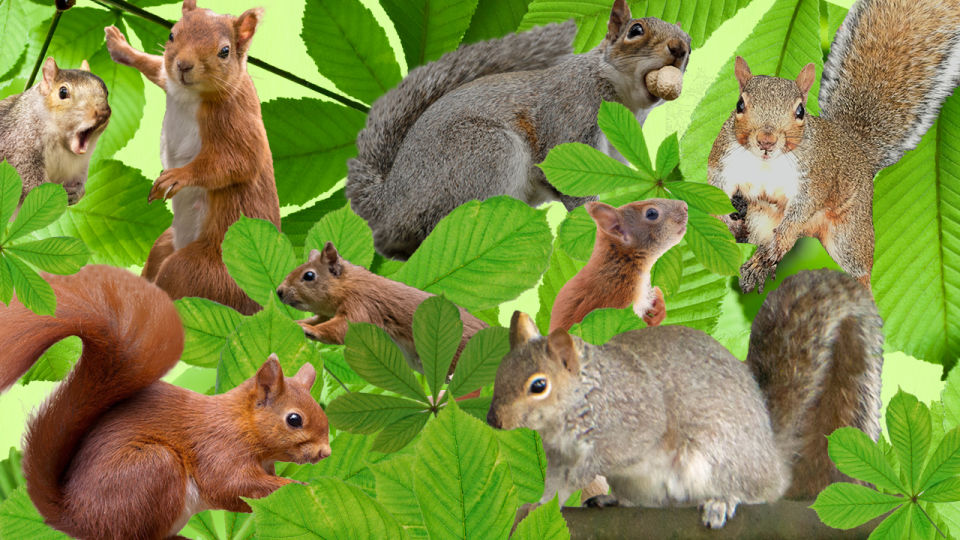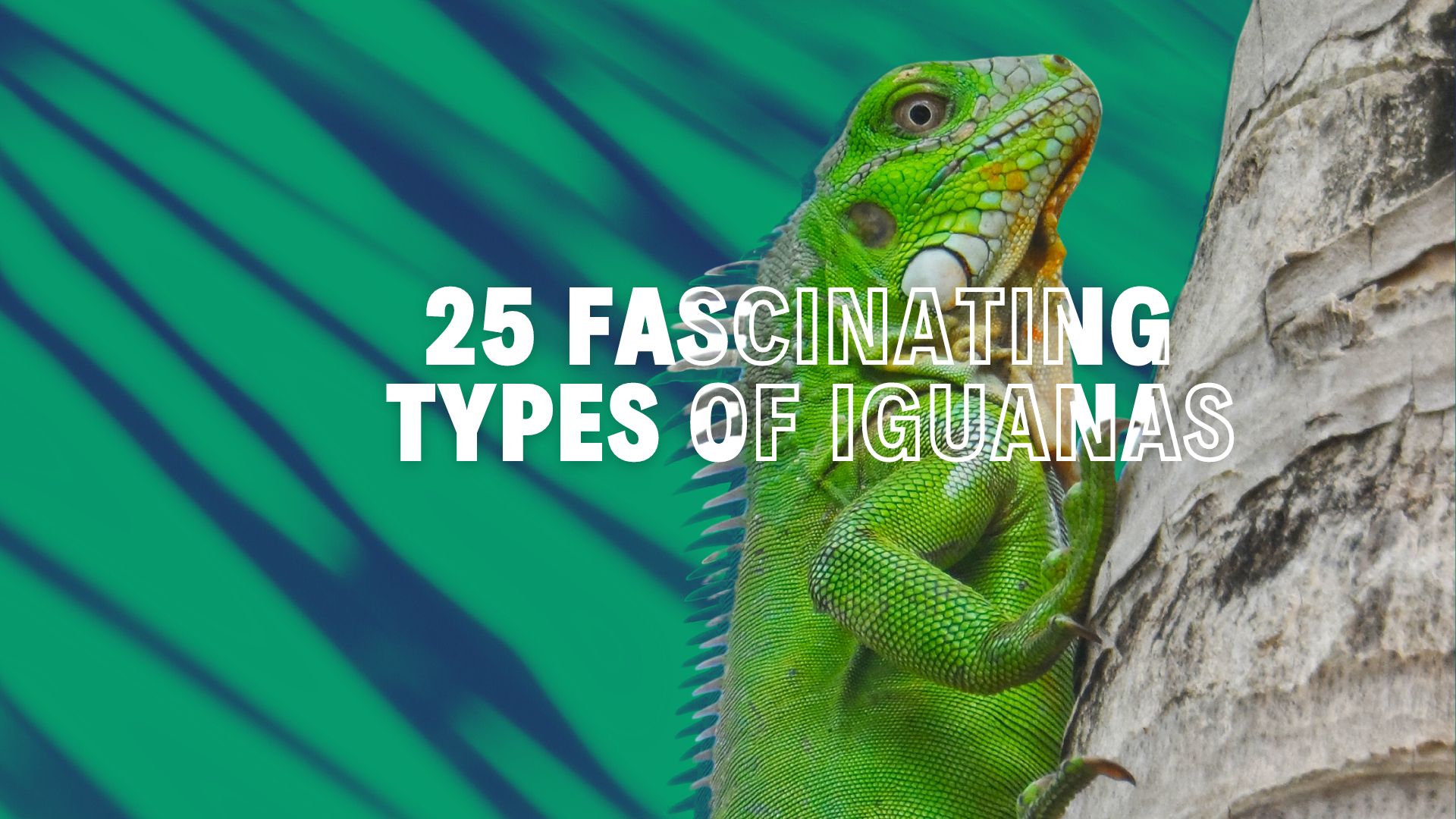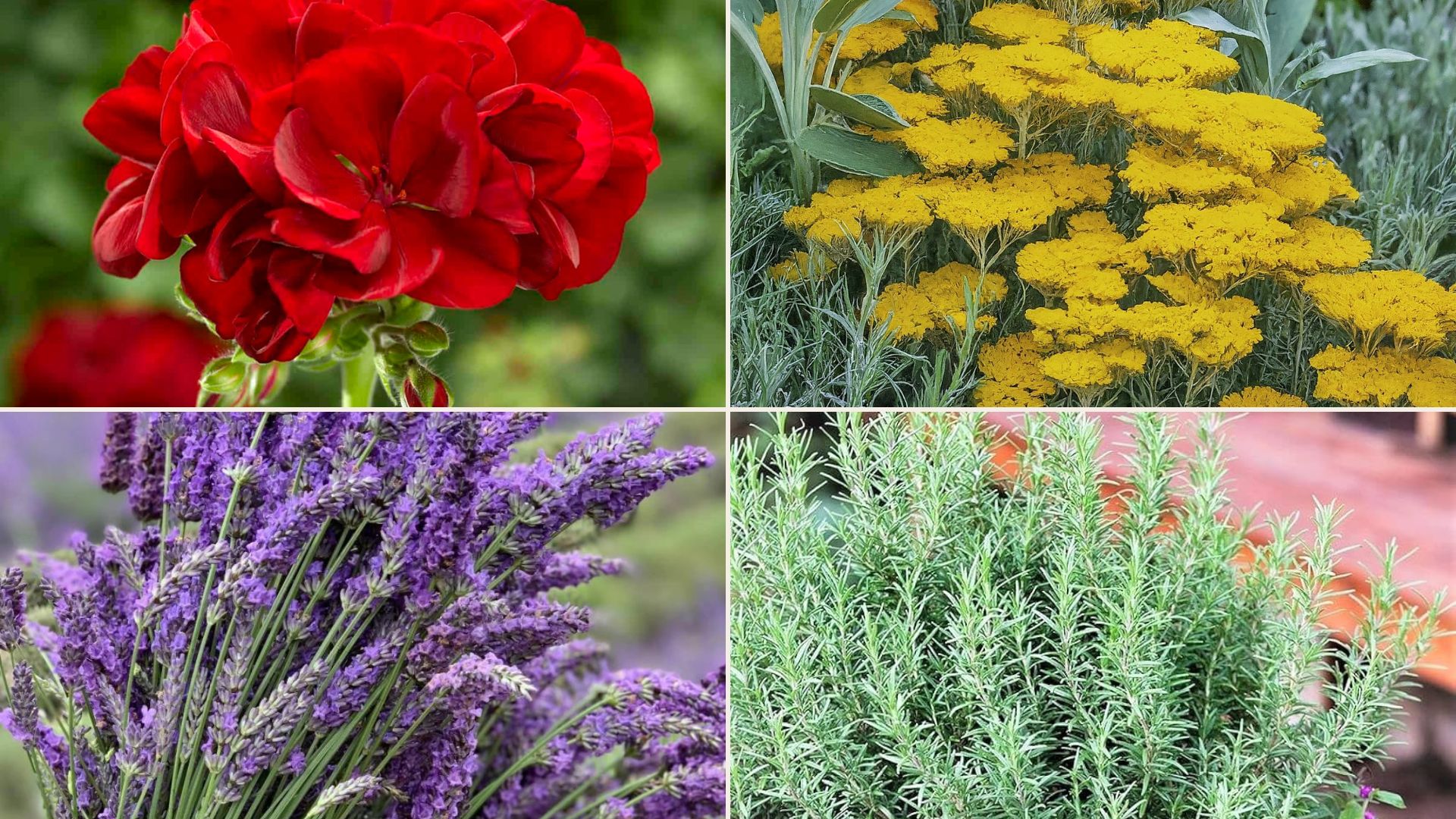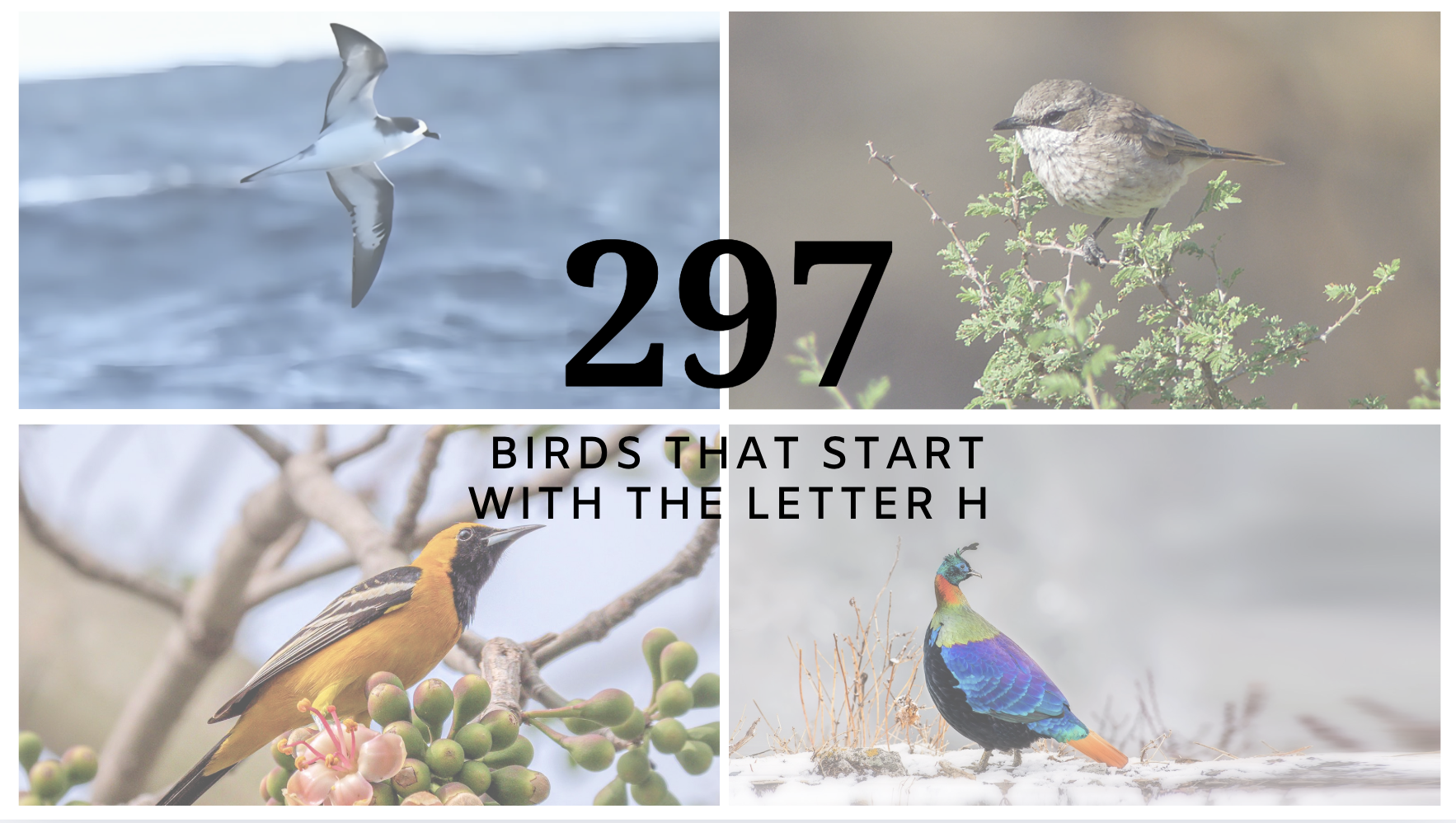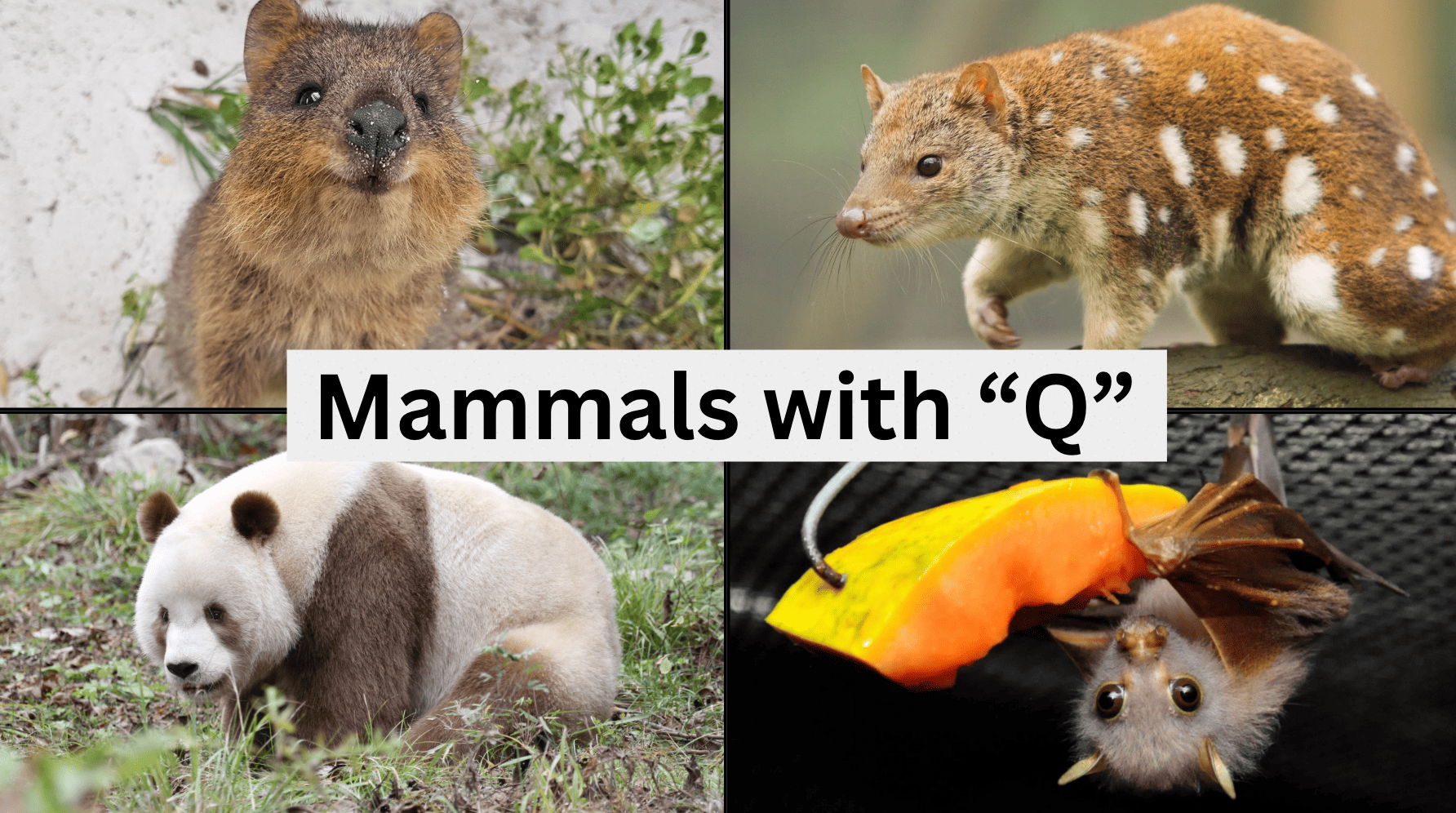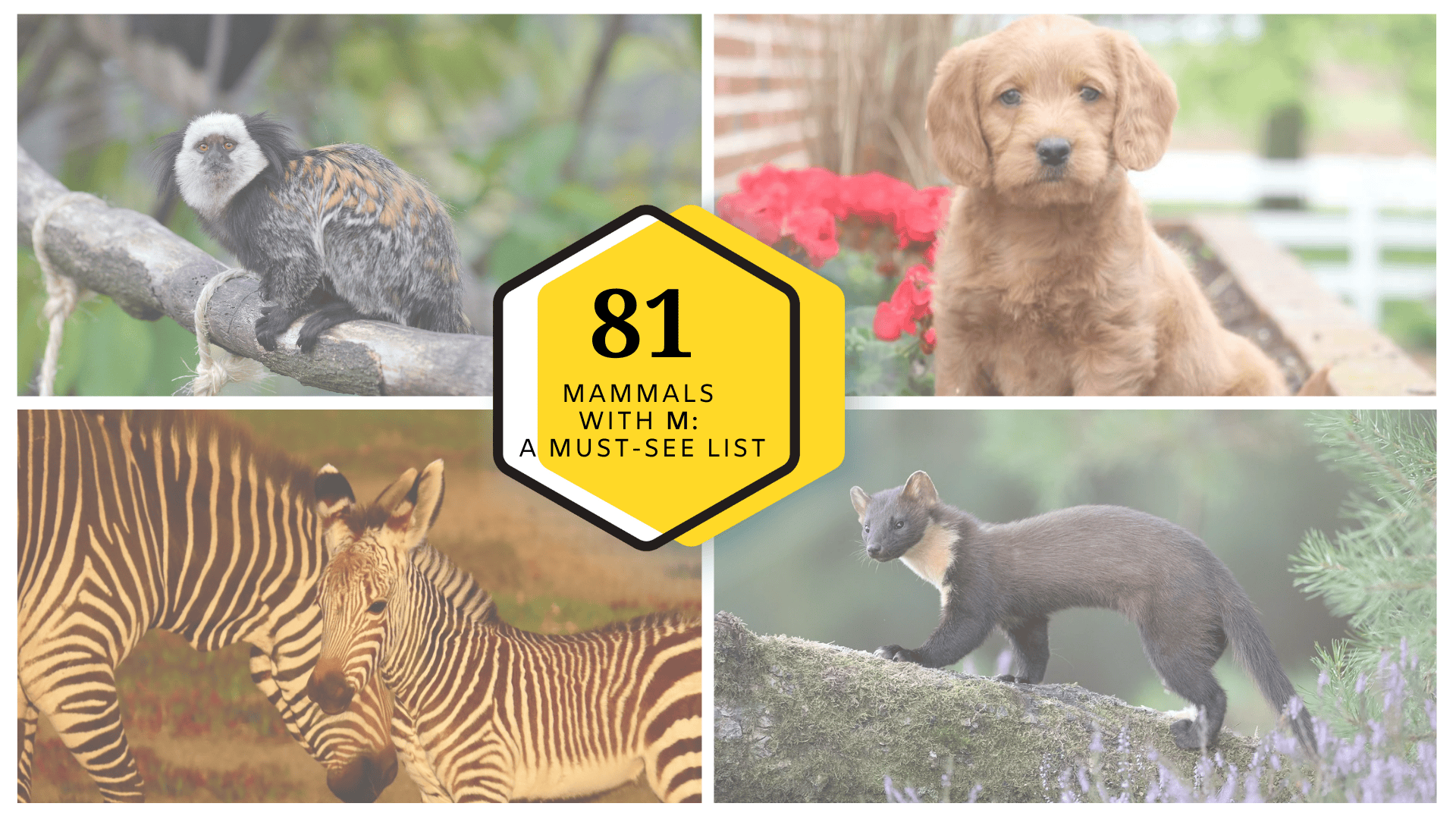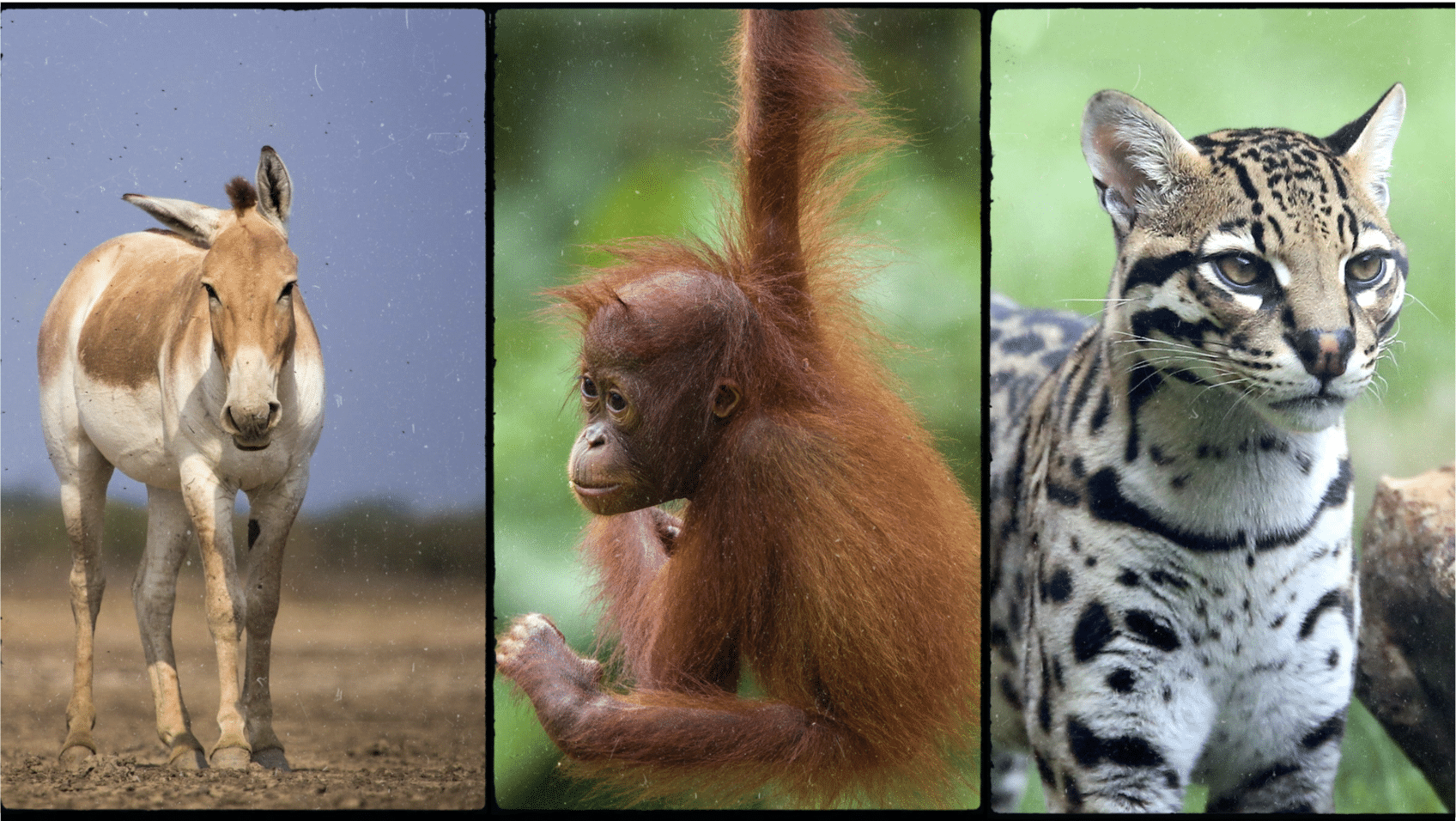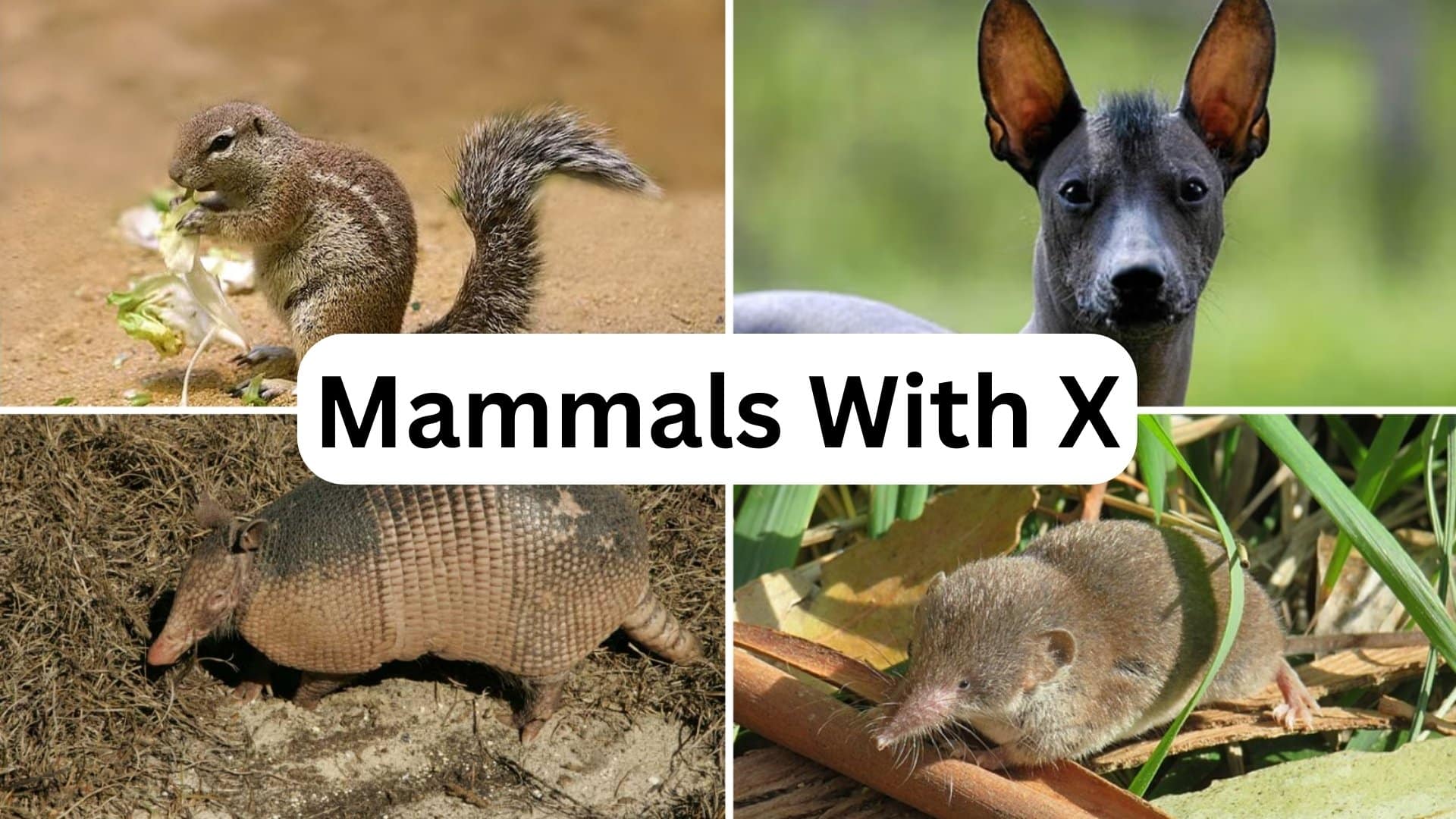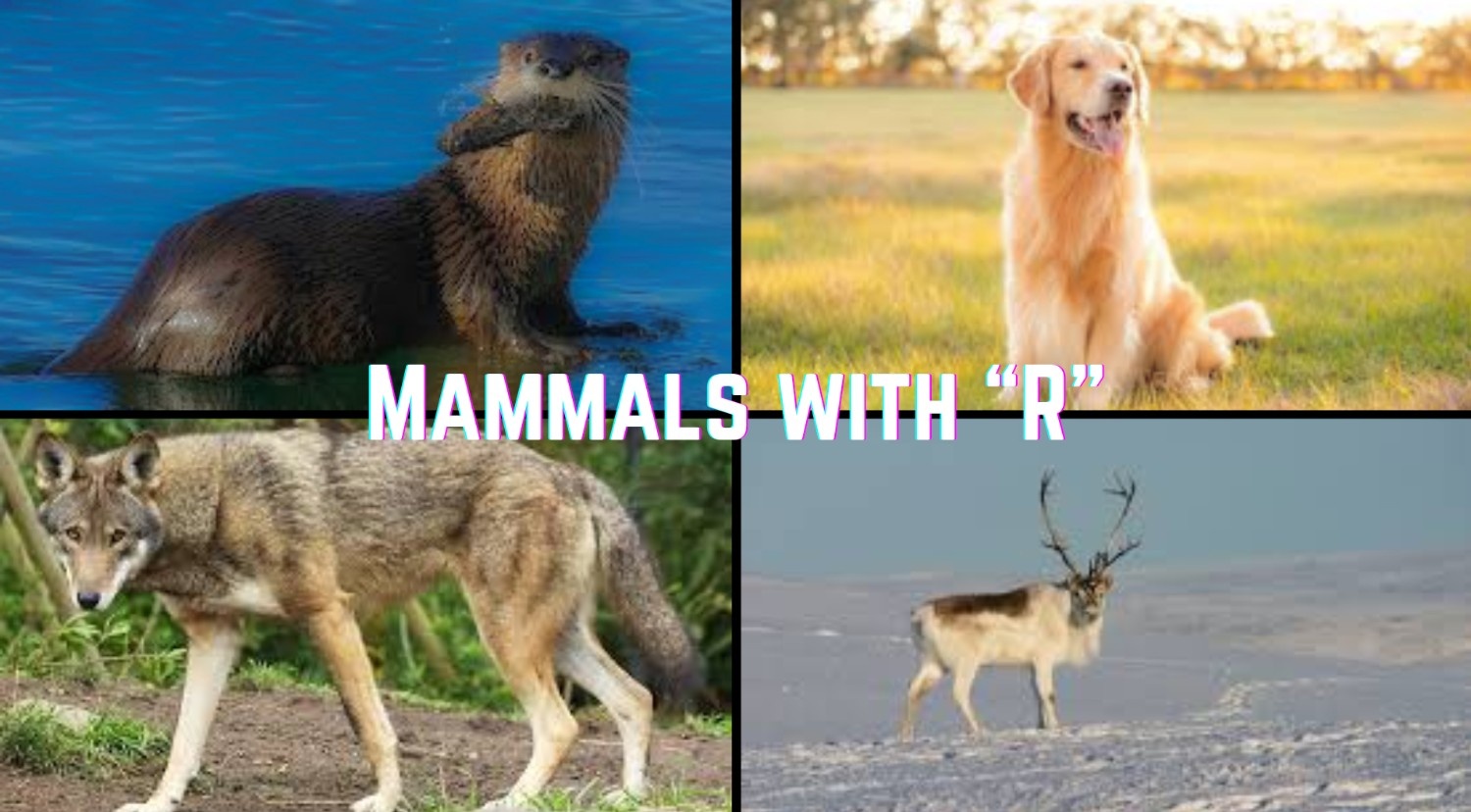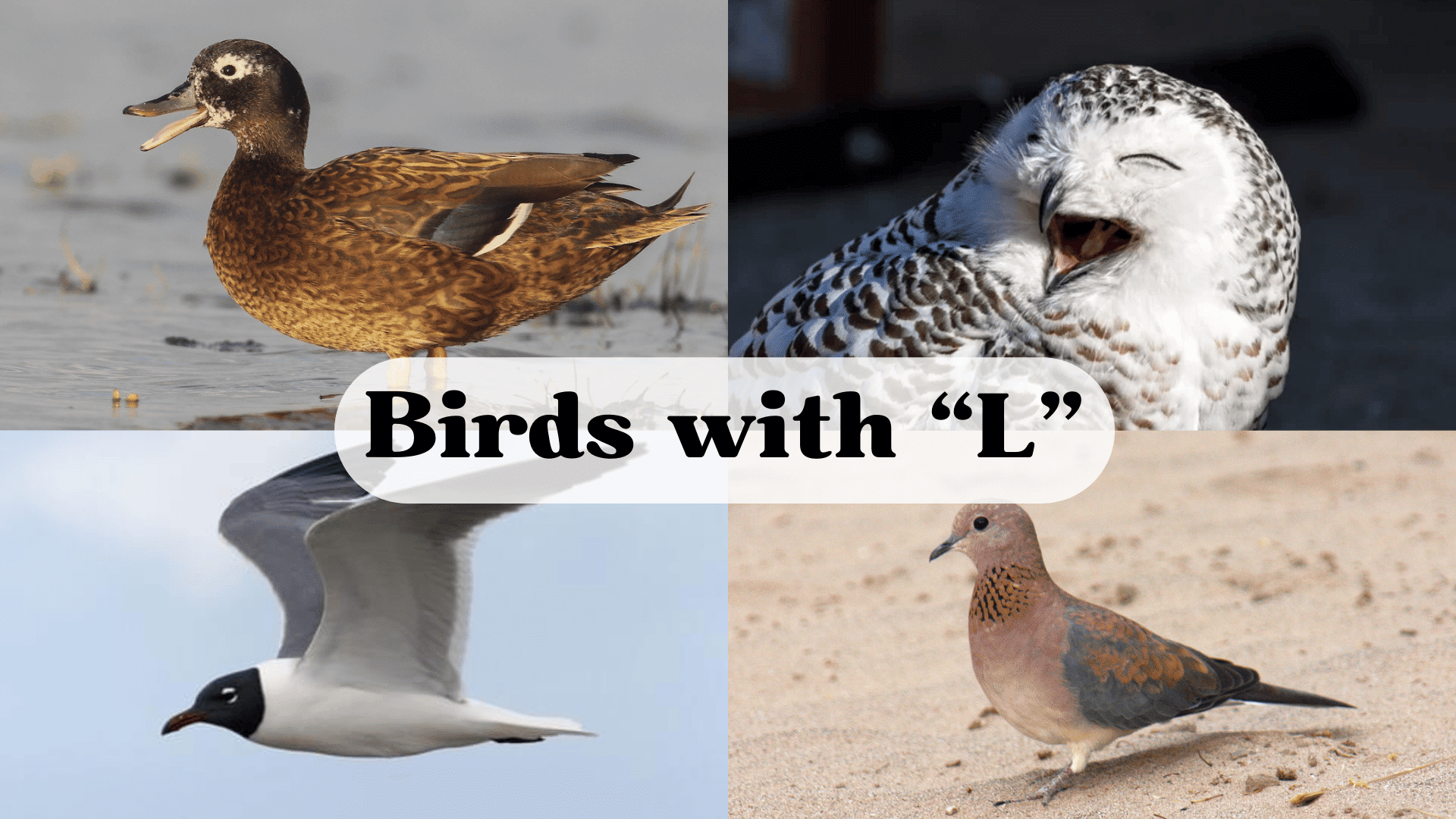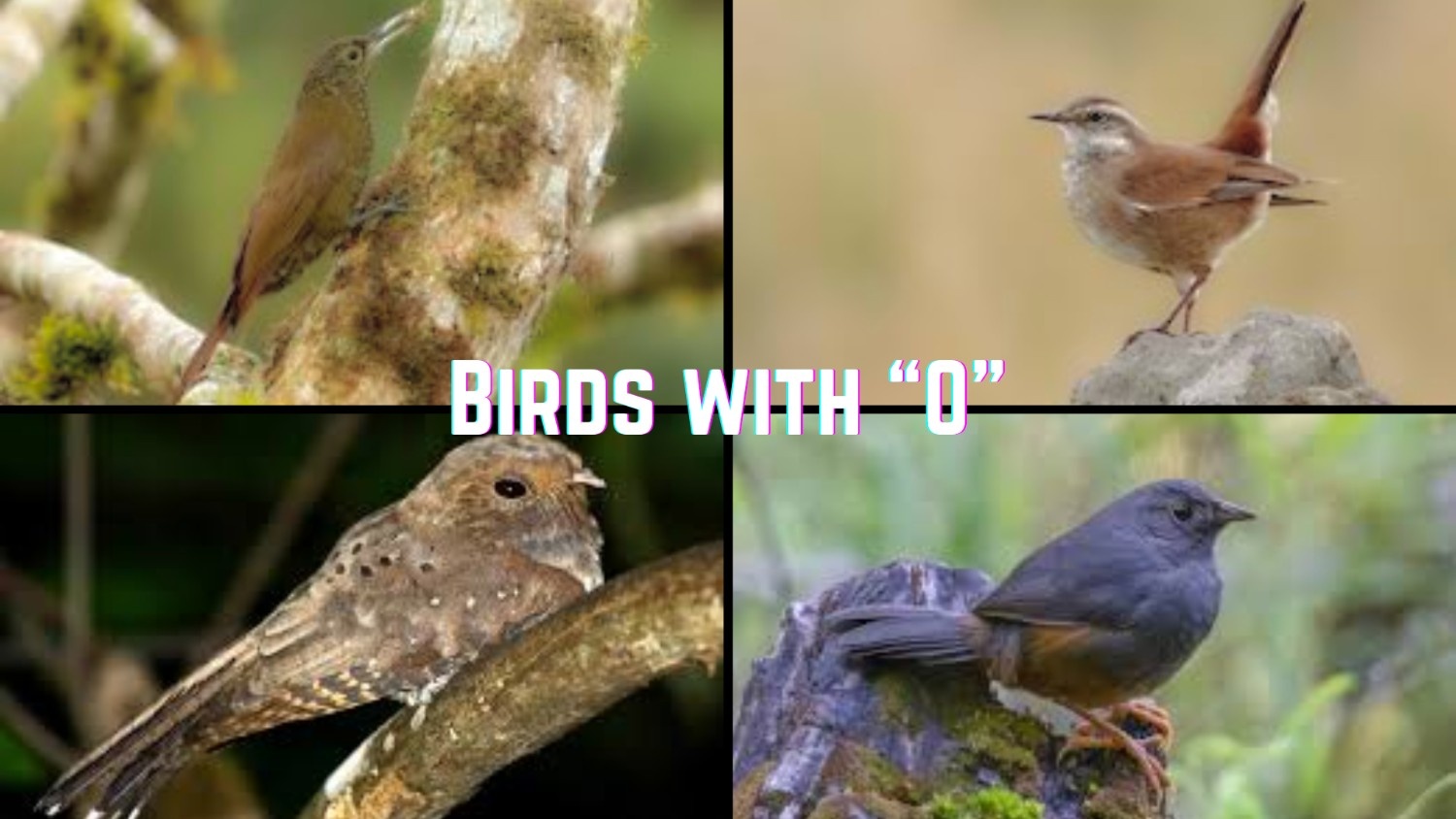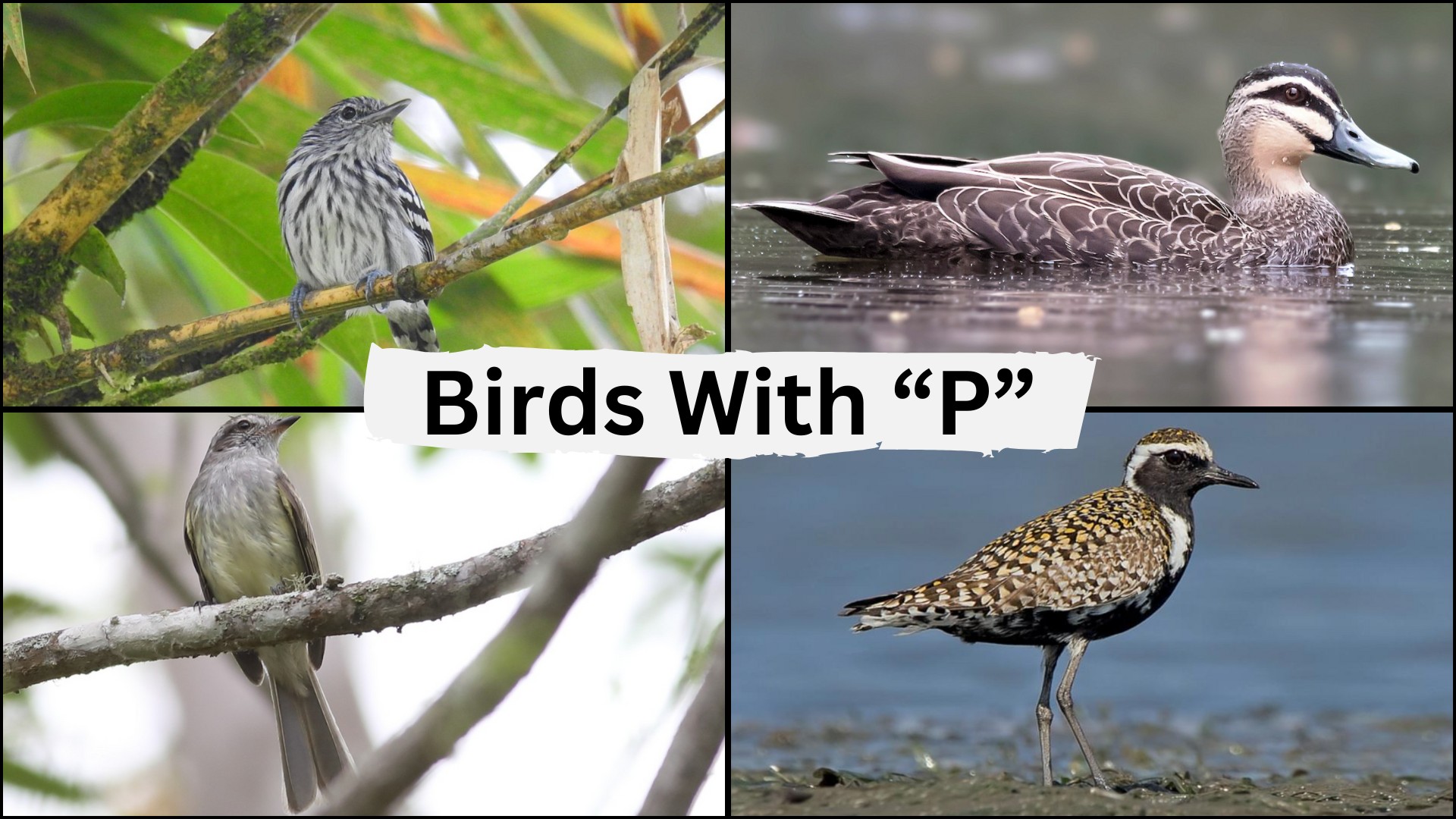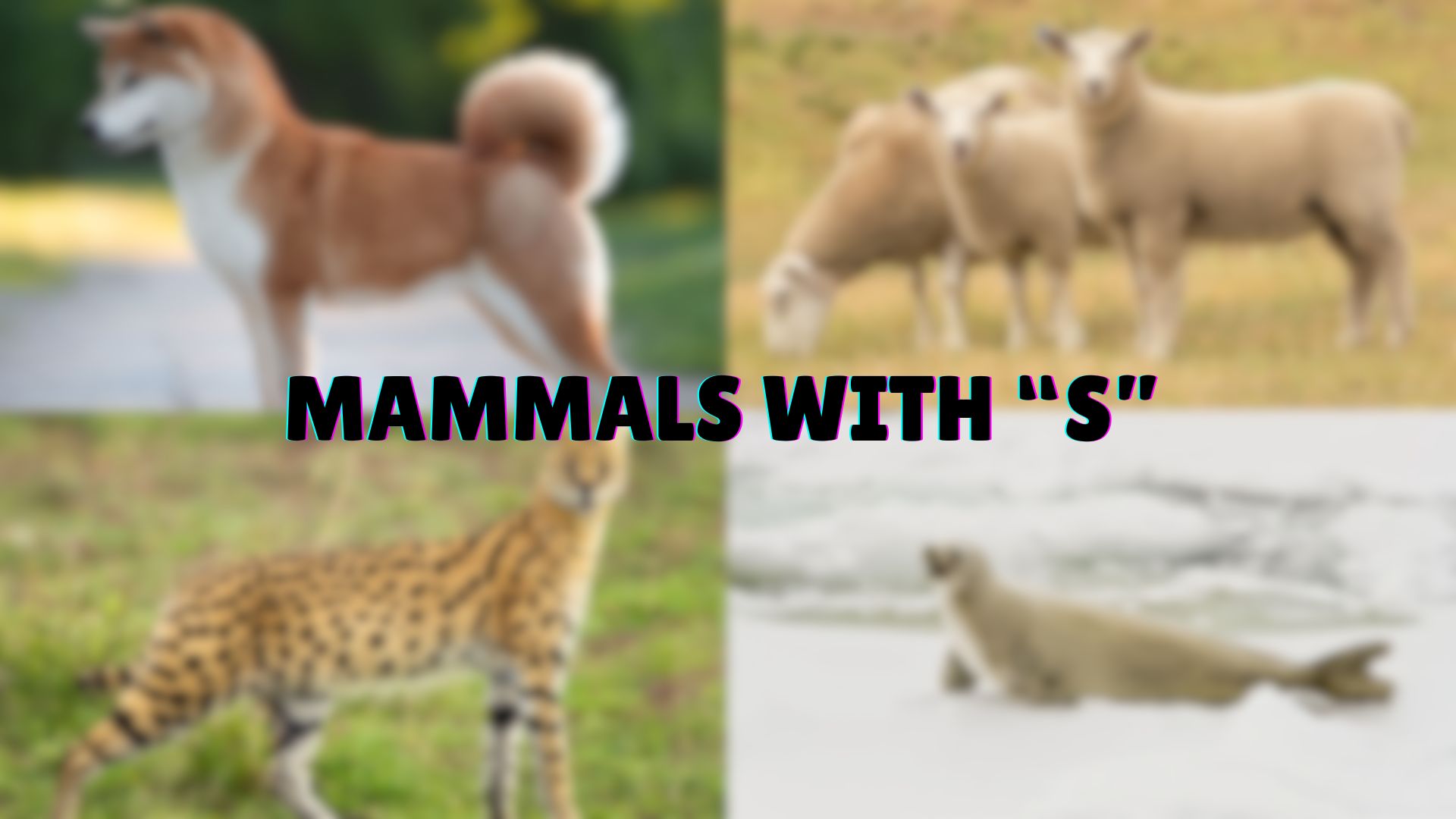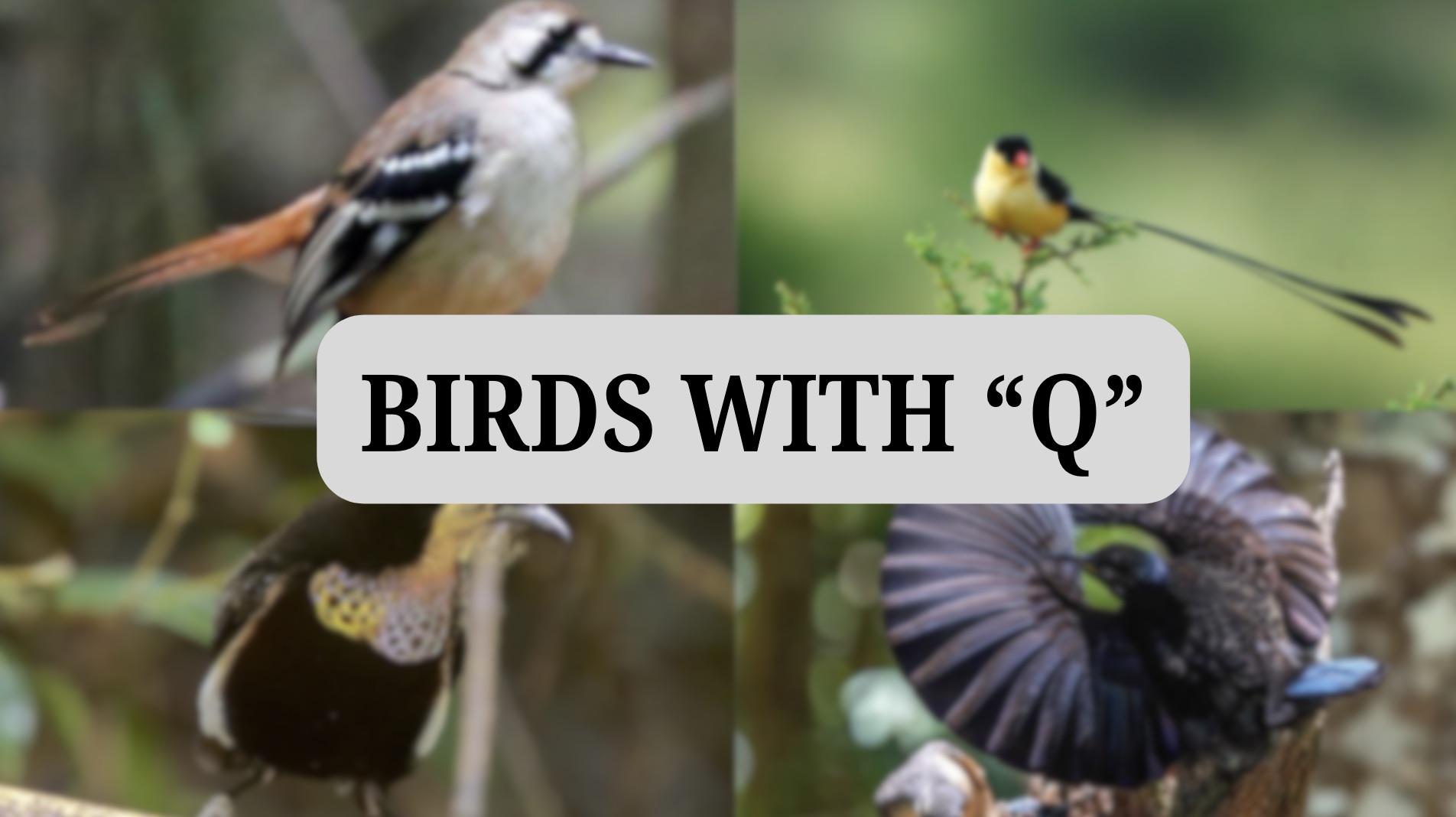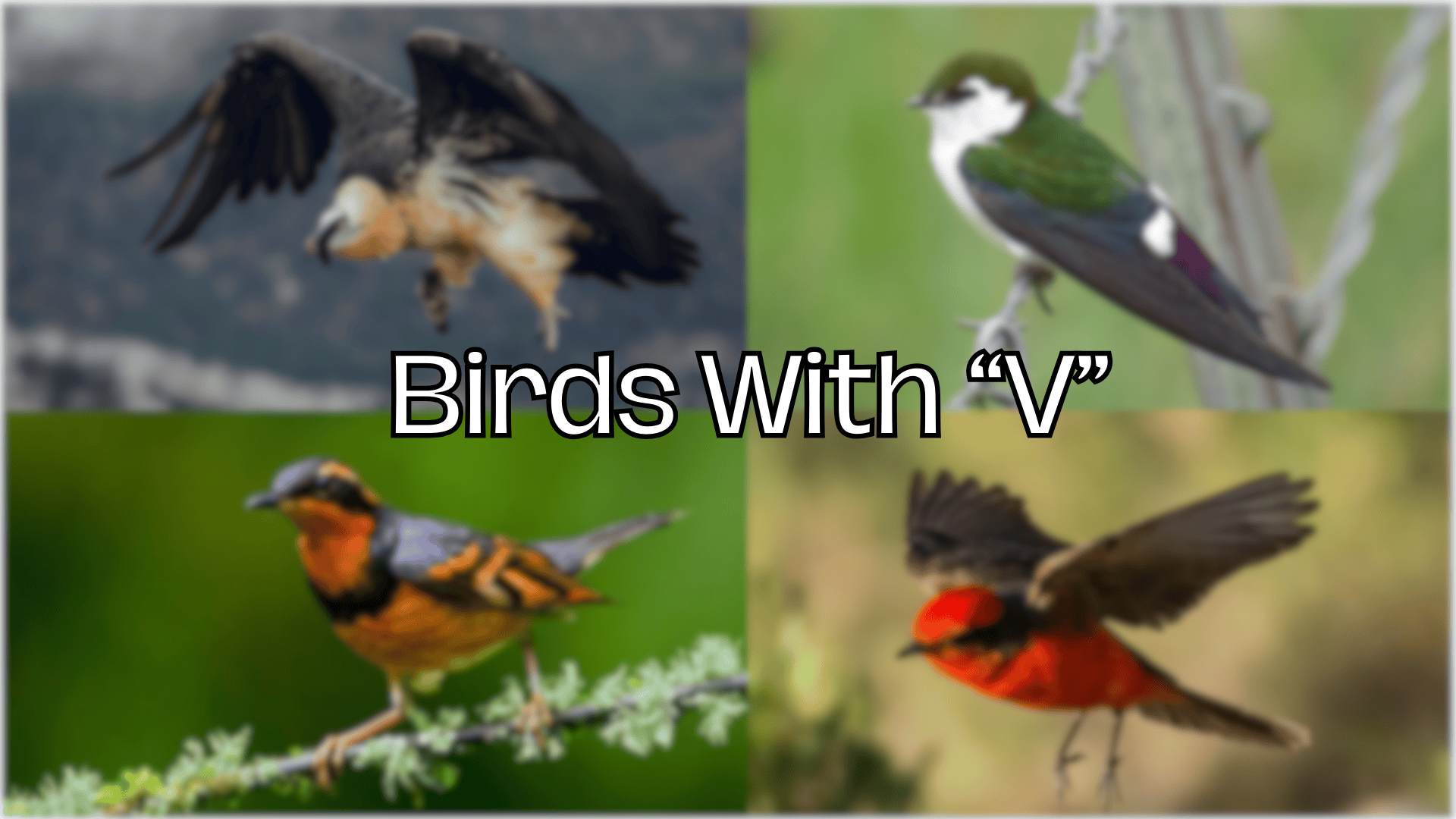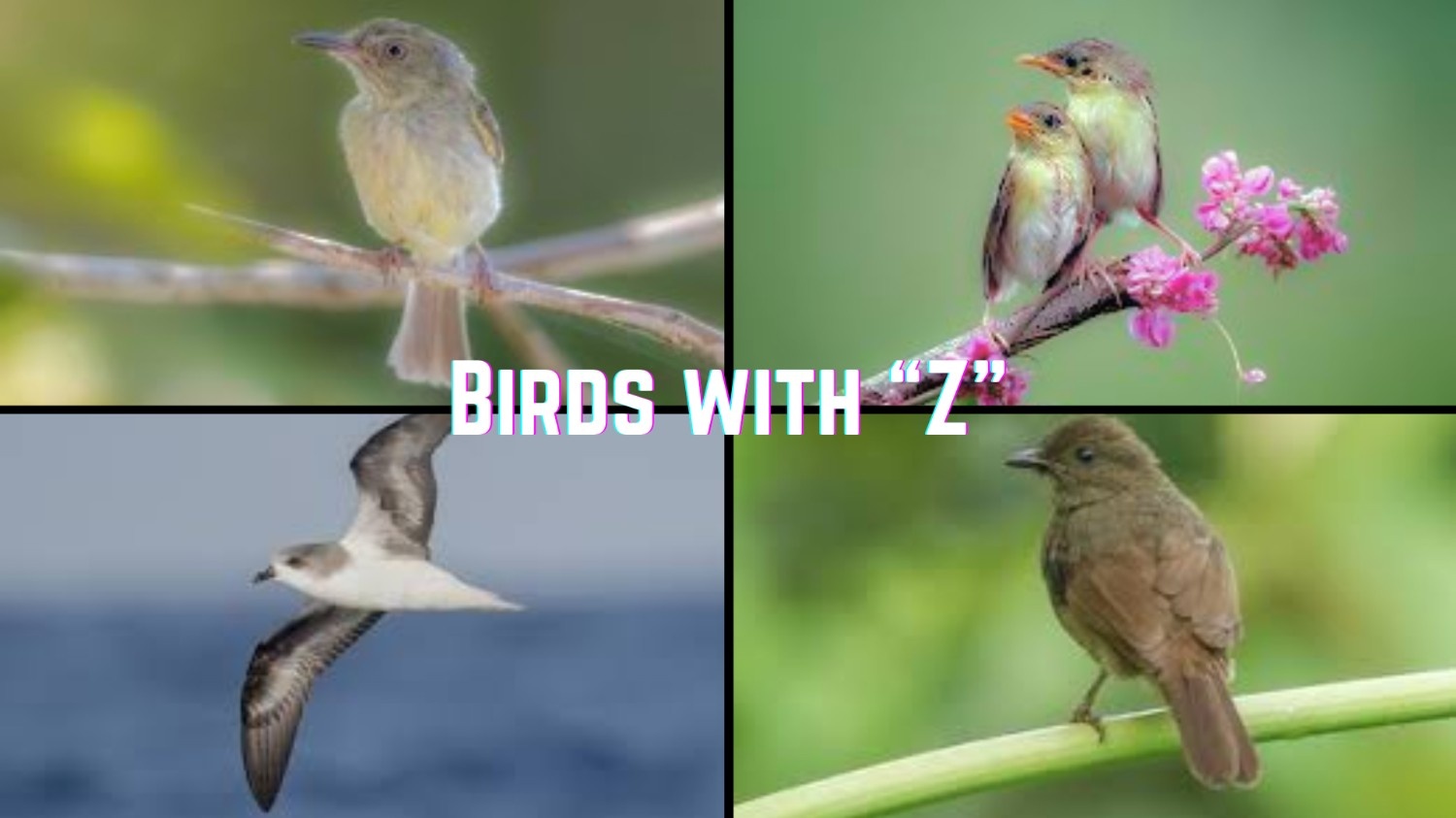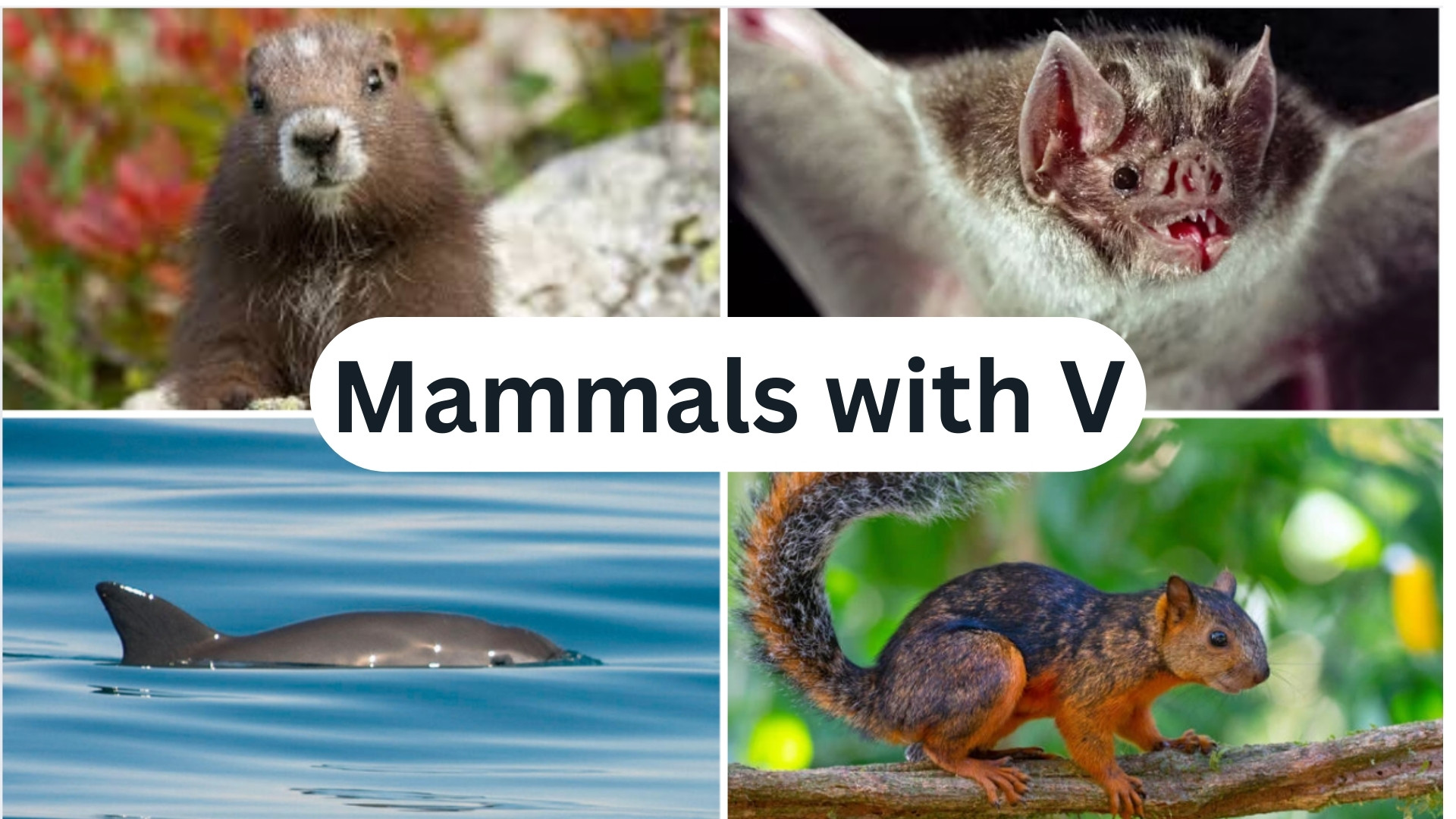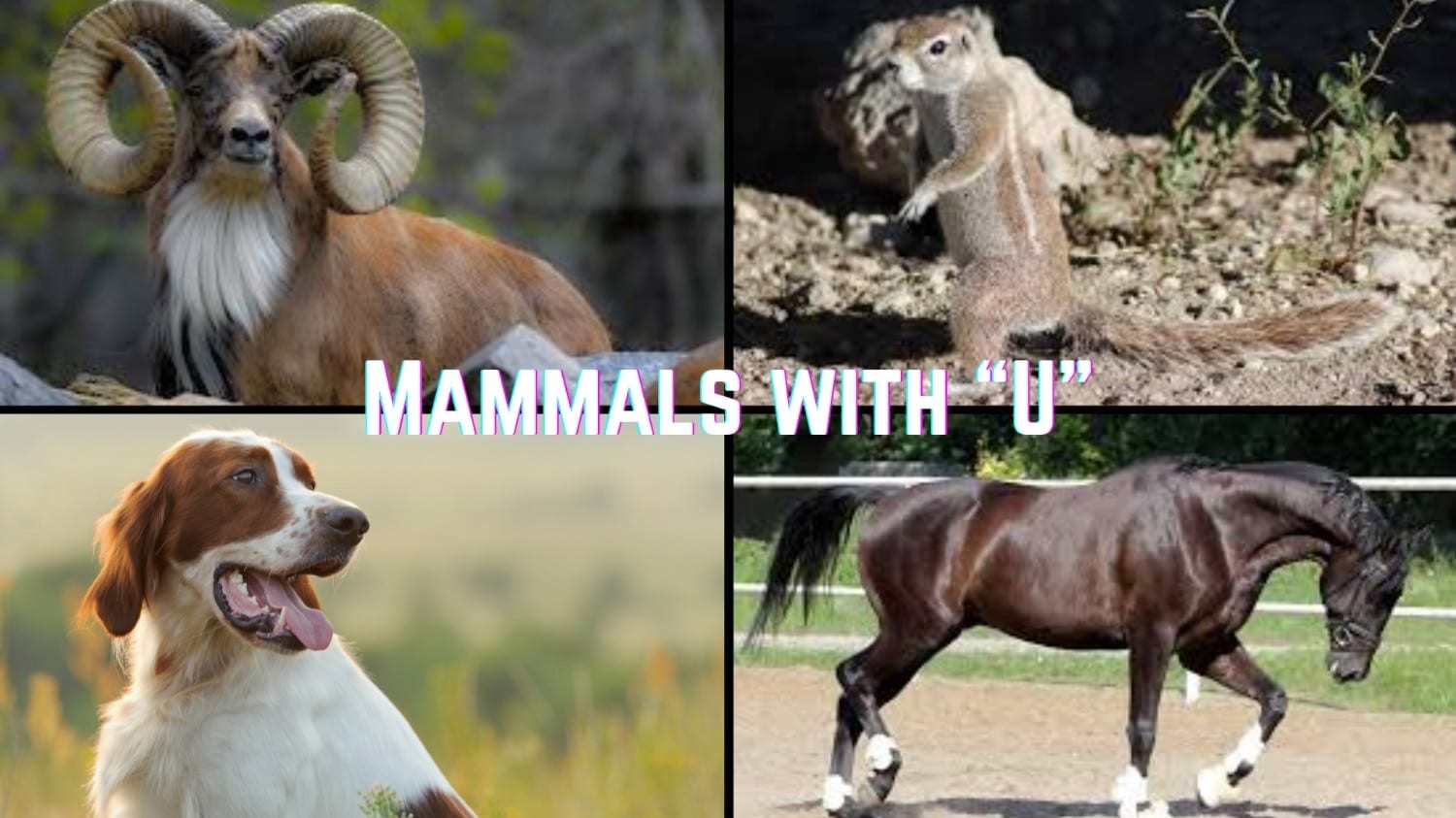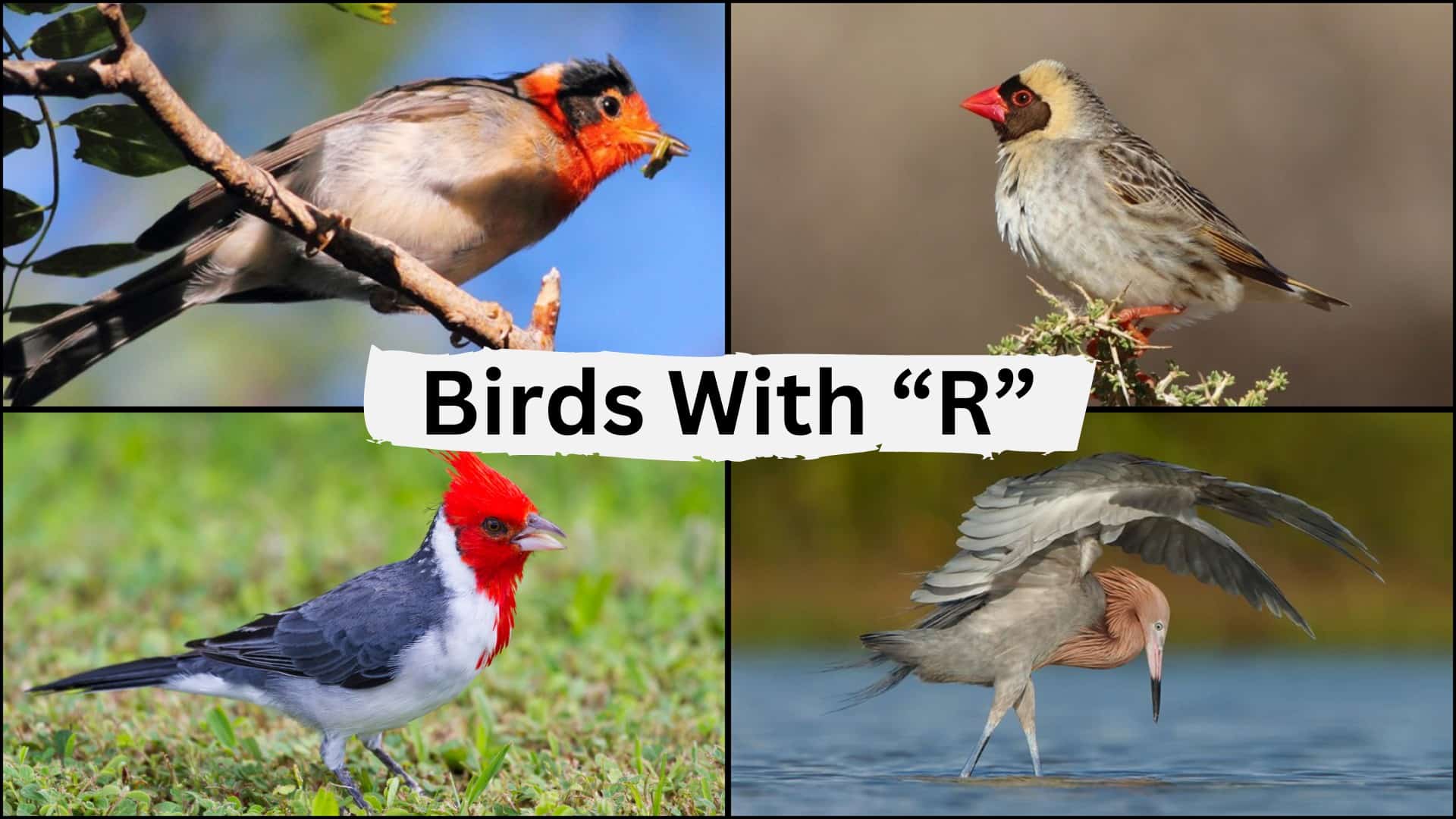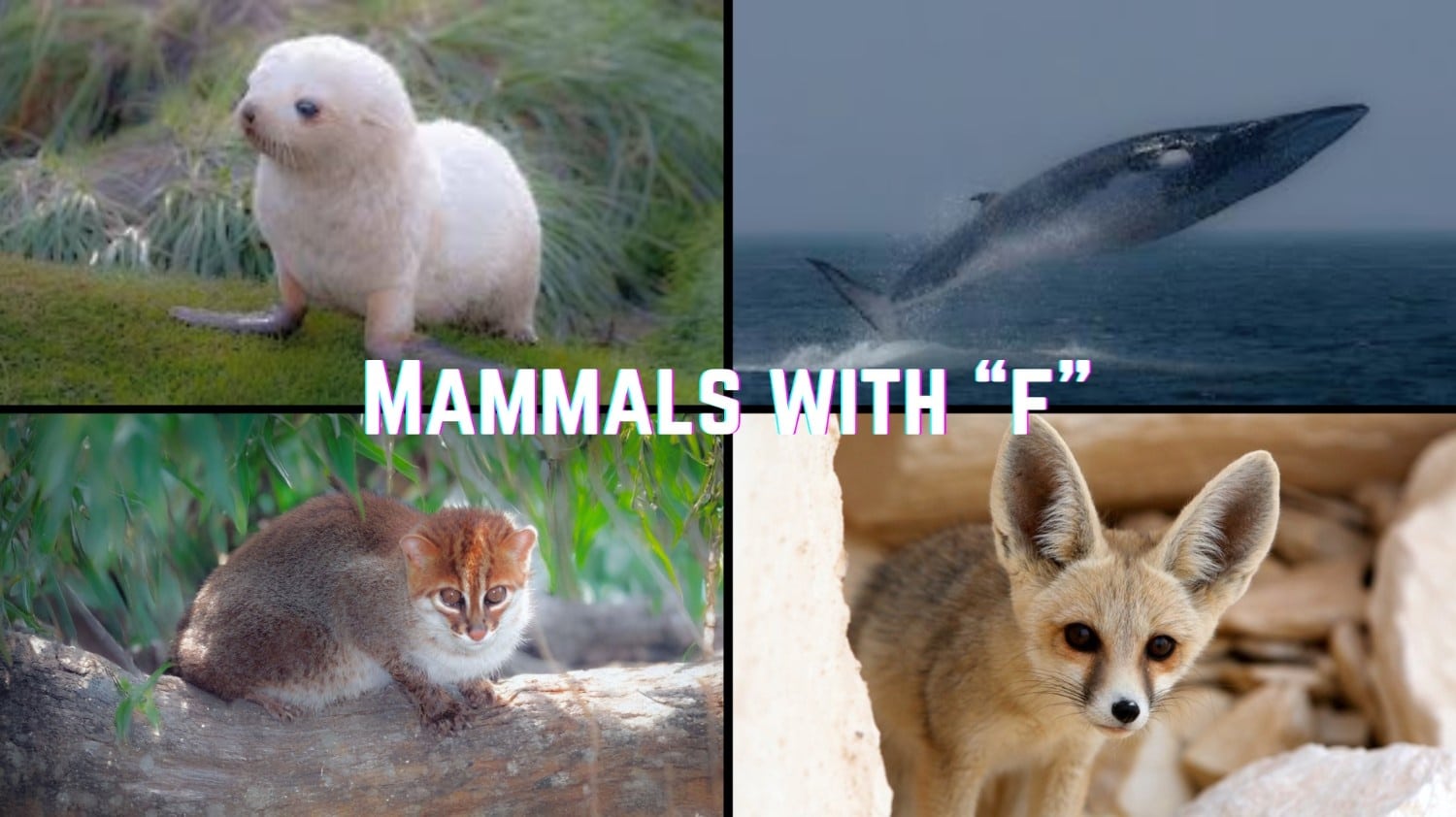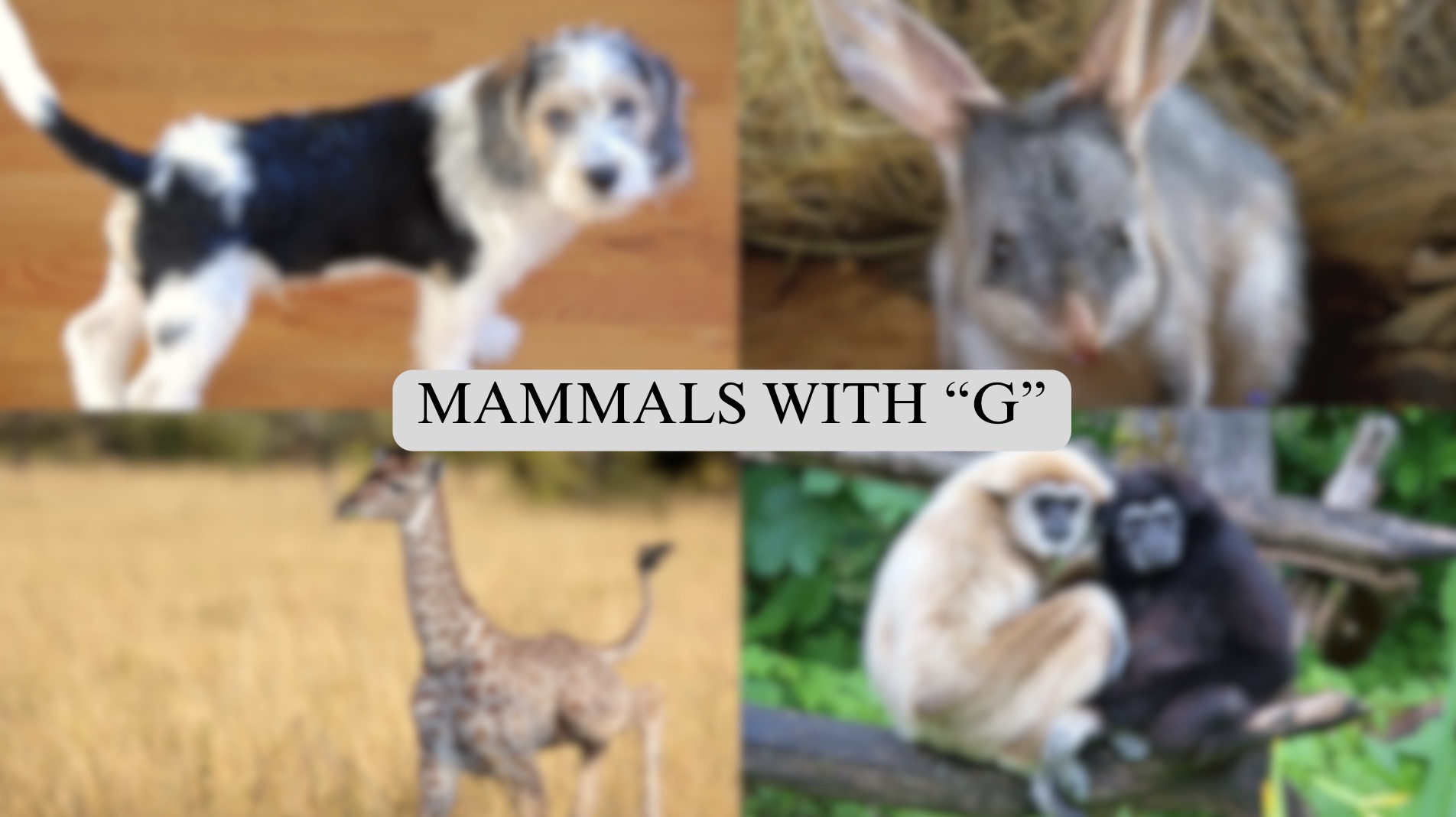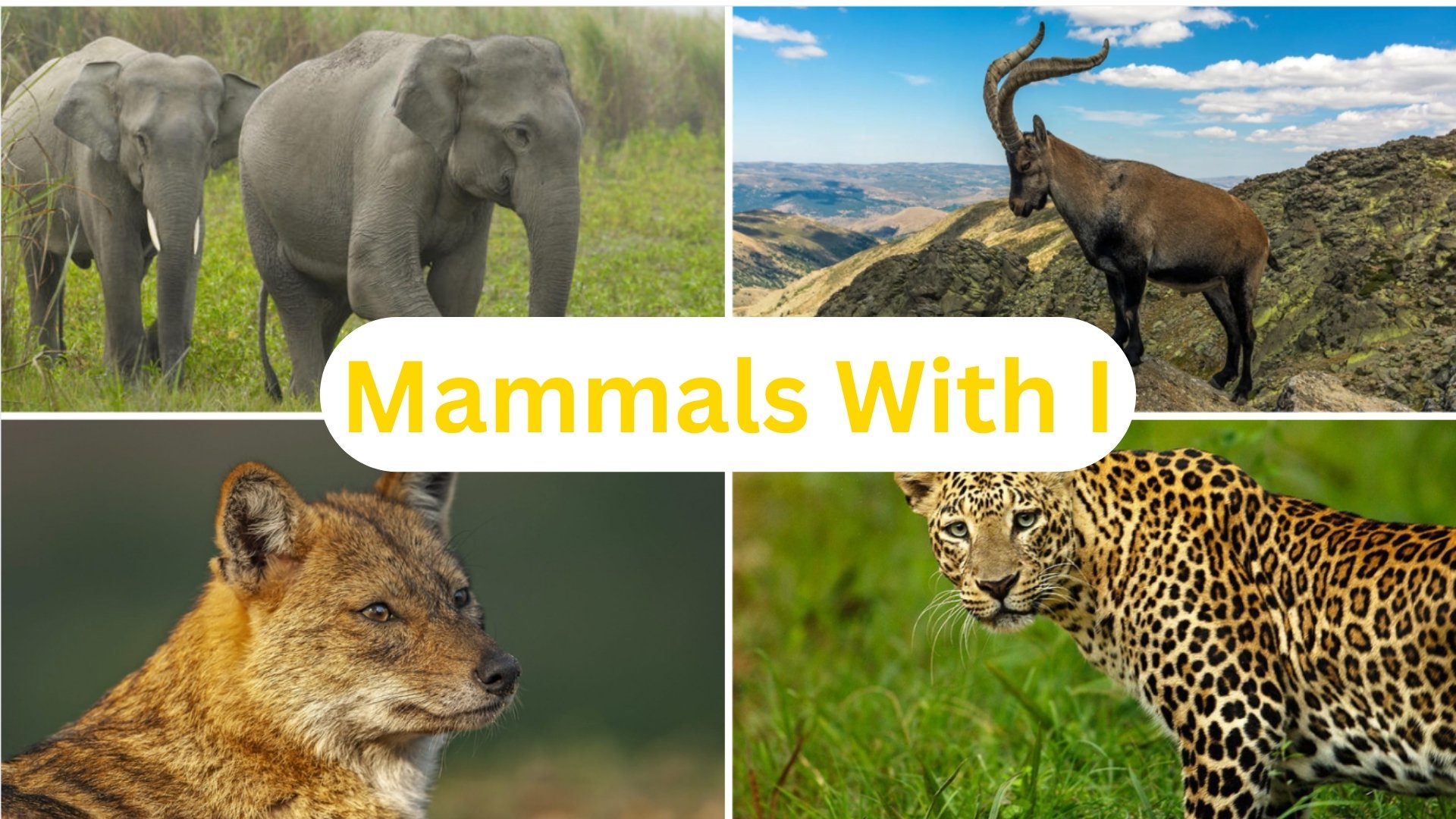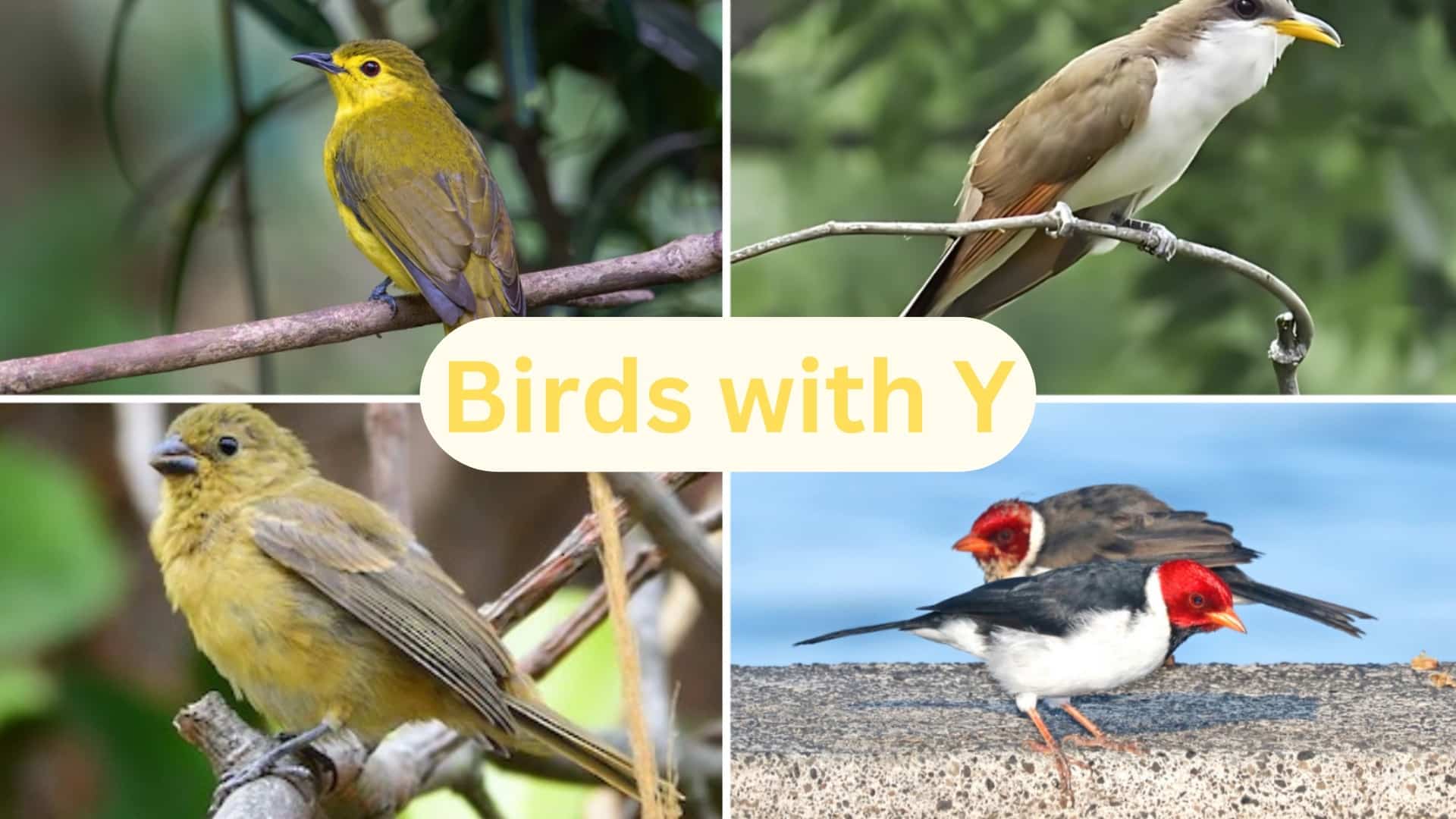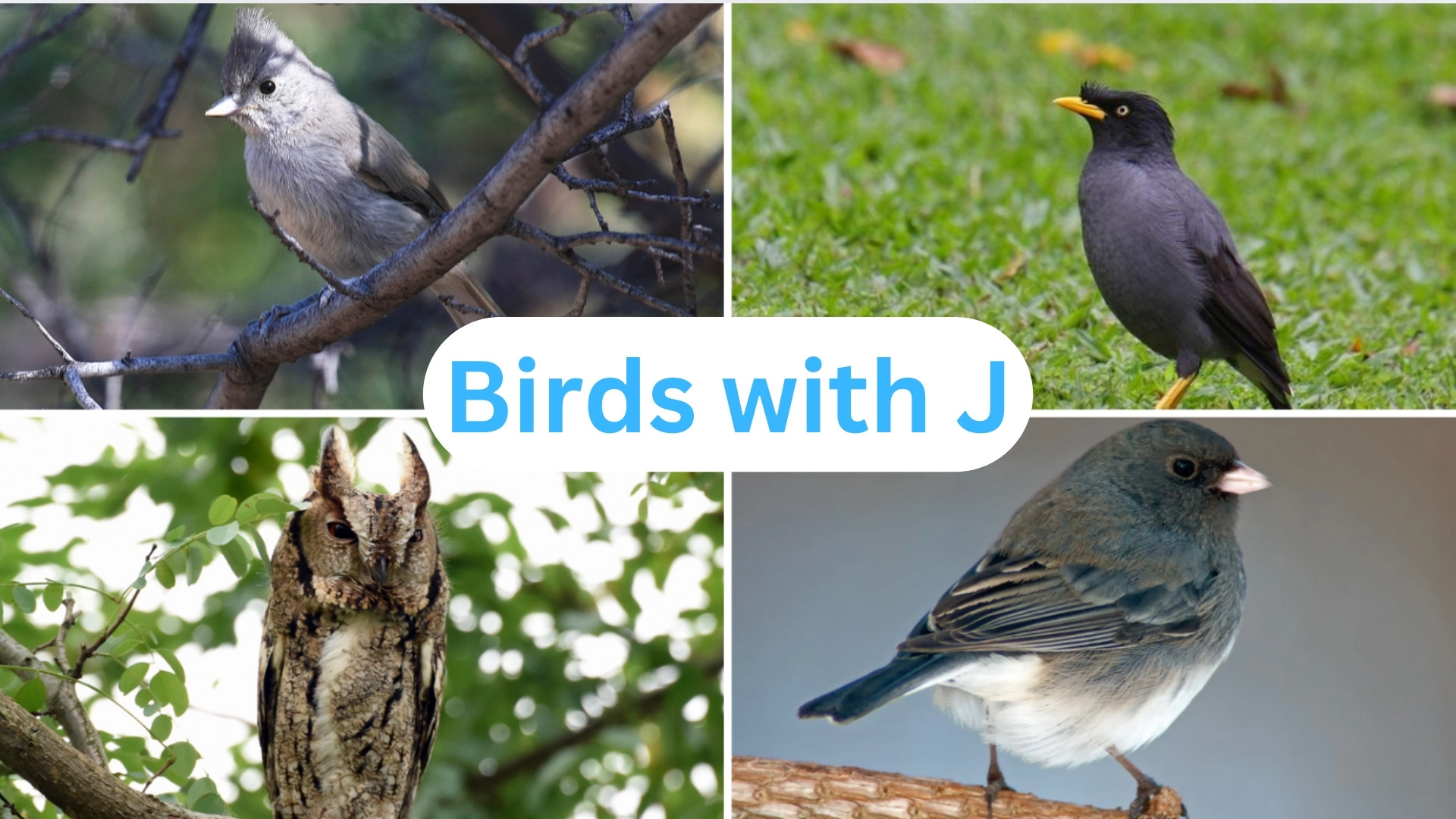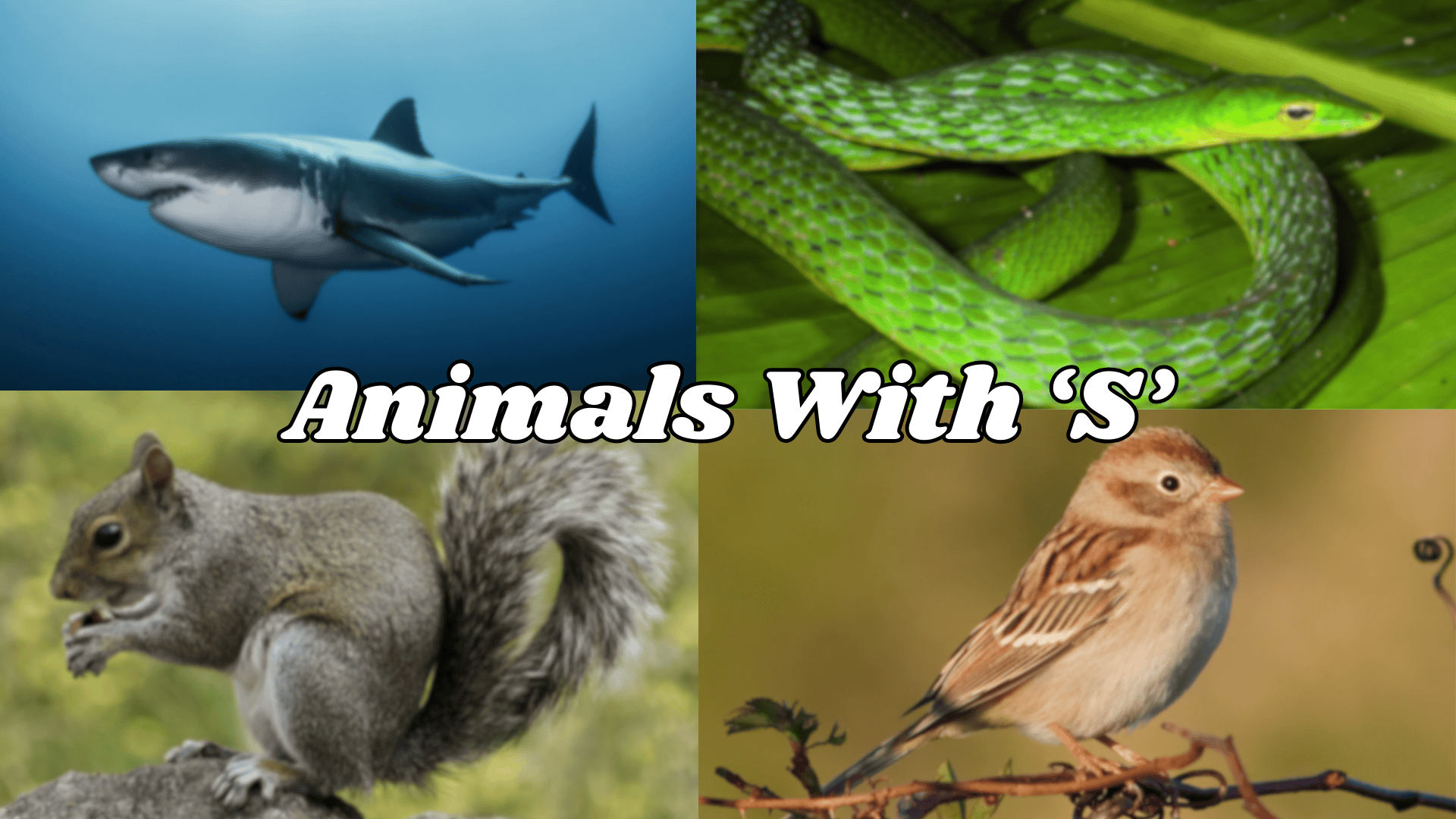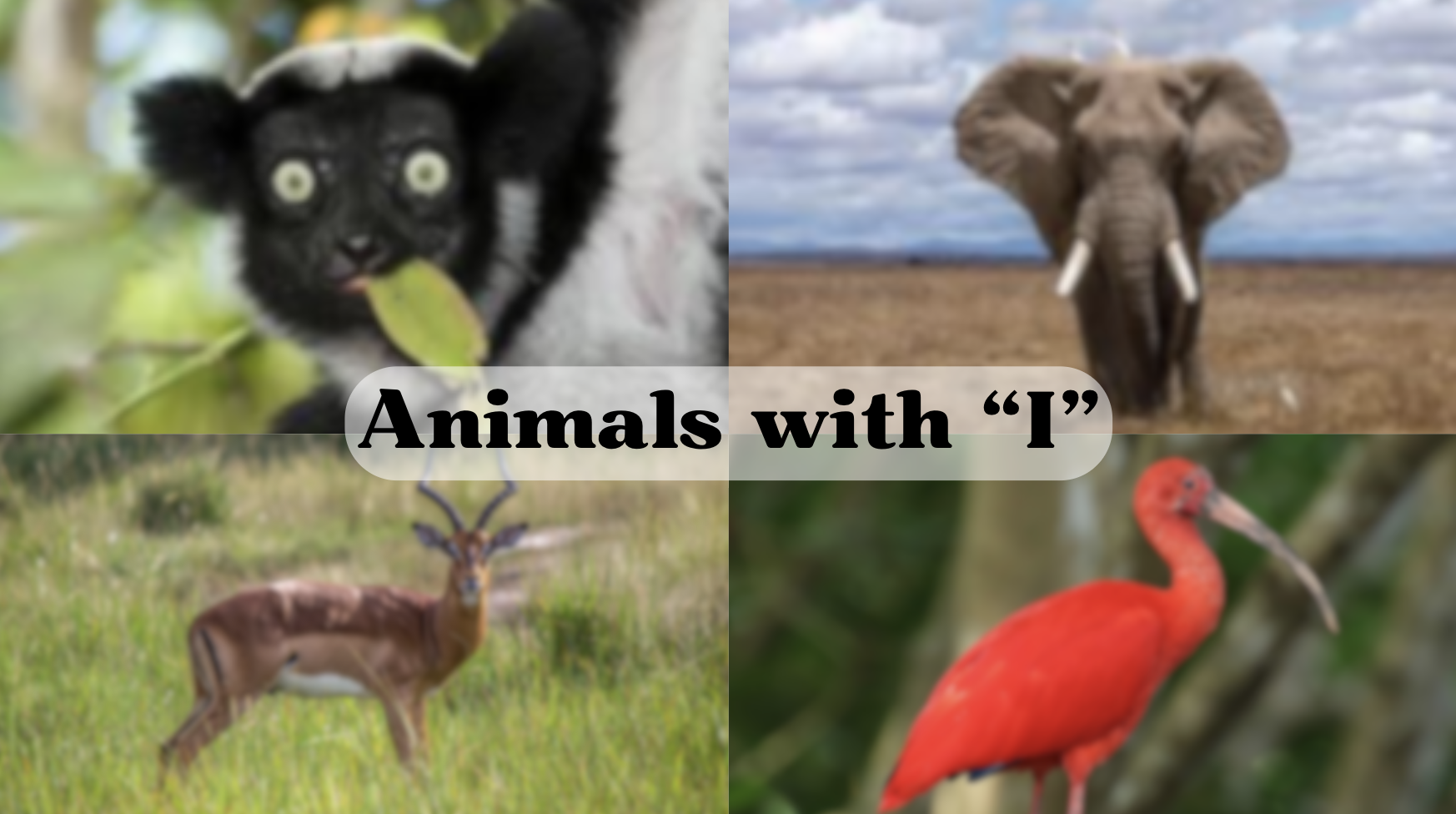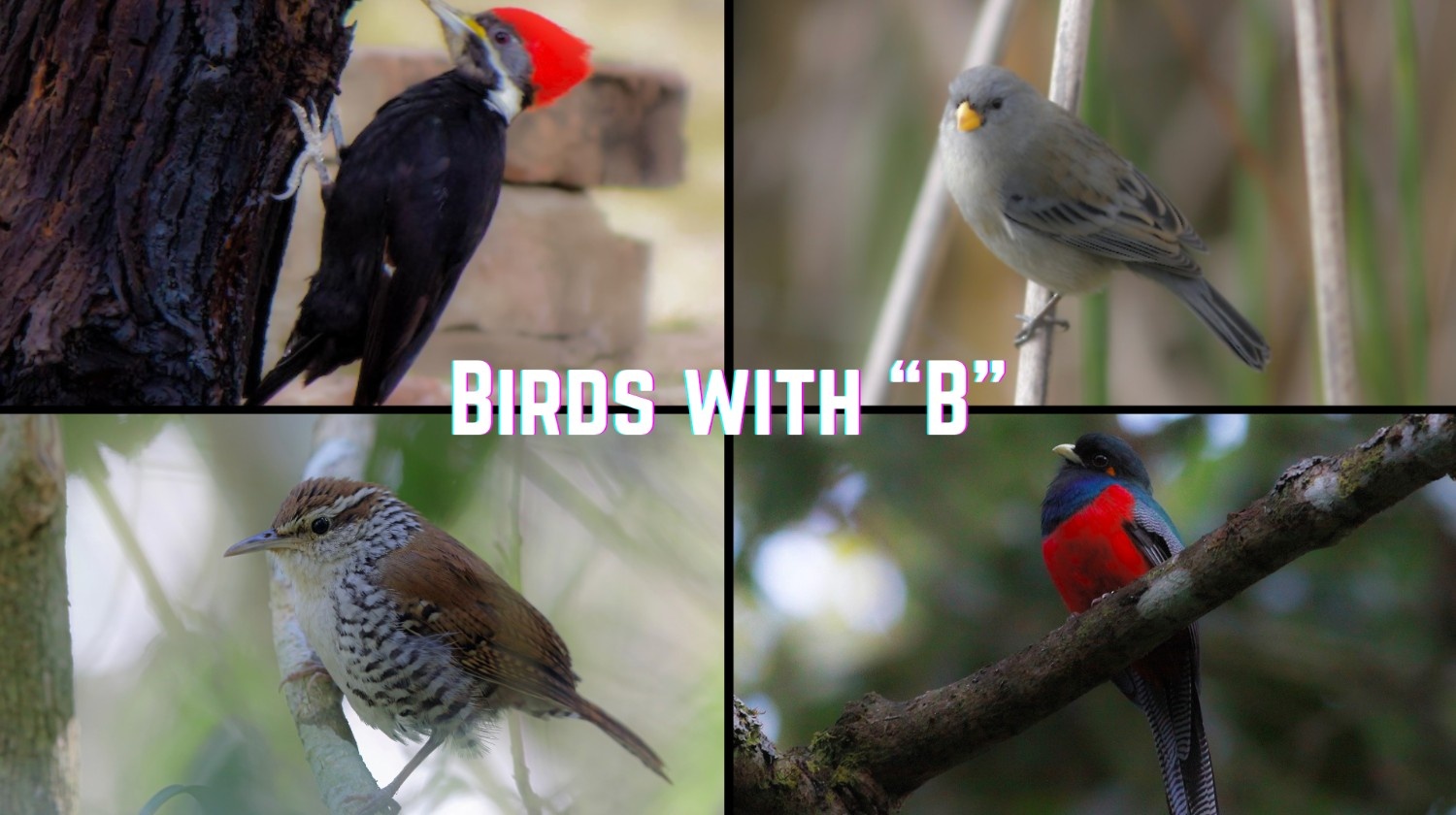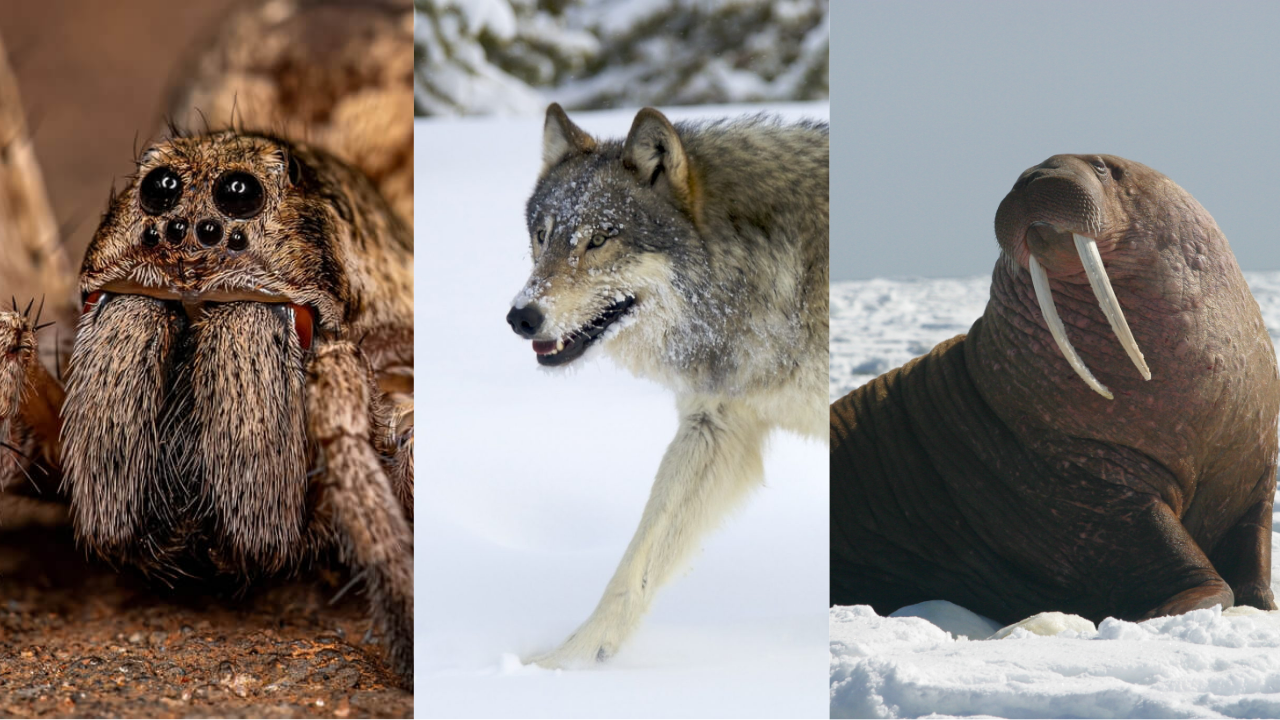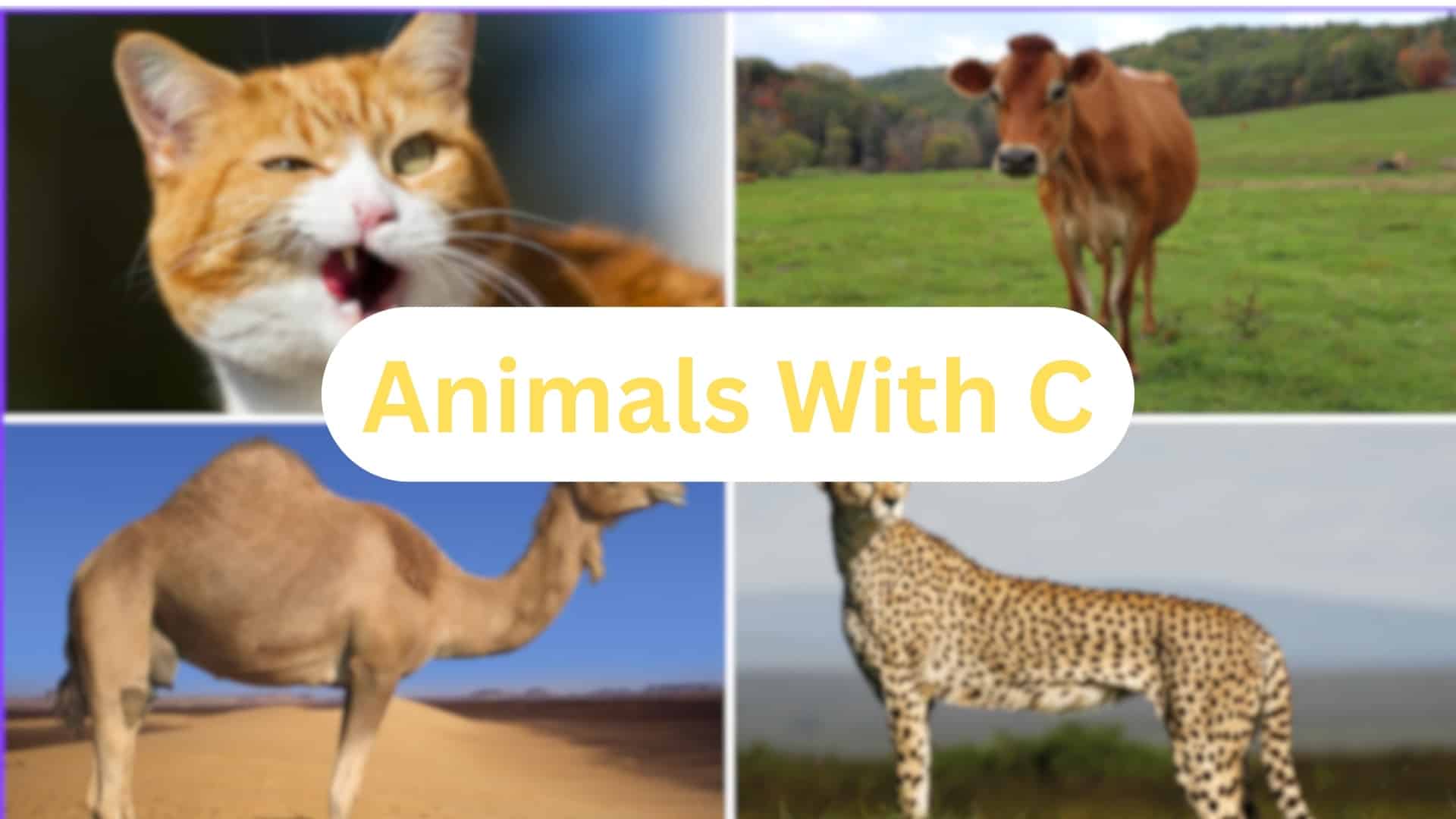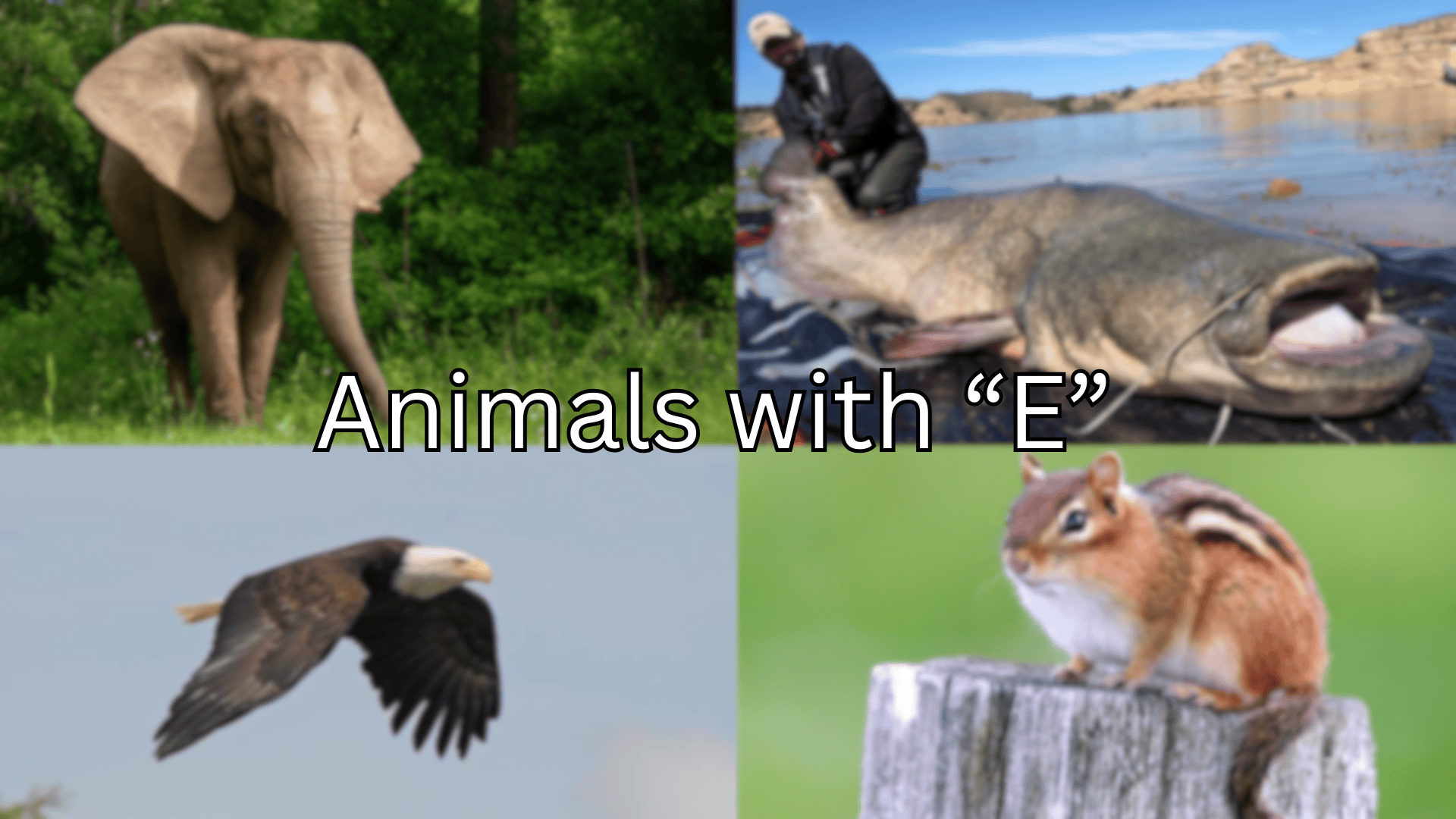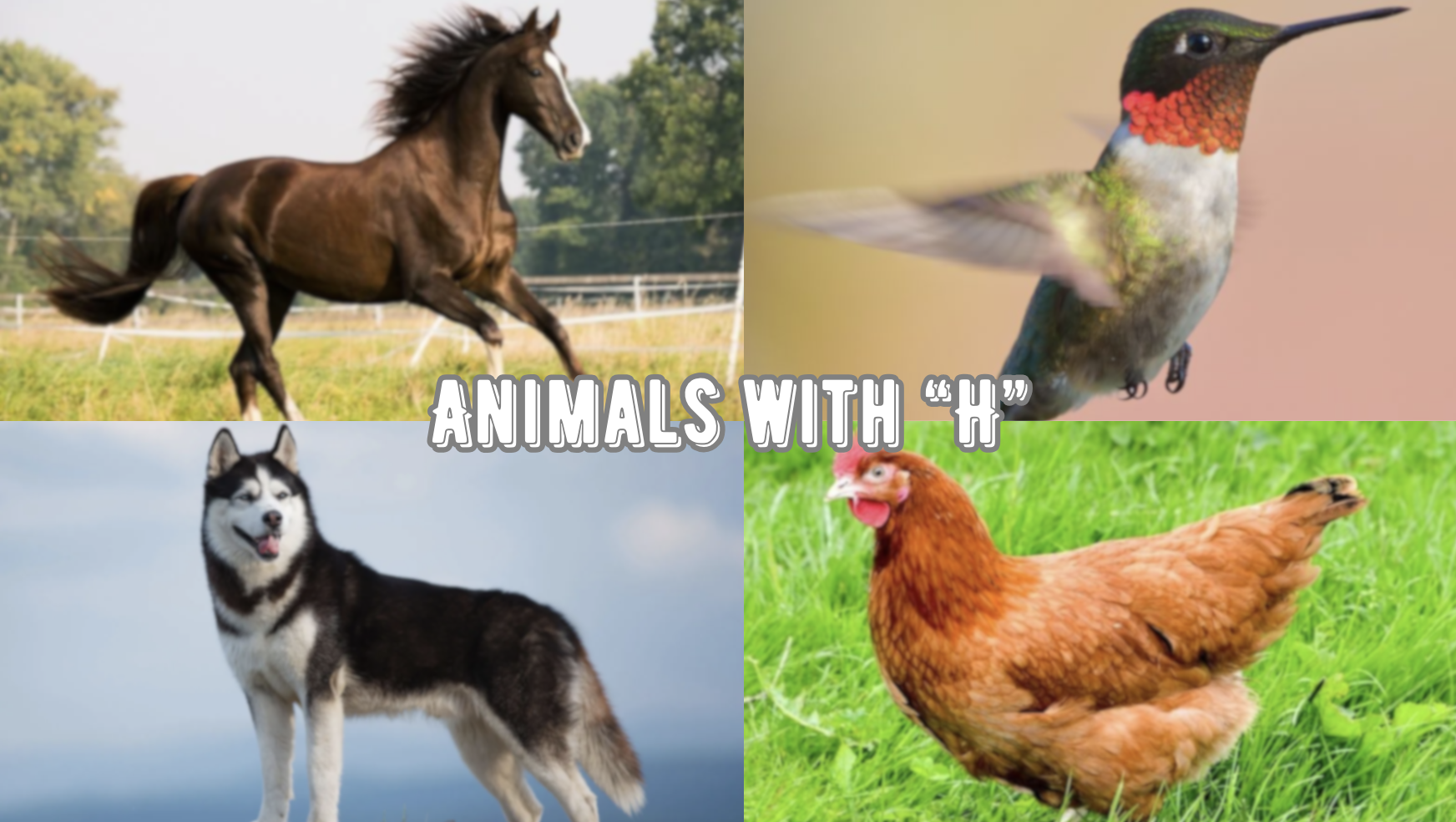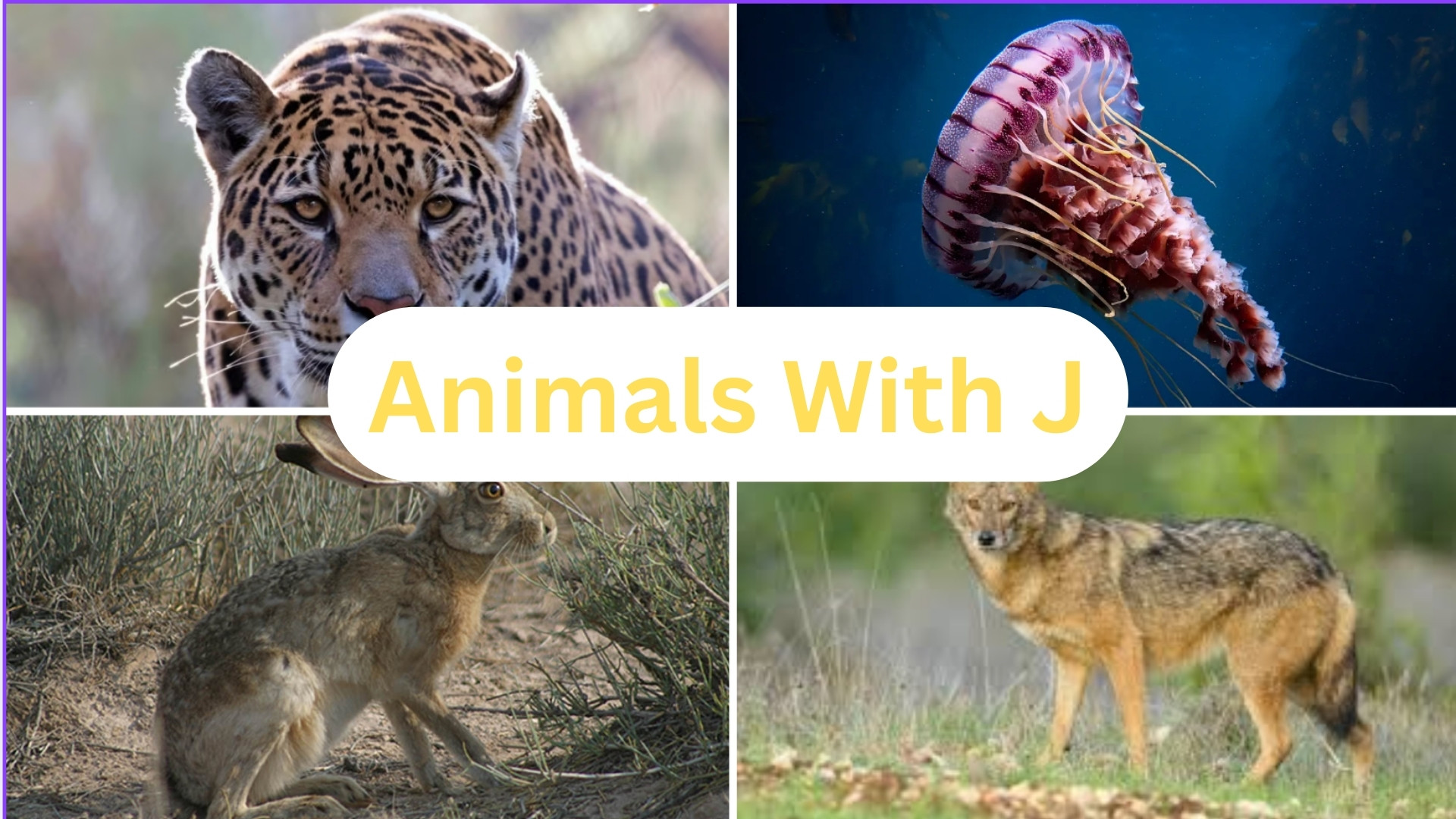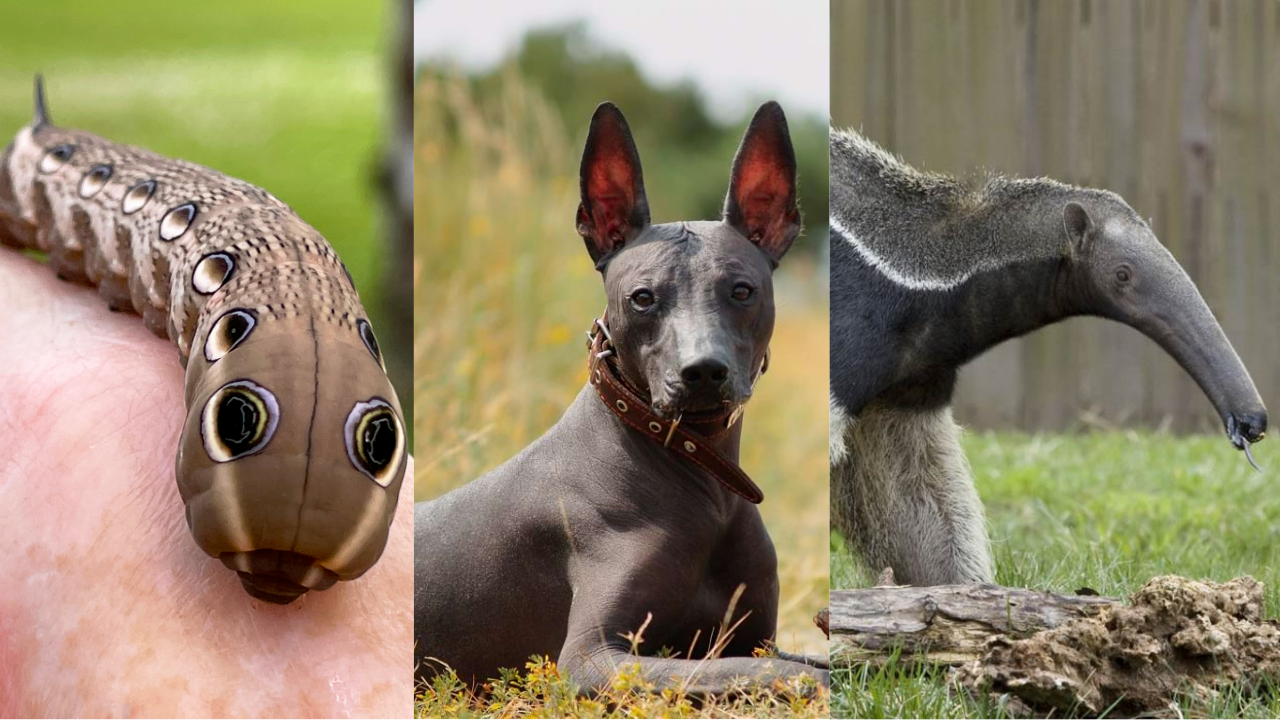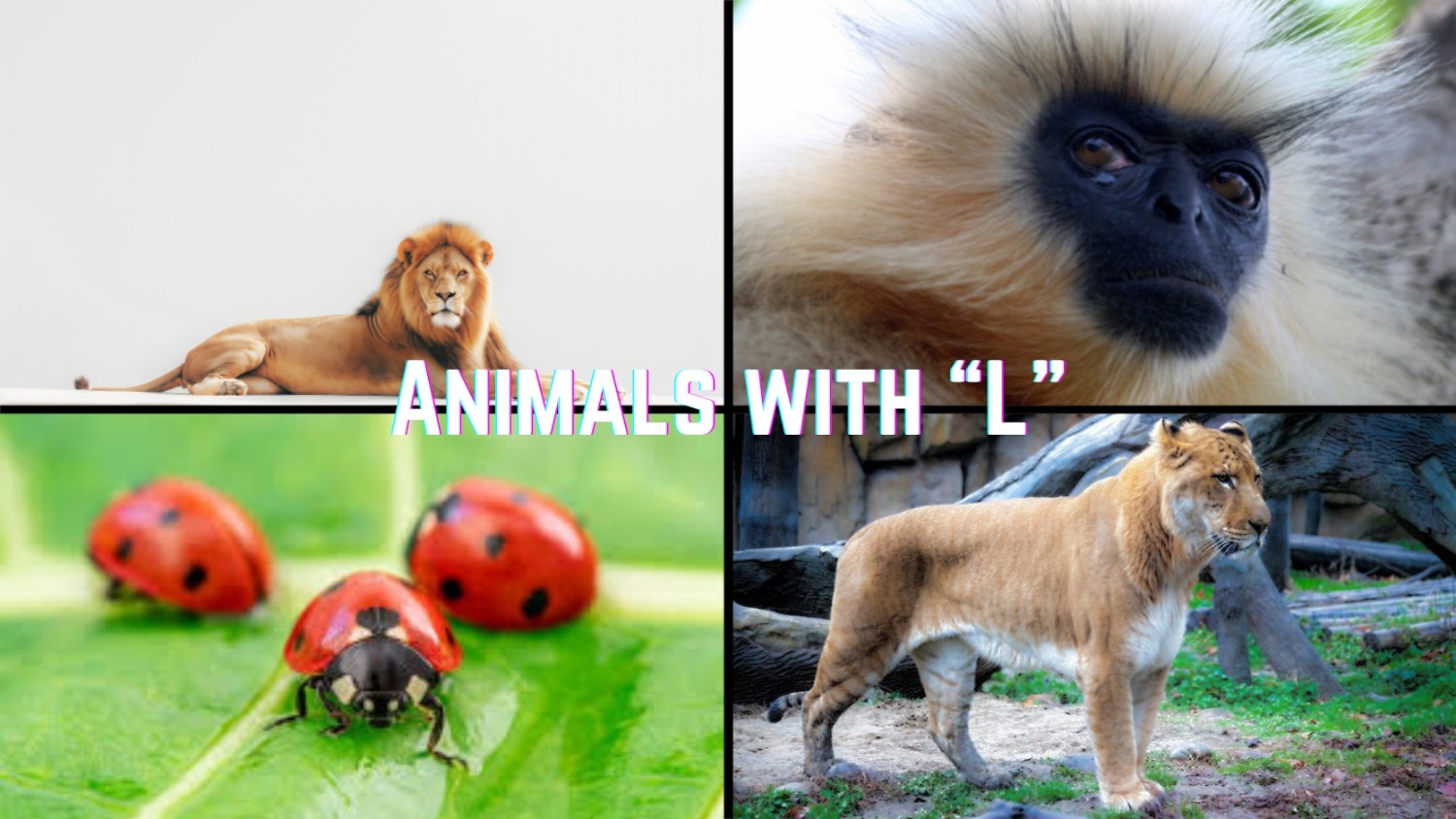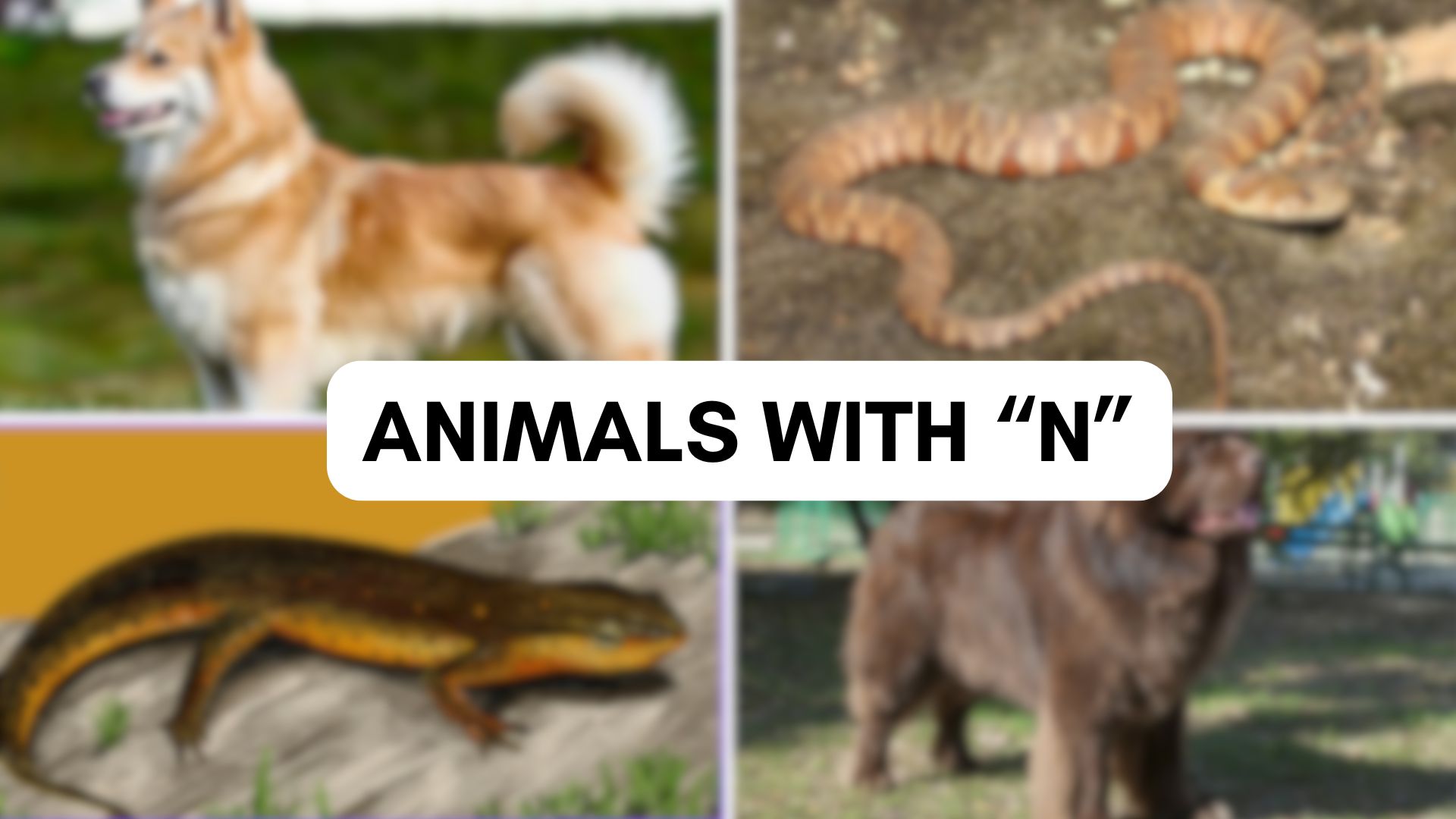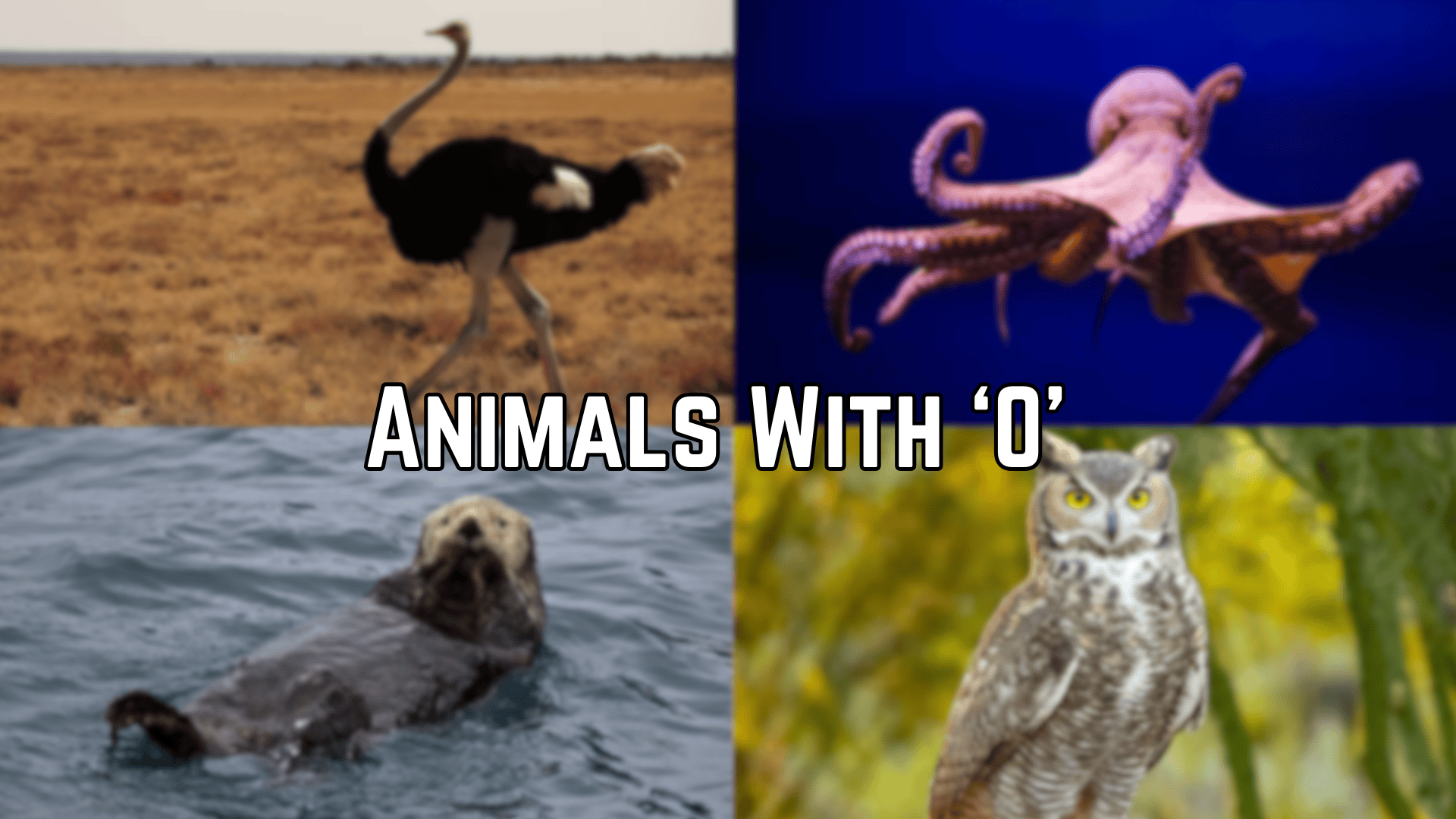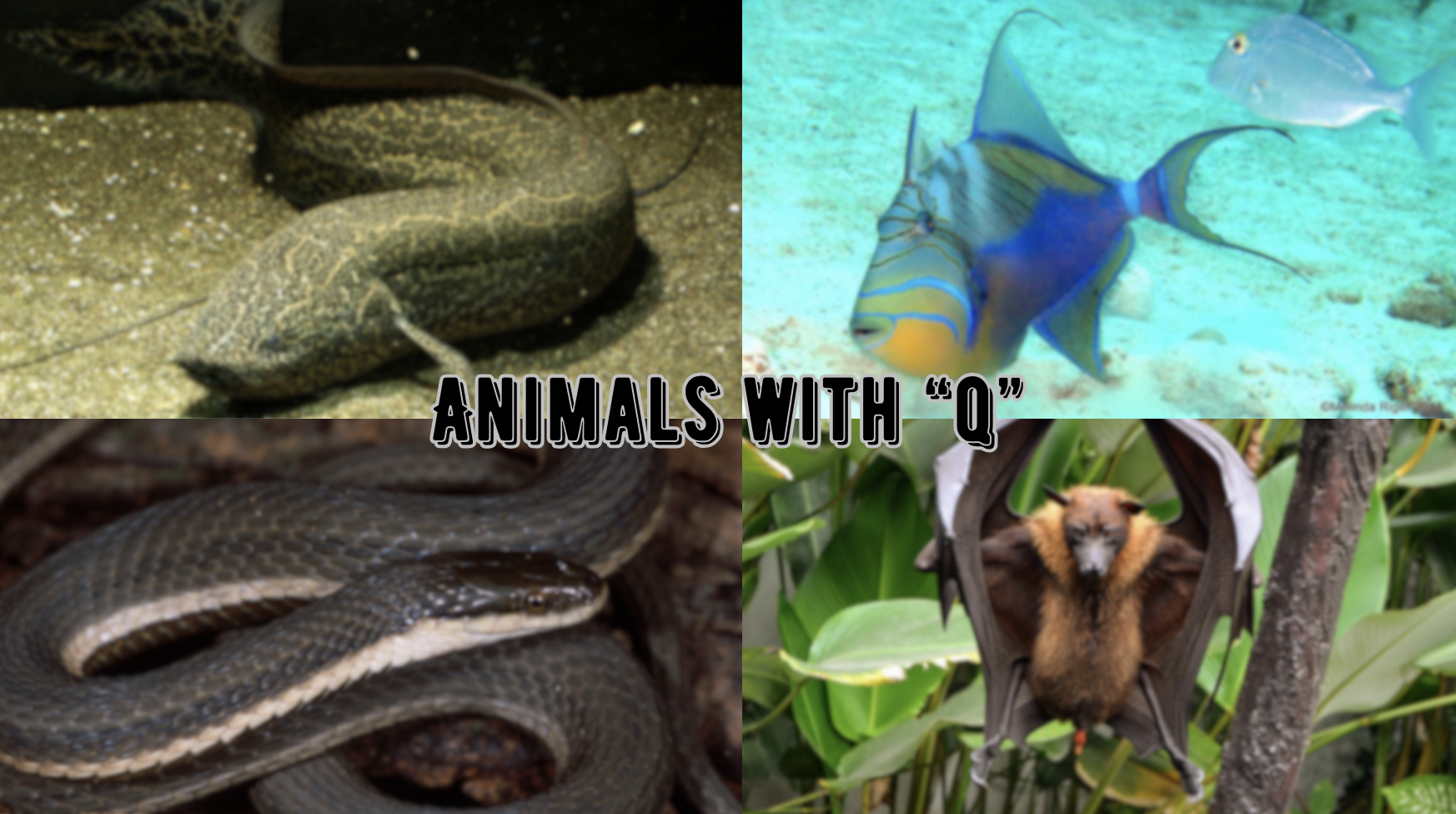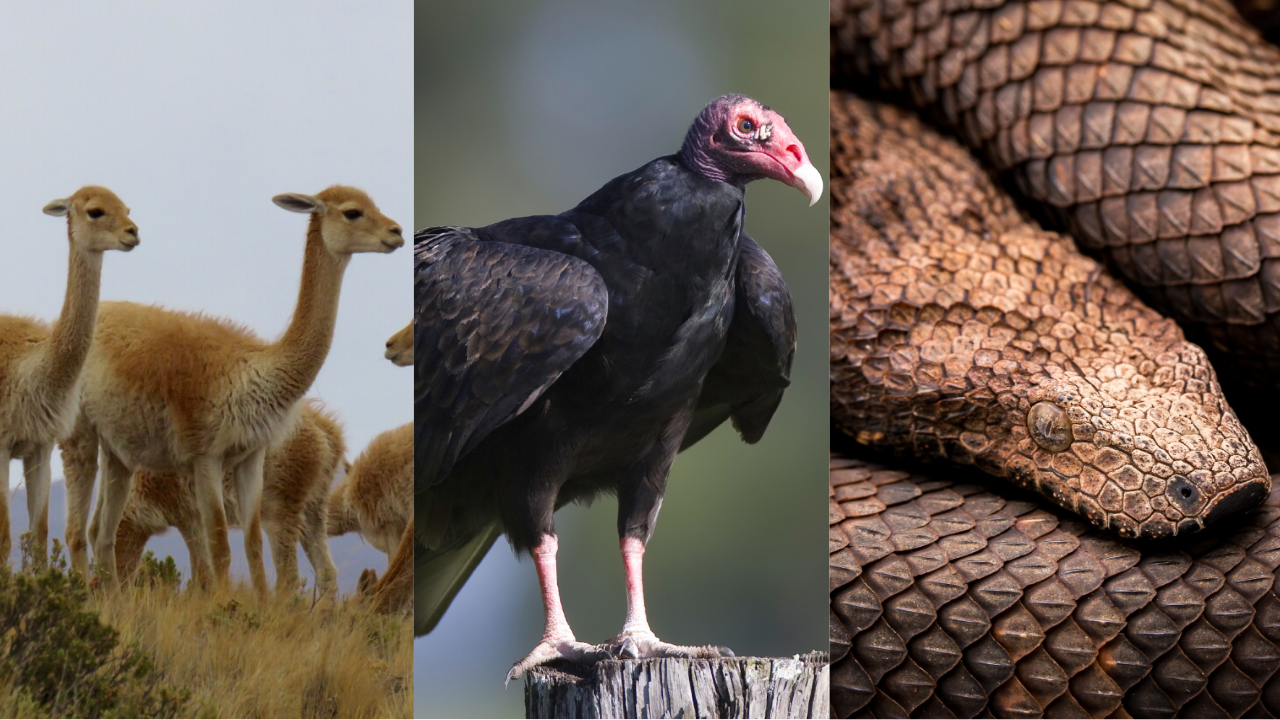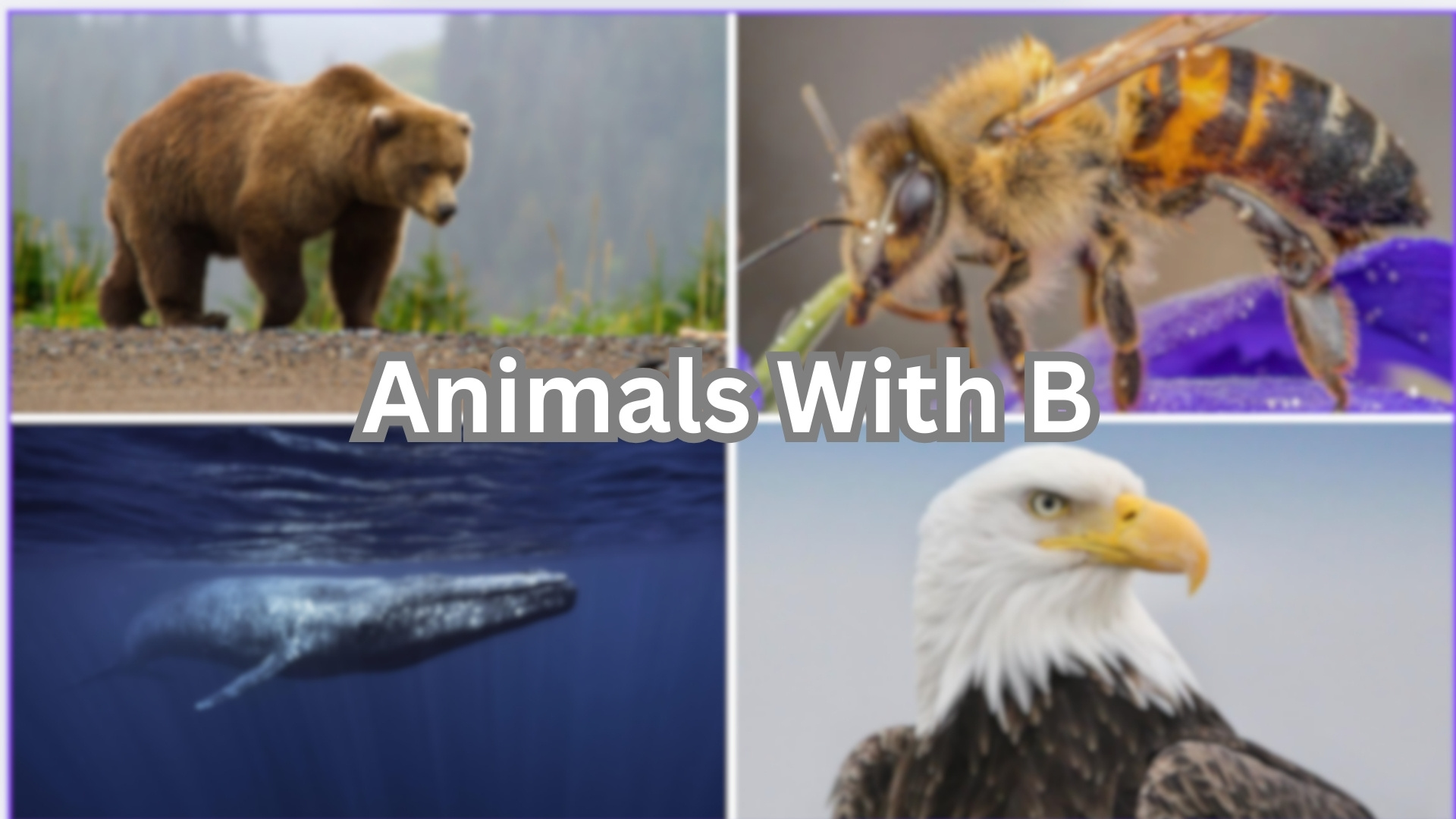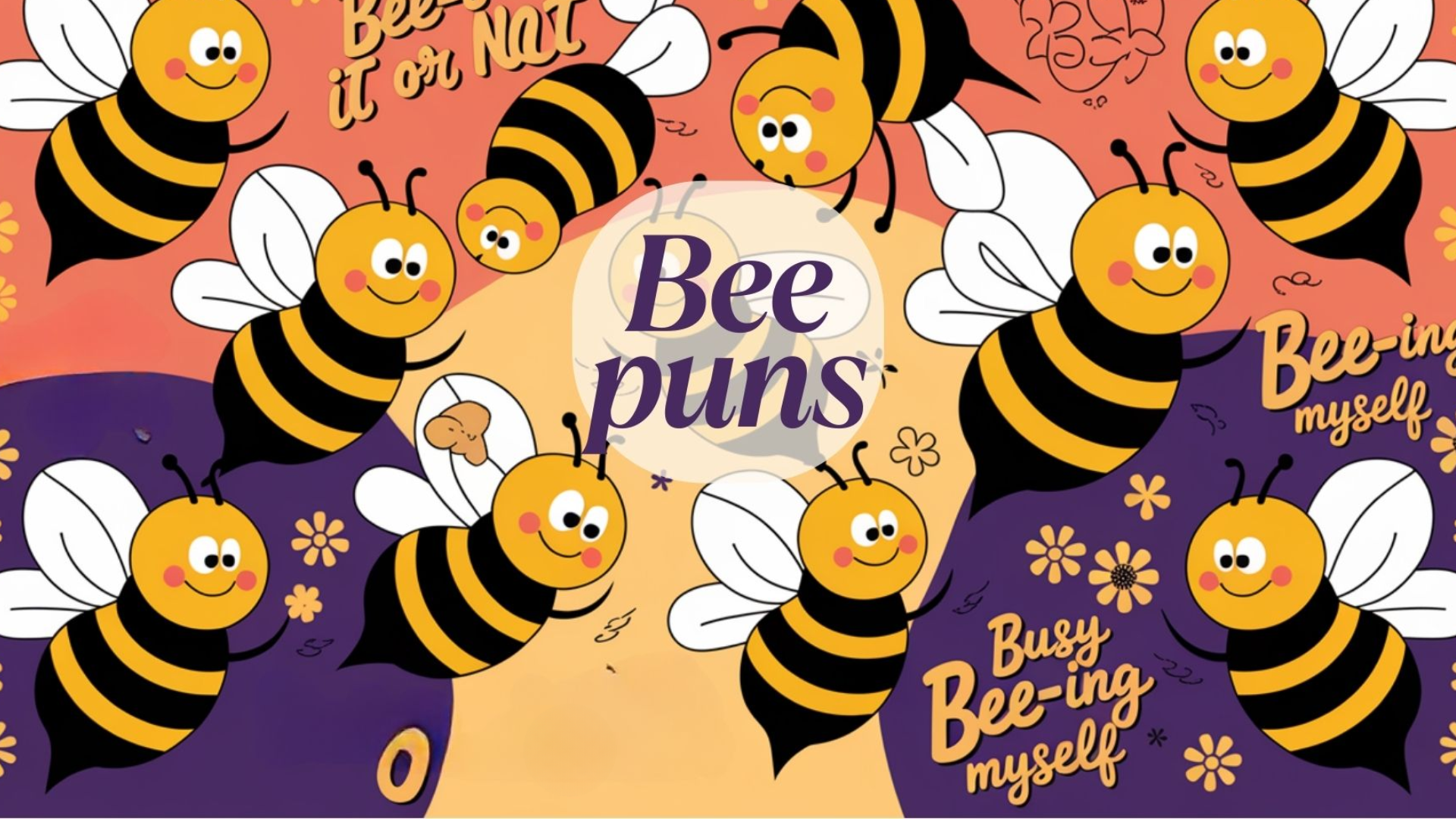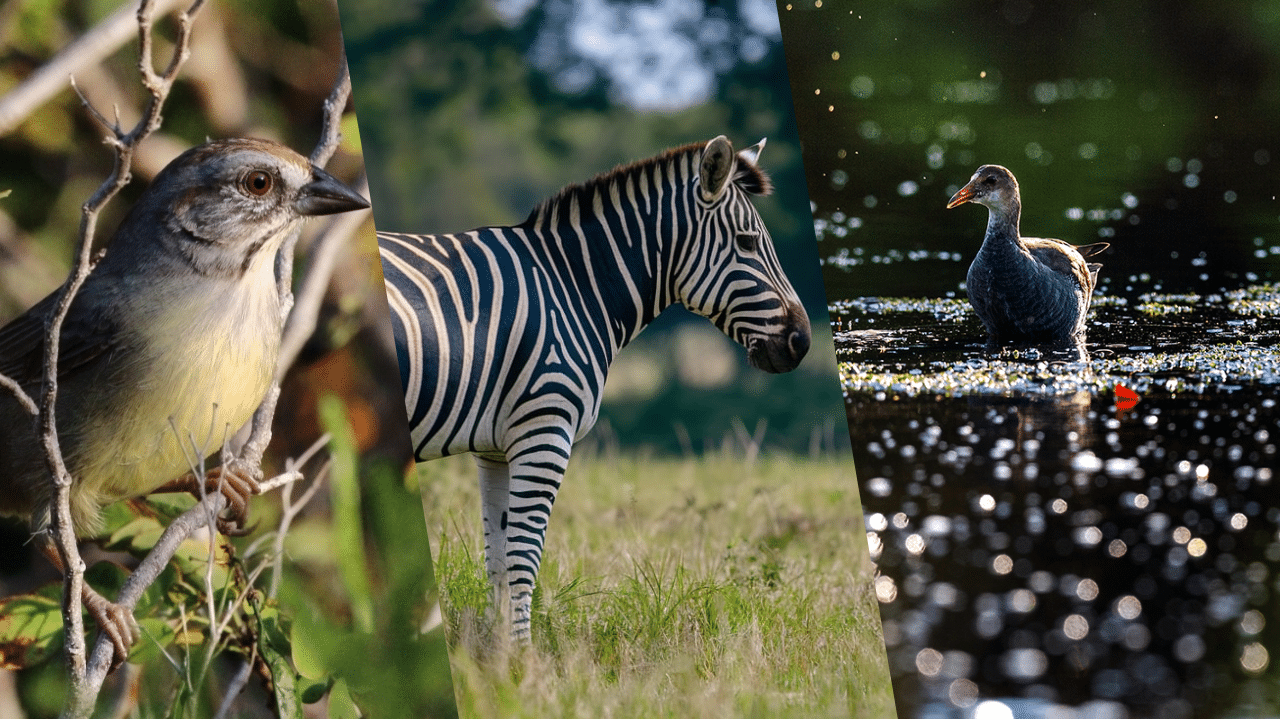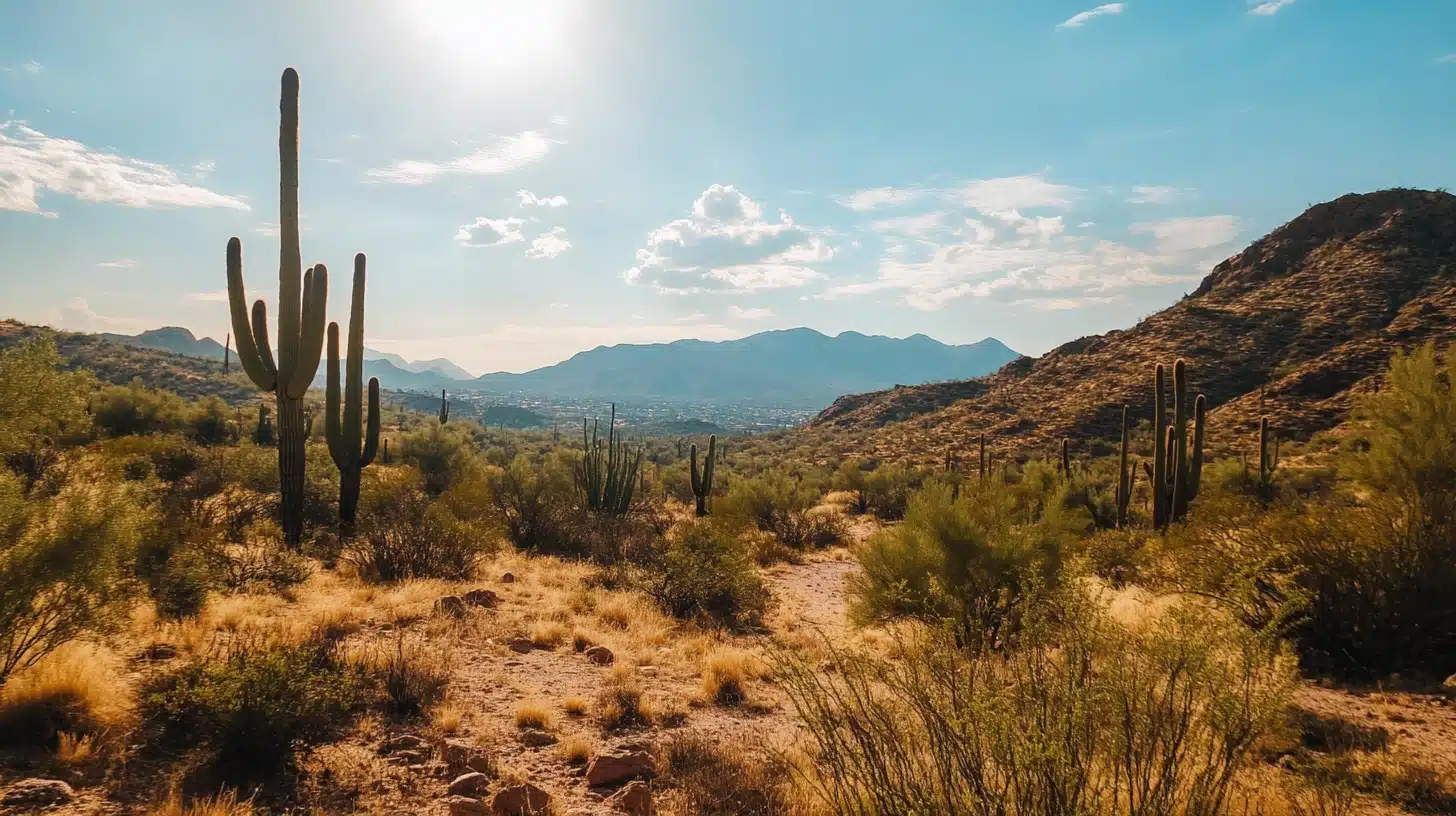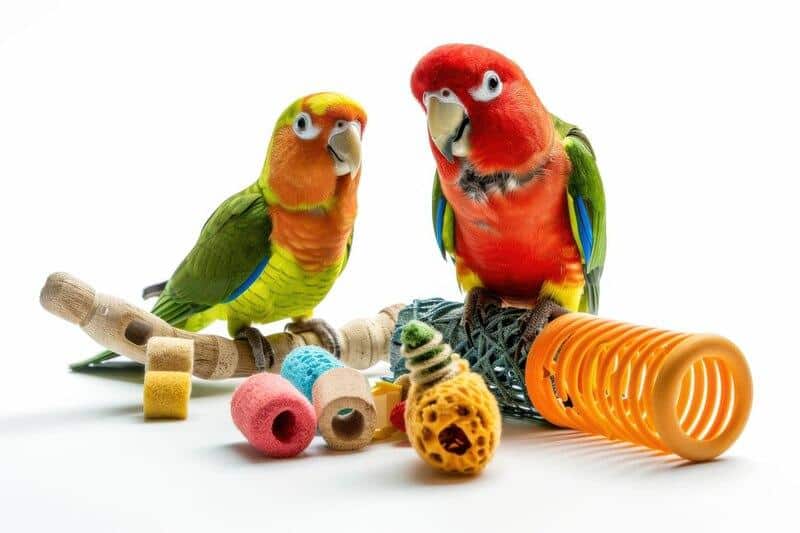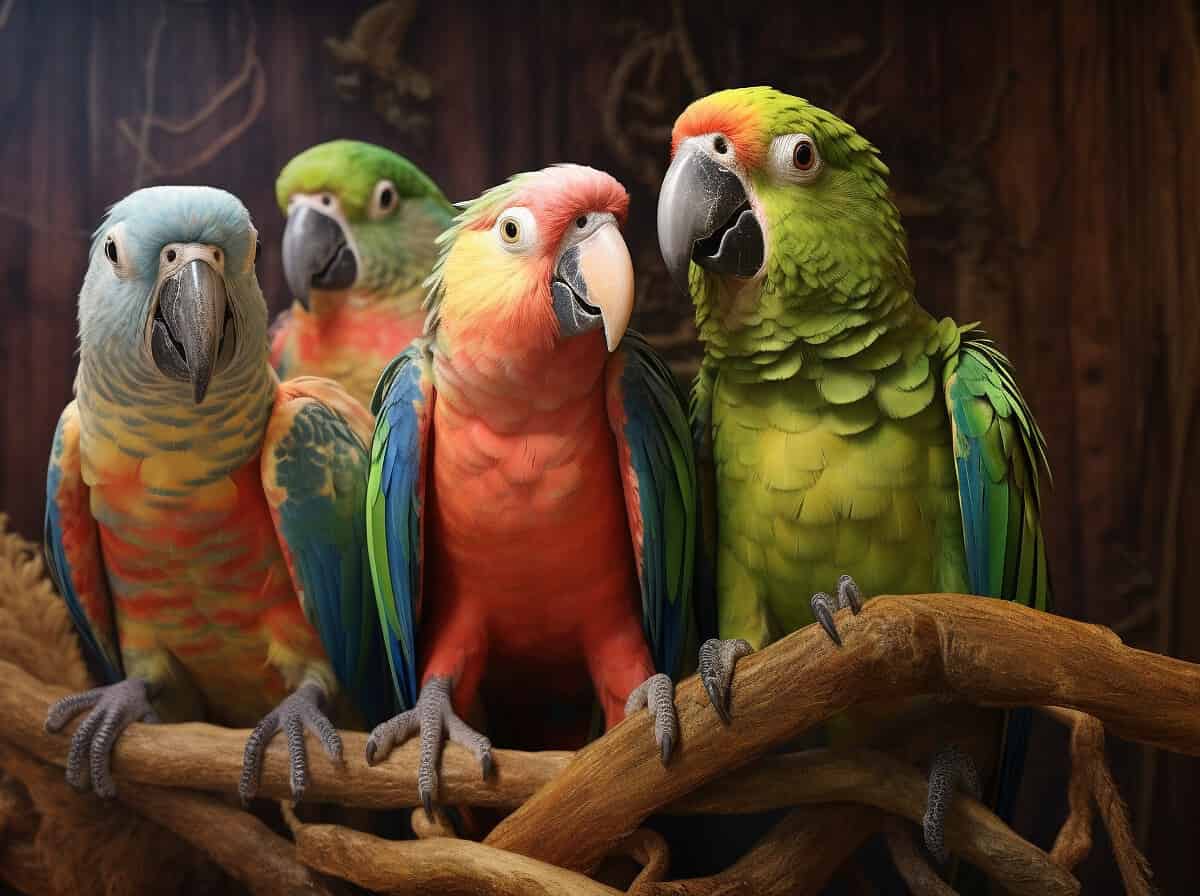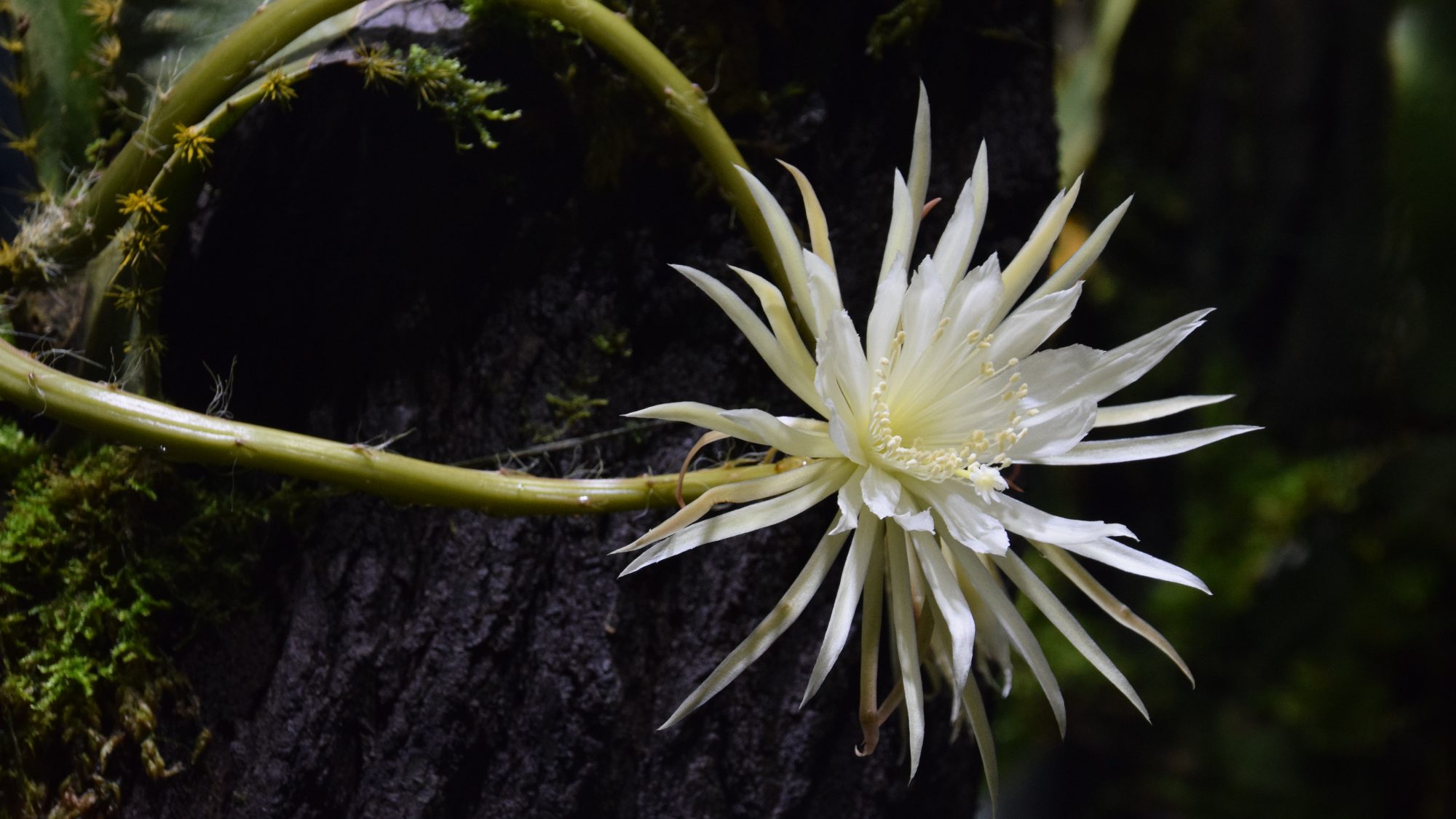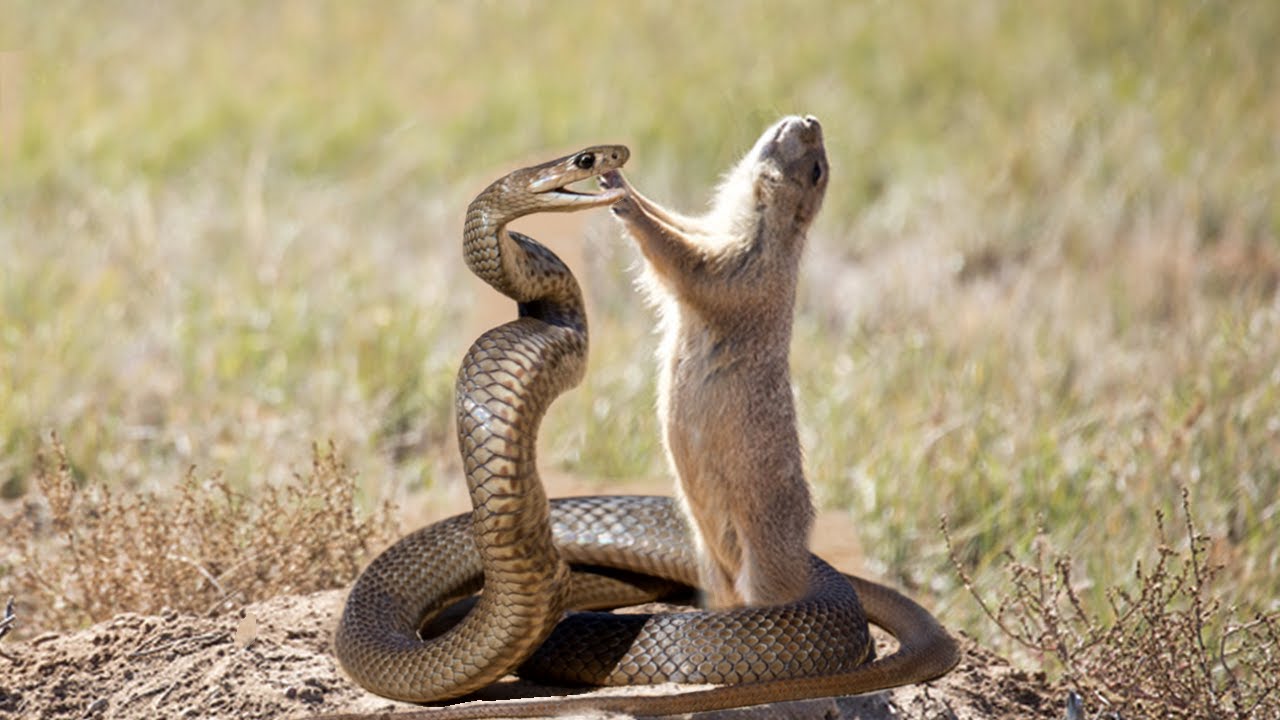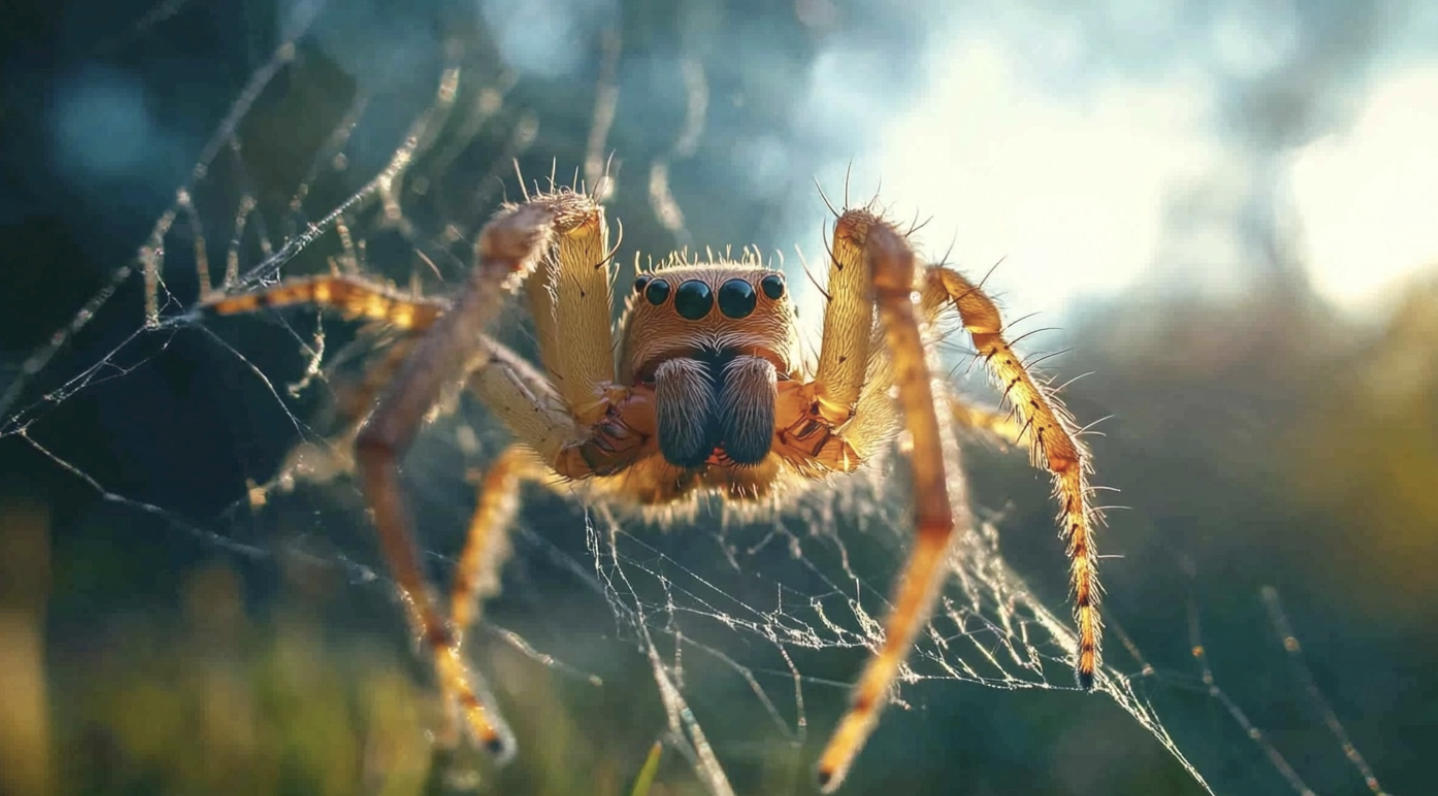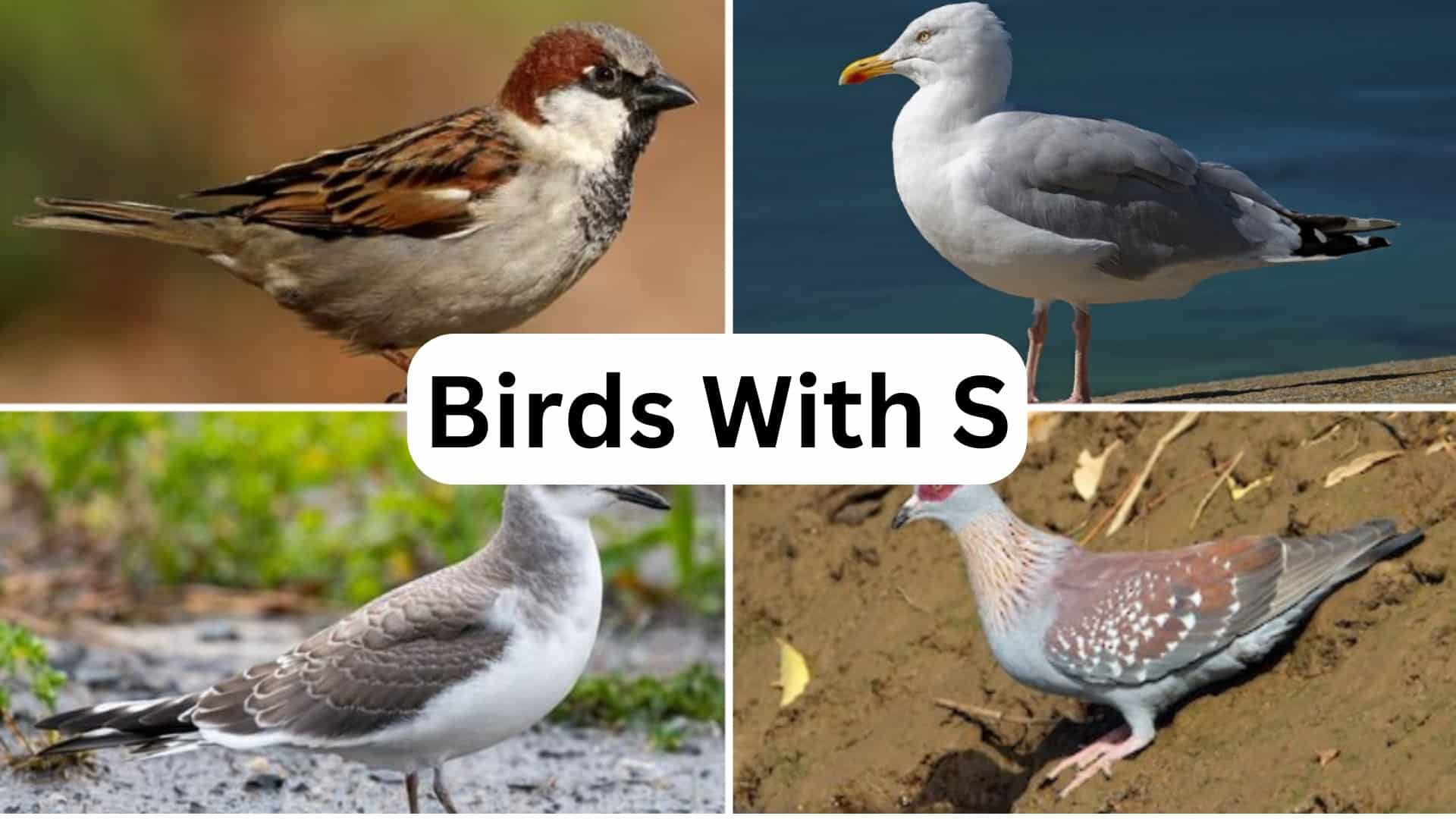
Tweet tweet! Did you know there are over 10,000 bird species in the world? That’s a lot of feathered friends!
Birds are incredible animals that stand out from the crowd. They have feathers instead of fur, beaks instead of mouths with teeth, and most can fly high in the sky.
Birds also lay eggs instead of having babies that are born alive. Their hollow bones help them stay light enough to soar through the air.
Ready to meet some birds whose names start with the letter S? From the swift swallow to the colorful scarlet tanager, these “S” birds will amaze you with their special skills and beautiful colors.
Keep reading to learn about these wonderful winged creatures and learn what makes each one special!
Commonly Known Birds That Begin With The Letter S
1. Snowy Owl
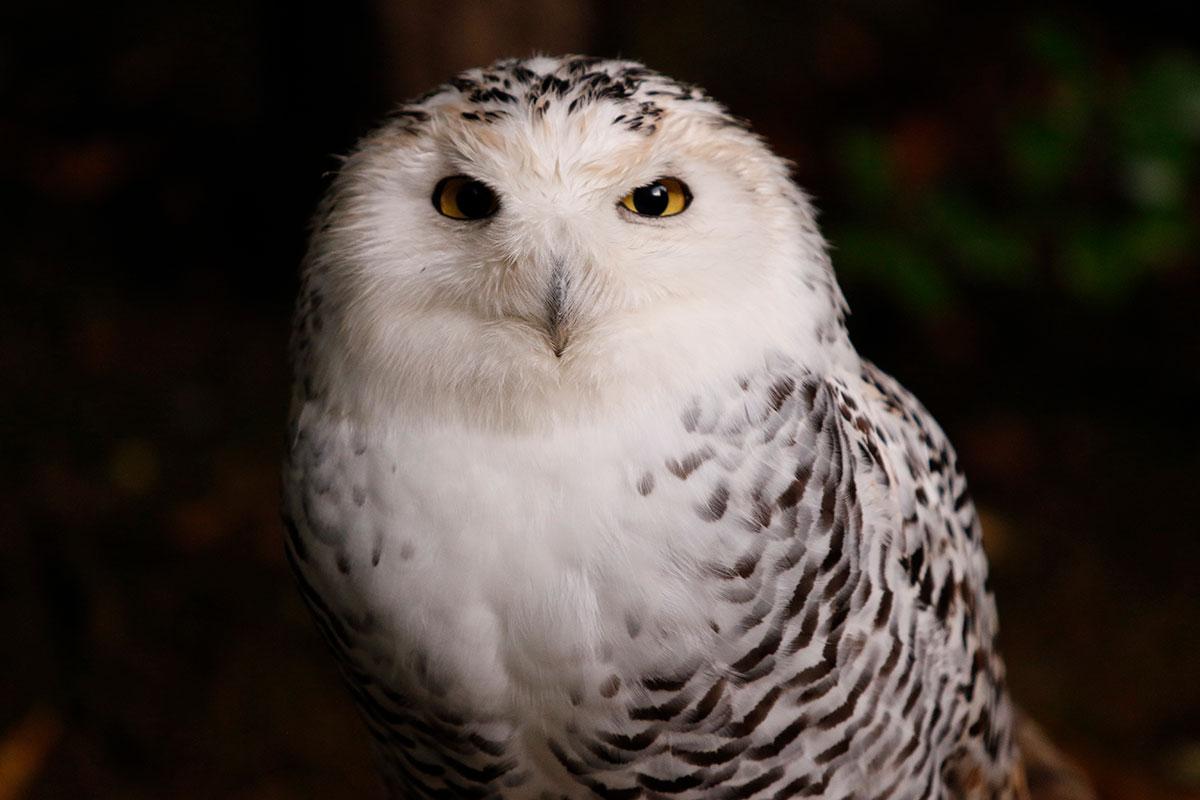
The Snowy Owl is a large, white owl with striking yellow eyes and thick feathers for insulation. It is well-adapted to cold Arctic environments.
- Region of Habitat: Arctic regions of North America and Eurasia
- Scientific Name: Bubo scandiacus
- Feeding Habits: Carnivorous; feeds on lemmings, small mammals, and birds
- What Sound They Make: A deep, booming hoot
Fun Facts
Unlike most owls, the Snowy Owl is active during the day, especially in summer. It can rotate its head up to 270 degrees to scan for prey.
2. Scarlet Macaw
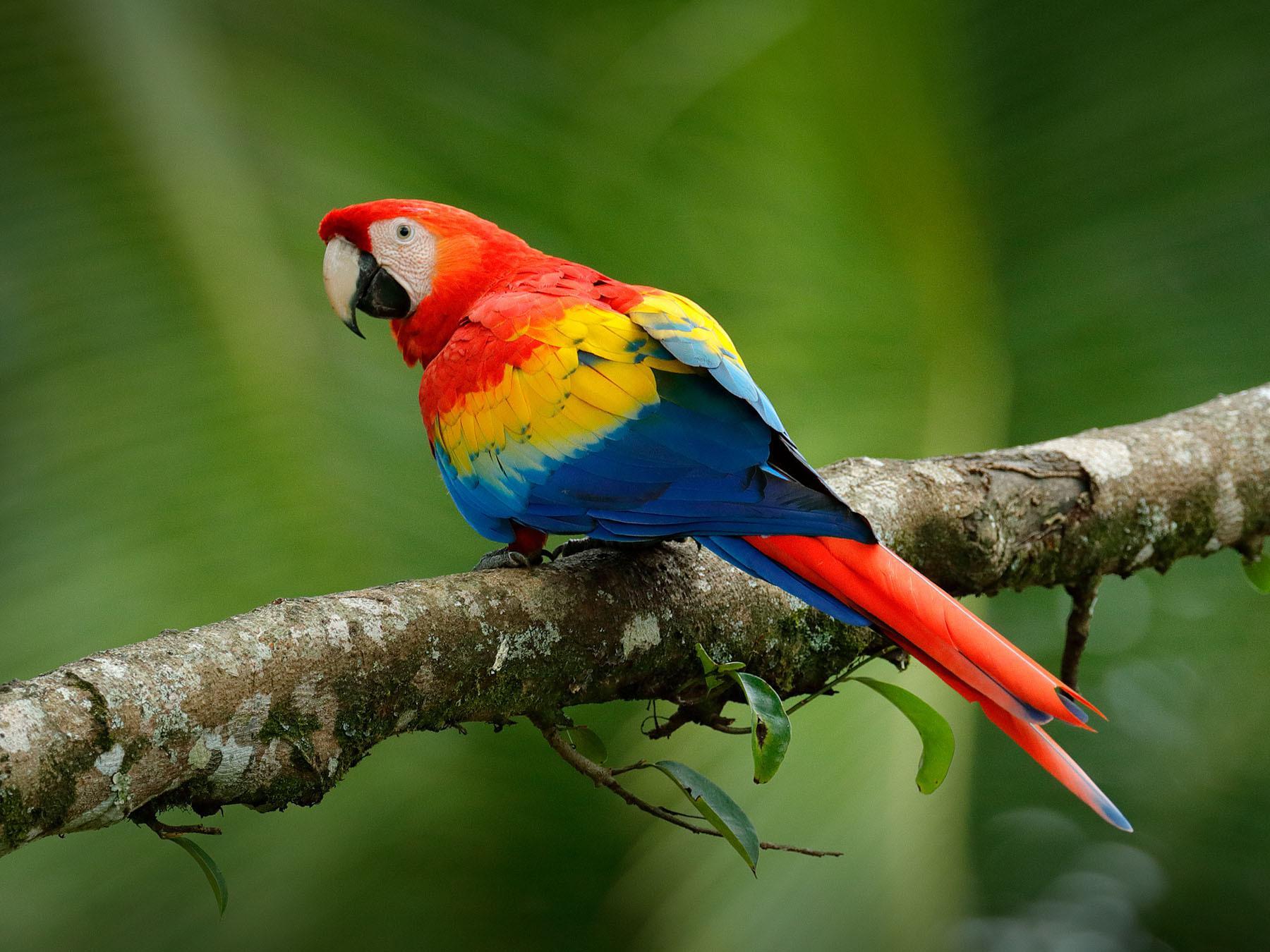
The Scarlet Macaw is a large, vibrantly colored parrot with red, blue, and yellow feathers. It is a strong flier and lives in tropical rainforests.
- Region of Habitat: Central and South America
- Scientific Name: Ara macao
- Feeding Habits: Herbivorous; eats fruits, nuts, and seeds
- What Sound They Make: Loud, squawking calls
Fun Facts
Scarlet Macaws can live up to 75 years in captivity. They use their strong beaks to crack open hard nuts and seeds.
3. Sandhill Crane
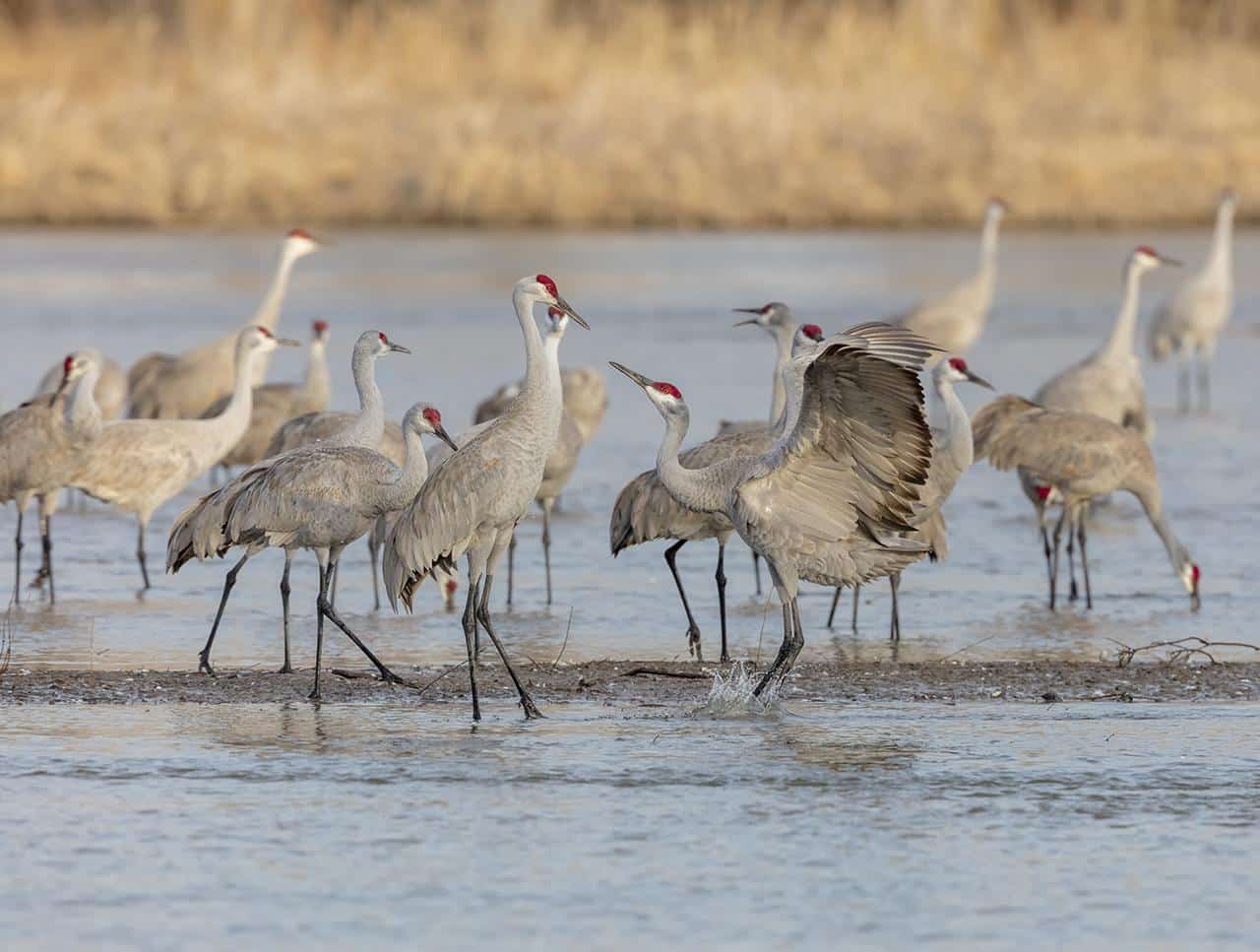
The Sandhill Crane is a tall, gray bird with a red forehead and long legs and neck. It is known for its graceful movements and loud calls.
- Region of Habitat: North America and northeastern Siberia
- Scientific Name: Antigone canadensis
- Feeding Habits: Omnivorous; eats grains, insects, small mammals, and amphibians
- What Sound They Make: Trumpeting calls that can be heard from miles away
Fun Facts
Sandhill Cranes perform complex courtship dances involving bowing, jumping, and wing-flapping. Some populations migrate over 10,000 miles annually.
4. Secretary Bird
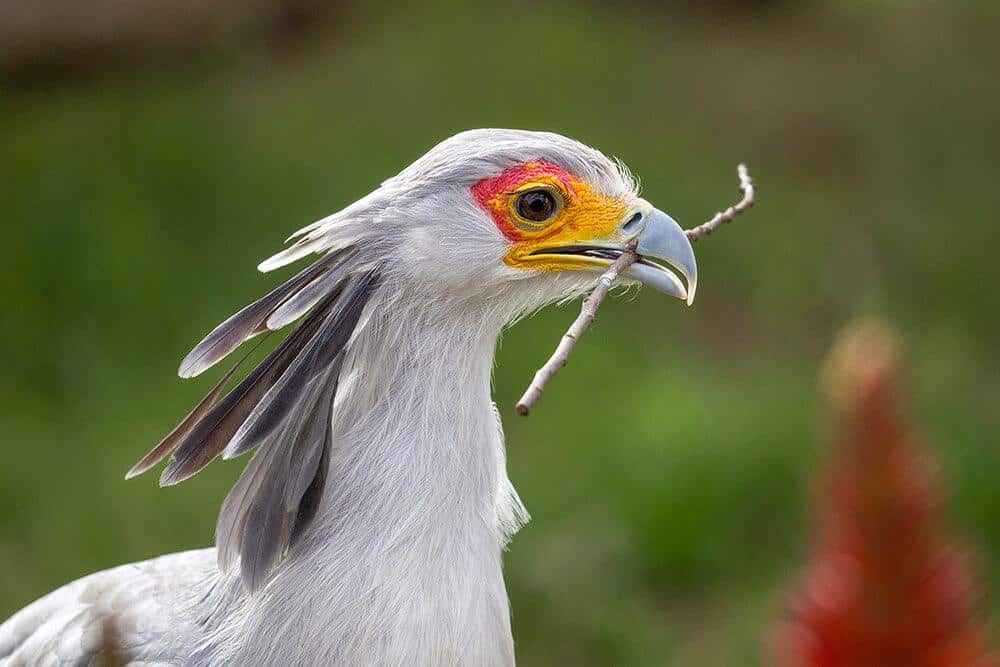
The Secretary Bird is a large, long-legged raptor known for its unique appearance and terrestrial hunting style. It preys mainly on snakes and insects.
- Region of Habitat: Sub-Saharan Africa
- Scientific Name: Sagittarius serpentarius
- Feeding Habits: Carnivorous; feeds on snakes, insects, and small animals
- What Sound They Make: Low hoots, clucks, and groans
Fun Facts
Despite its size, the Secretary Bird is a skilled flier. It uses its powerful legs to stomp and kill prey, especially venomous snakes.
5. Silver Gull
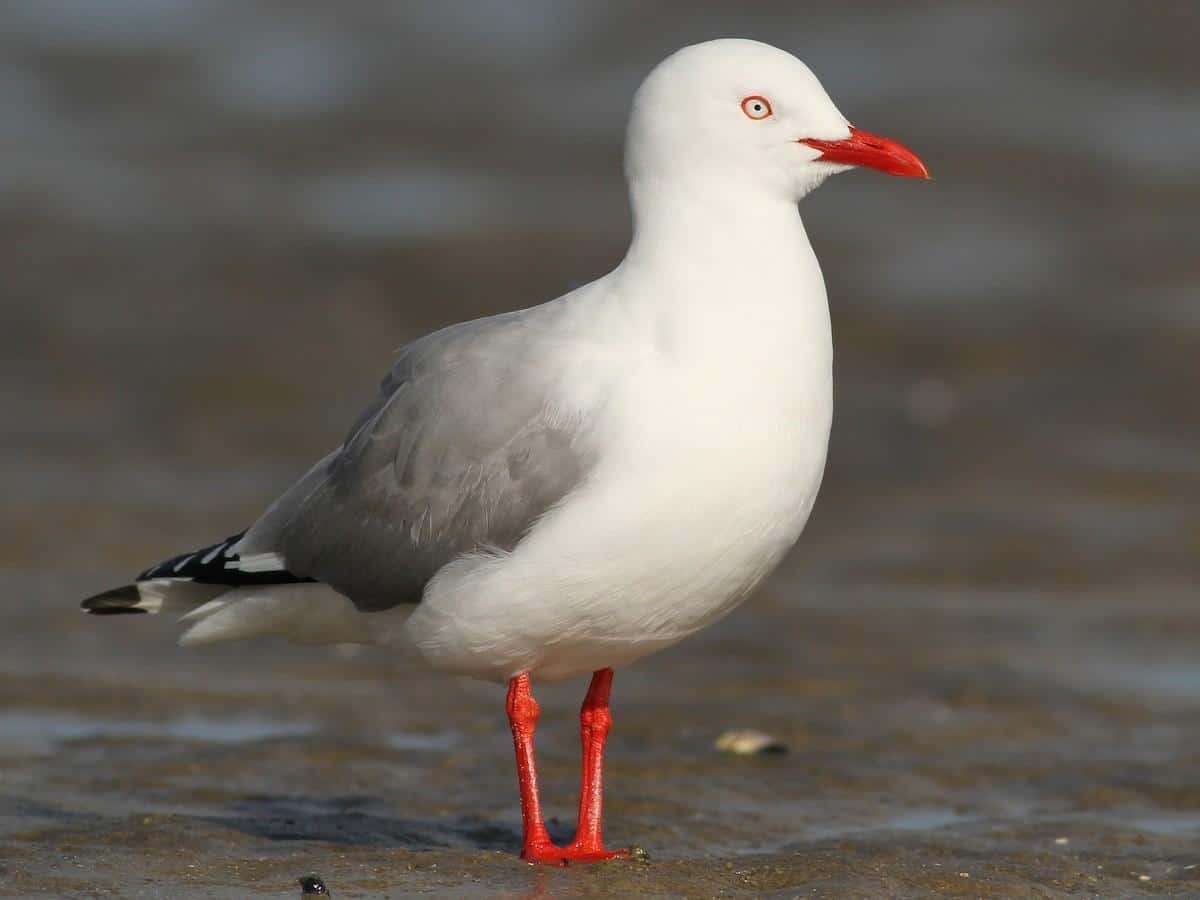
The Silver Gull is a common coastal bird with white plumage, gray wings, and a red bill. It is often seen scavenging in urban areas.
- Region of Habitat: Coastal regions of Australia and New Zealand
- Scientific Name: Chroicocephalus novaehollandiae
- Feeding Habits: Omnivorous; eats fish, insects, and human food scraps
- What Sound They Make: Harsh, laughing squawks
Fun Facts
Silver Gulls are highly adaptable and can thrive in city environments. They often follow fishing boats to feed on a discarded catch.
6. Sand Martin
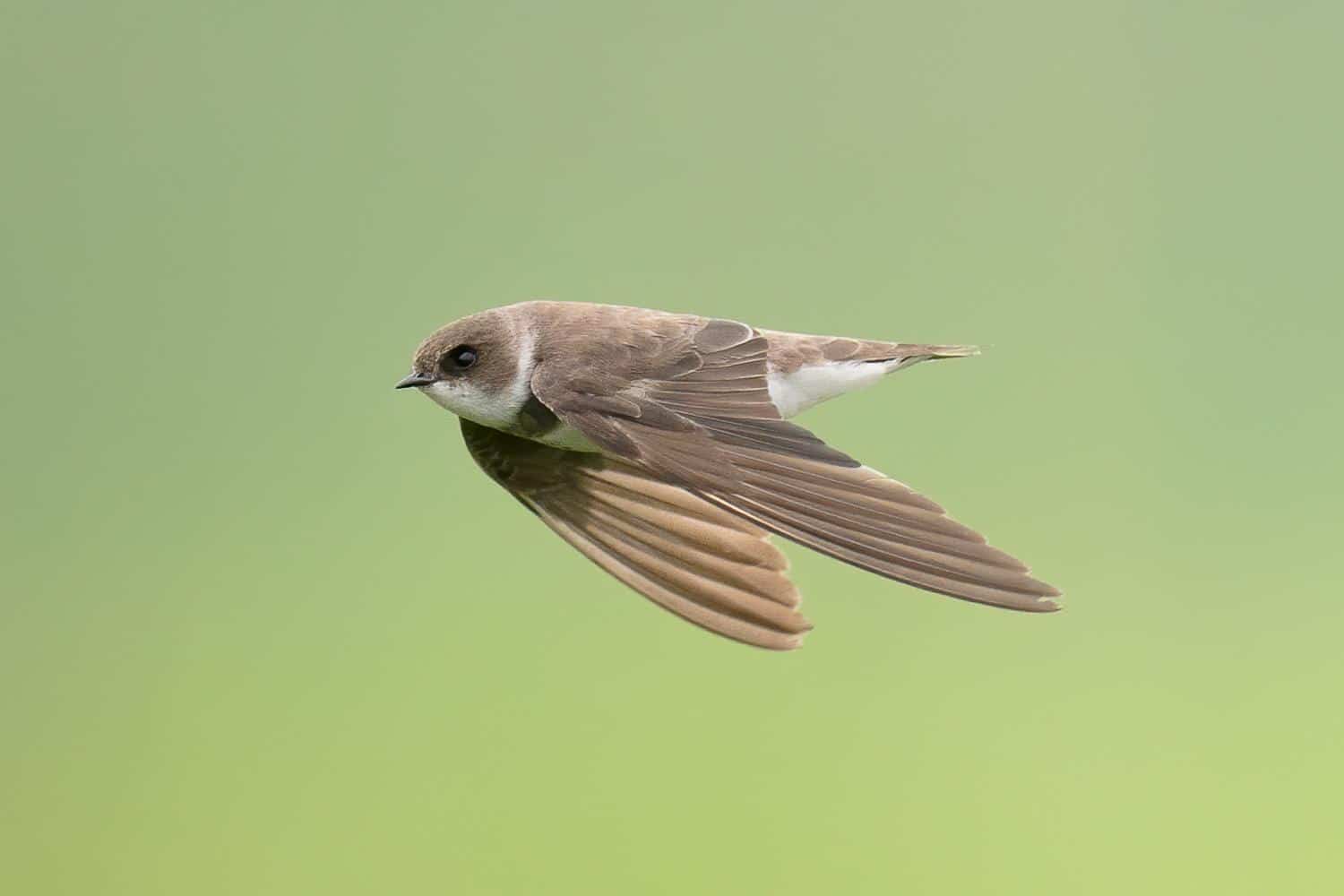
The Sand Martin is a small, brown-and-white swallow that nests in colonies along sandy riverbanks. It is agile in flight and migratory.
- Region of Habitat: Europe, Asia, North America, and Africa
- Scientific Name: Riparia riparia
- Feeding Habits: Insectivorous; feeds on flying insects
- What Sound They Make: Continuous, twittering calls
Fun Facts
Sand Martins dig burrows in sandy cliffs to nest. They travel thousands of miles between breeding and wintering grounds.
7. Snow Goose
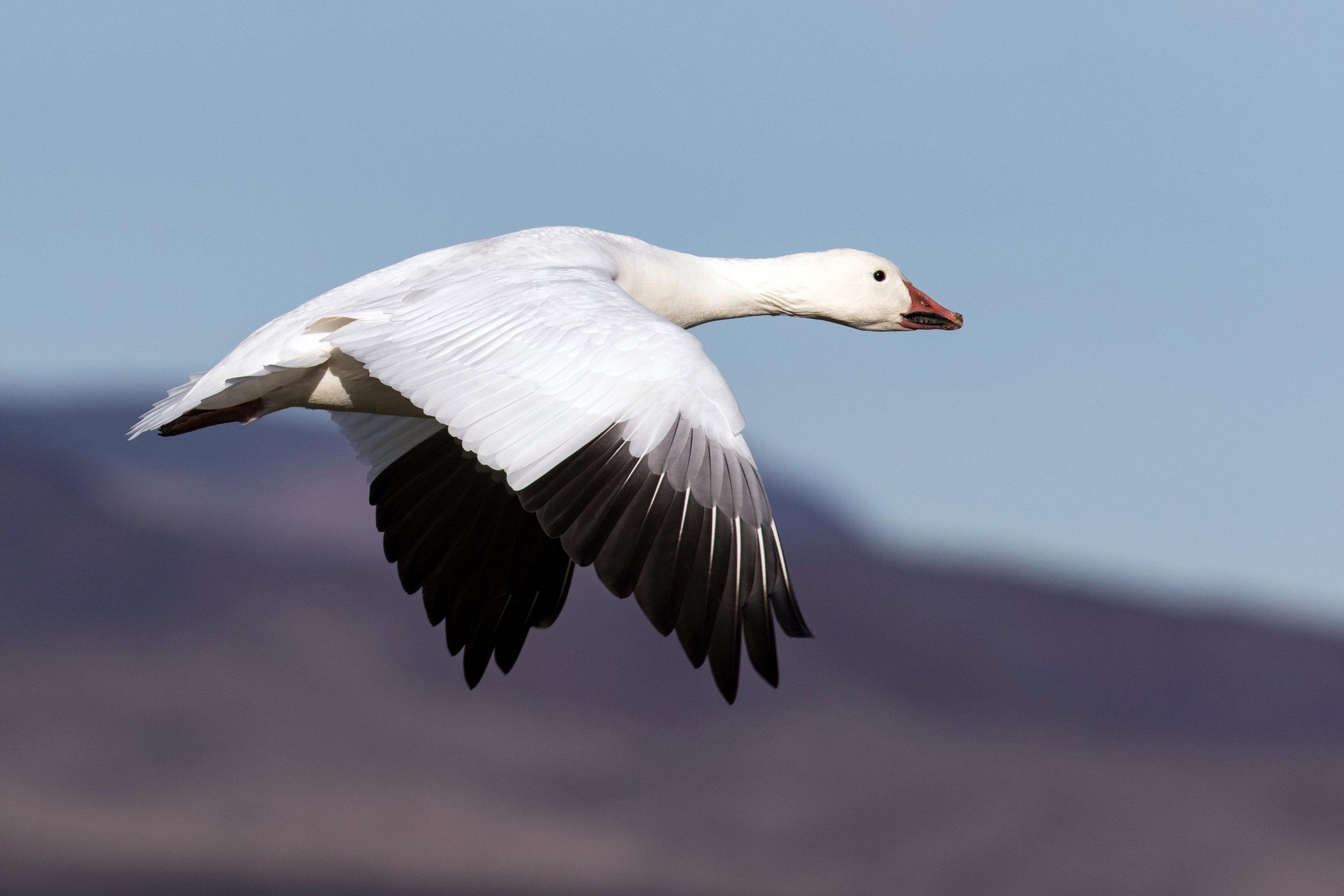
The Snow Goose is a medium-sized goose with white plumage and black wingtips. It migrates in large, noisy flocks.
- Region of Habitat: North America
- Scientific Name: Anser caerulescens
- Feeding Habits: Herbivorous; grazes on grasses, grains, and aquatic plants
- What Sound They Make: High-pitched honks
Fun Facts
Snow Geese can travel over 3,000 miles during migration. They often feed in large groups and can cause damage to crops.
8. Swan
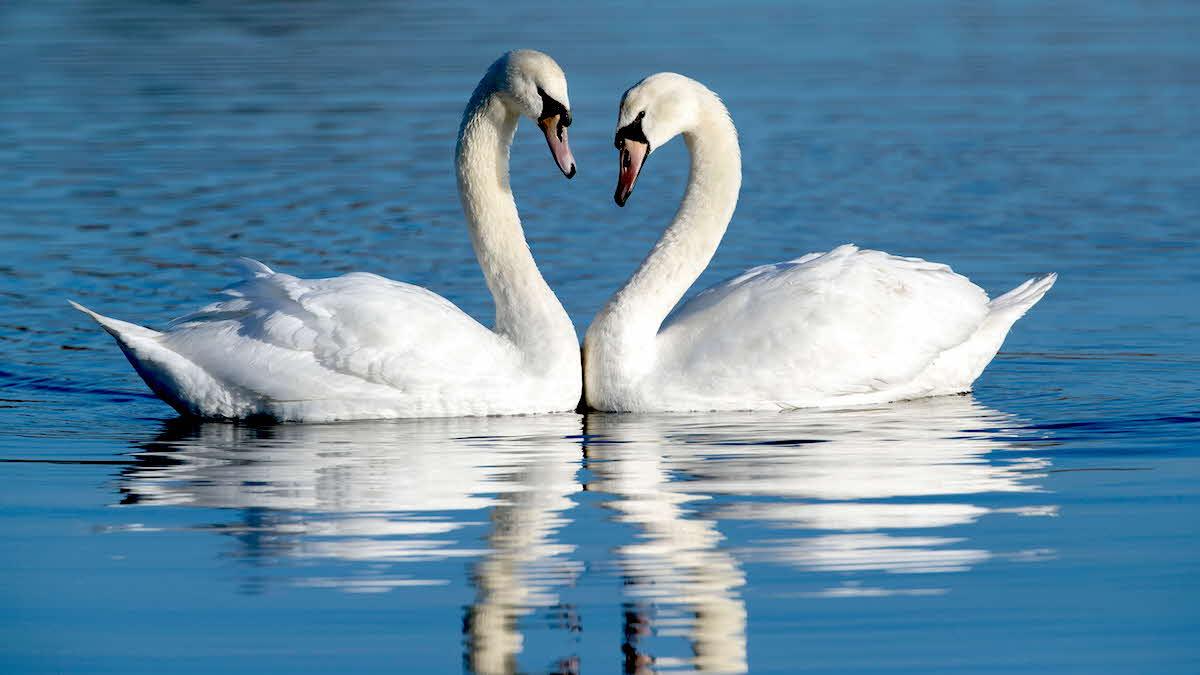
Swans are large, beautiful water birds with long necks and white feathers. They are known for their graceful swimming and strong bonds.
- Region of Habitat: North America, Europe, and Asia
- Scientific Name: Cygnus spp.
- Feeding Habits: Herbivorous; feeds on aquatic plants and algae
- What Sound They Make: Soft trumpeting or honking
Fun Facts
Swans typically mate for life. Some species, like the Mute Swan, can be quite territorial and protective of their young.
9. Song Sparrow
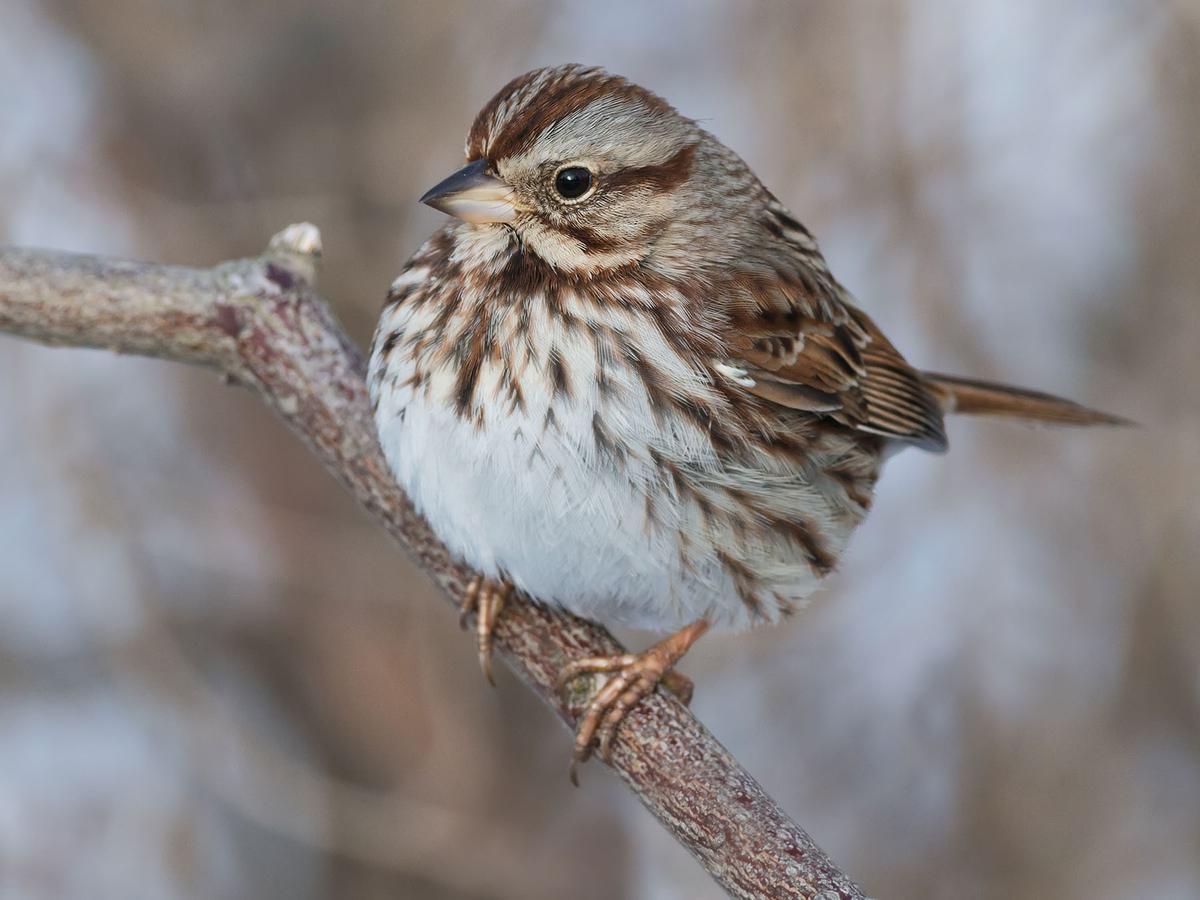
The Song Sparrow is a small, streaked brown bird with a distinctive melodic song. It is common in gardens and fields.
- Region of Habitat: North America
- Scientific Name: Melospiza melodia
- Feeding Habits: Omnivorous; eats seeds, insects, and berries
- What Sound They Make: Cheerful, musical trills
Fun Facts
Each Song Sparrow has a unique song pattern. They adapt well to urban environments and can be found year-round in many regions.
10. Screech Owl
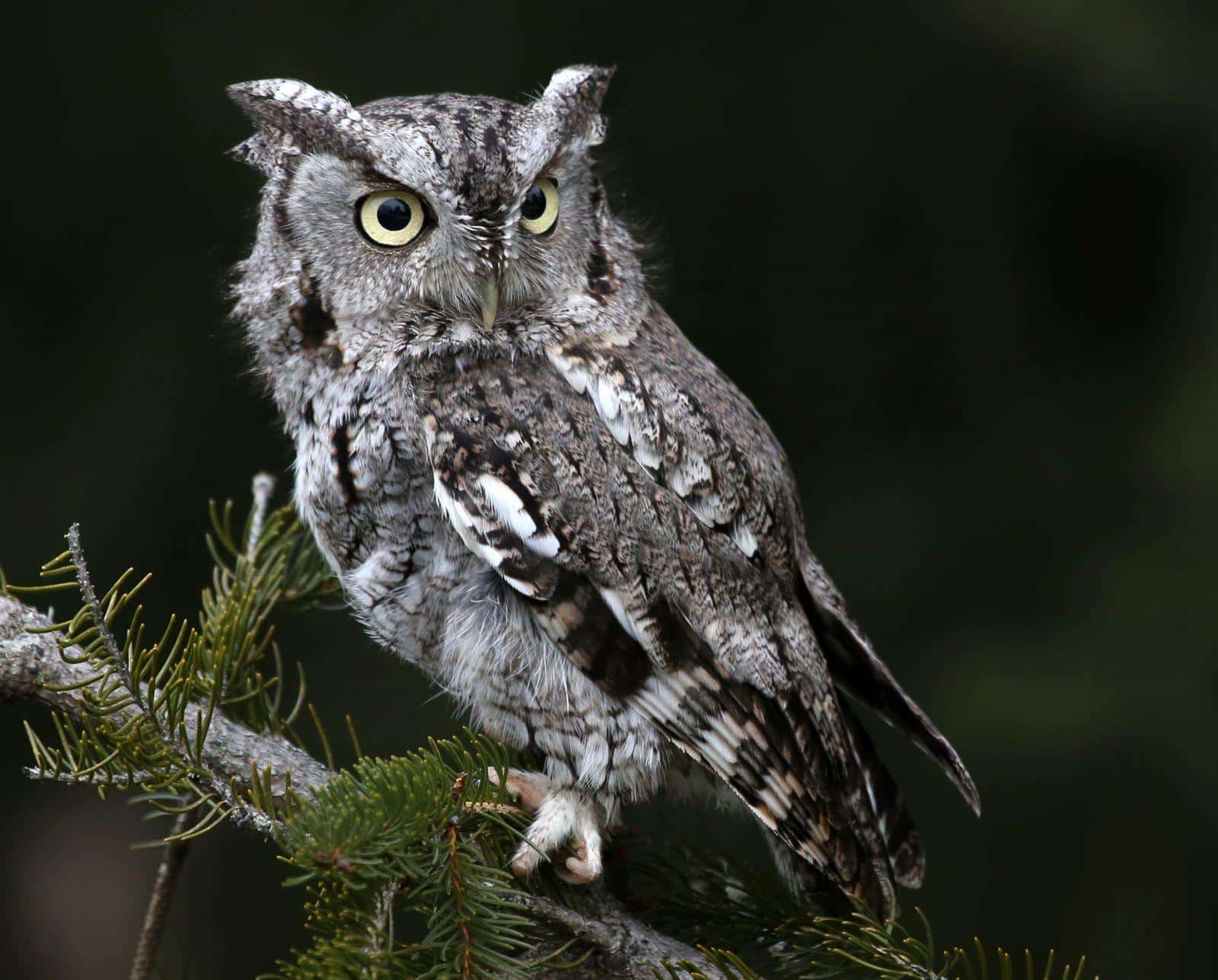
The Screech Owl is a small owl with excellent camouflage and tufted ears. It is nocturnal and often heard rather than seen.
- Region of Habitat: North and Central America
- Scientific Name: Megascops spp.
- Feeding Habits: Carnivorous; feeds on insects, small mammals, and birds
- What Sound They Make: Trills and eerie, descending whinnies
Fun Facts
Screech Owls use tree cavities for nesting. Their plumage helps them blend perfectly with tree bark to avoid predators.
11. Shrike
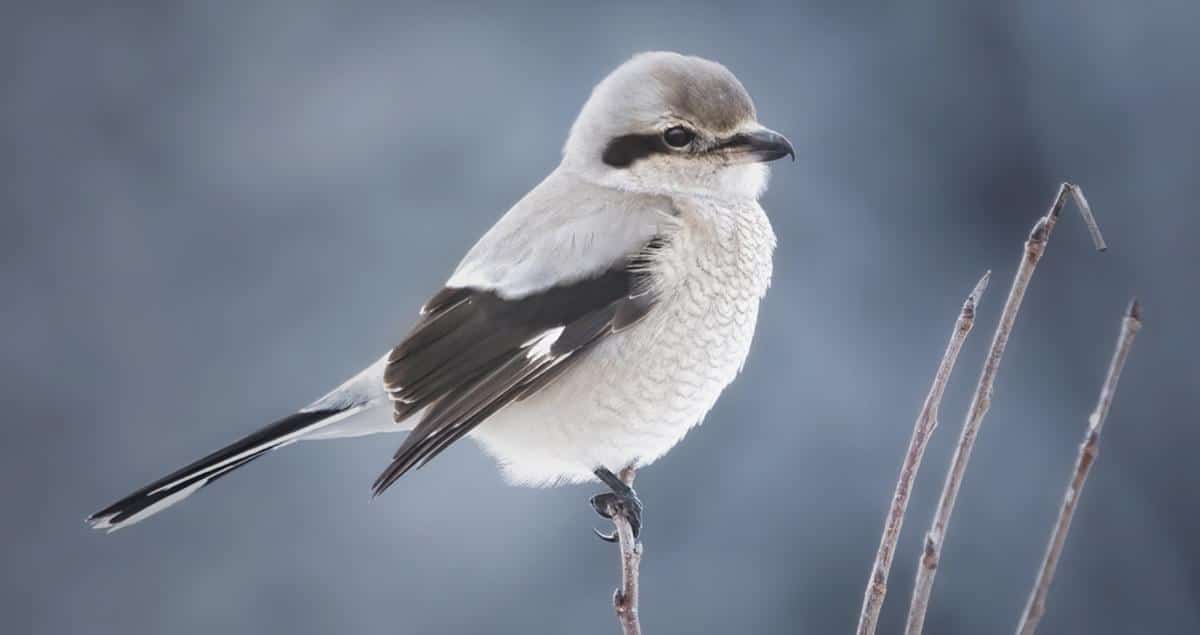
Shrikes are small predatory birds known for impaling prey on thorns. They resemble songbirds but act like raptors.
- Region of Habitat: Europe, Asia, Africa, and North America
- Scientific Name: Lanius spp.
- Feeding Habits: Carnivorous; eats insects, small birds, and rodents
- What Sound They Make: Harsh calls and chattering
Fun Facts
Shrikes often store food by skewering it on sharp objects. Despite their small size, they are bold and aggressive hunters.
12. Skylark
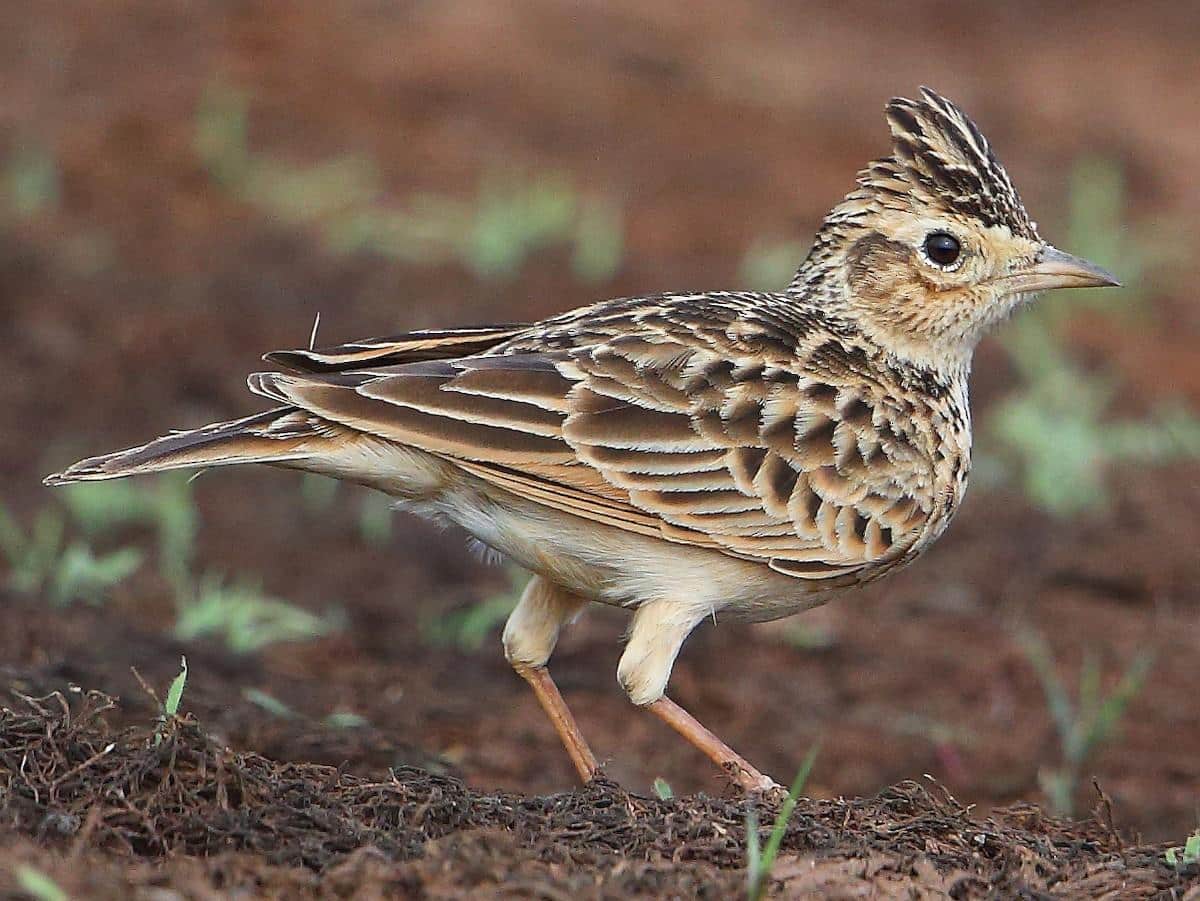
The Skylark is a small bird known for its rich, continuous song delivered in flight. It prefers open grasslands and farmland.
- Region of Habitat: Europe, Asia, and parts of North Africa
- Scientific Name: Alauda arvensis
- Feeding Habits: Omnivorous; eats seeds, insects, and worms
- What Sound They Make: Continuous, high-pitched melodic trills
Fun Facts
Skylarks can sing while hovering high in the sky for up to 10 minutes. Their song have inspired many poems and musical works.
13. Snowy Egret
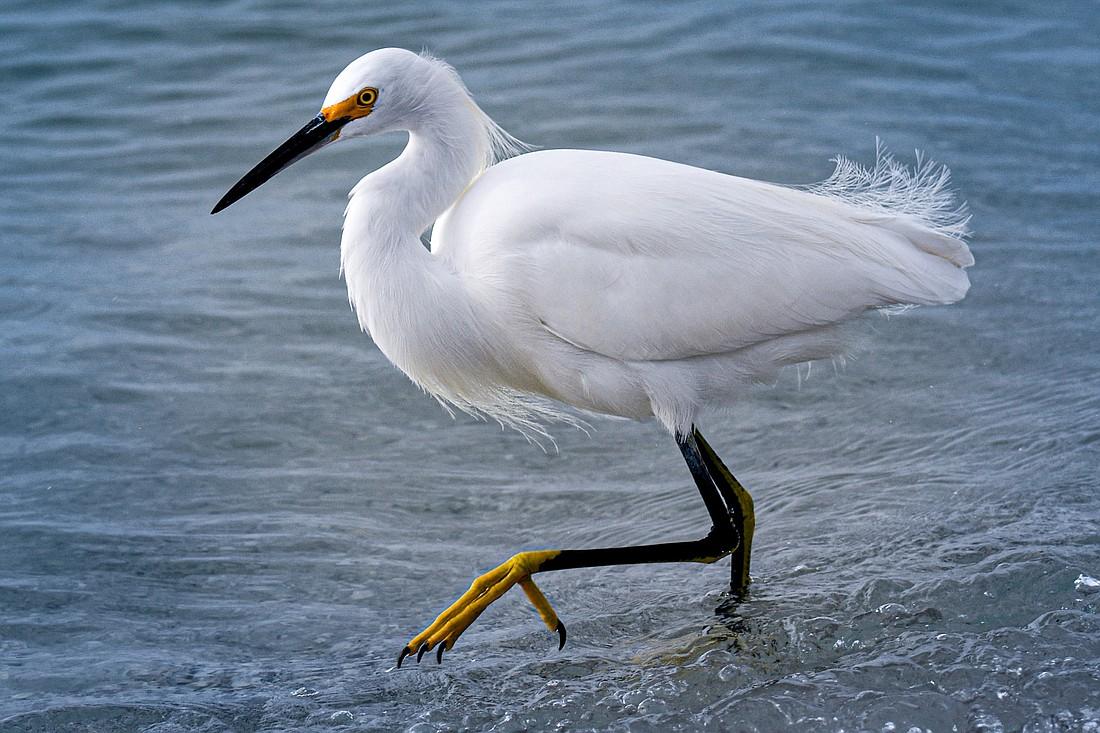
The Snowy Egret is a slender, white heron with black legs and bright yellow feet. It is often seen wading in shallow waters.
- Region of Habitat: Americas, from the U.S. to South America
- Scientific Name: Egretta thula
- Feeding Habits: Carnivorous; eats fish, crustaceans, and insects
- What Sound They Make: Raspy croaks and squawks
Fun Facts
Snowy Egrets use their flashy yellow feet to stir up prey. Their beautiful feathers were once highly used for fashion, nearly causing extinction.
14. Siskin
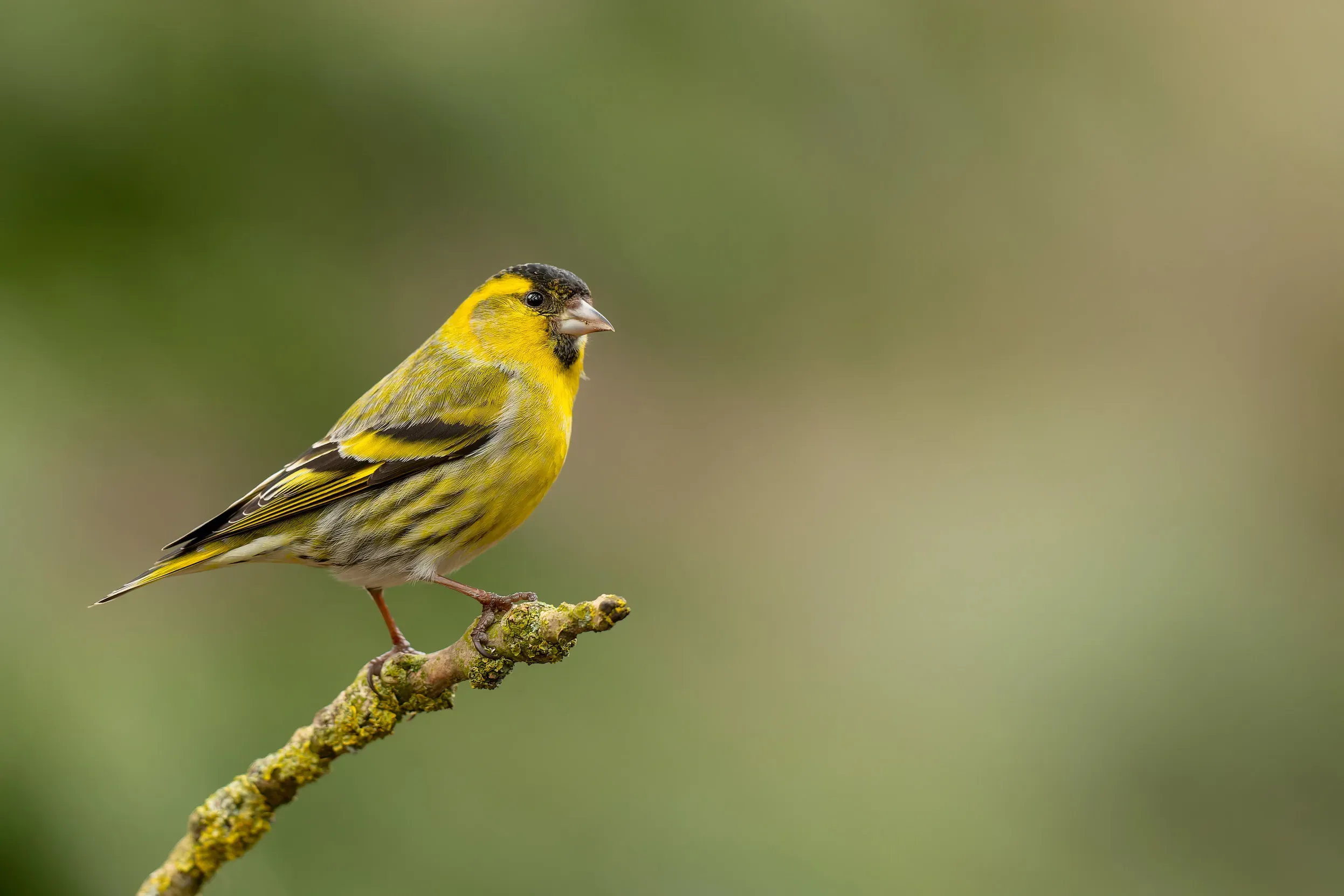
The Siskin is a small, lively finch with greenish-yellow plumage and a forked tail. It is often found in woodlands and gardens.
- Region of Habitat: Europe, Asia, and parts of North America
- Scientific Name: Spinus spinus
- Feeding Habits: Herbivorous; eats seeds, especially from alder and birch trees
- What Sound They Make: Rapid, twittering chirps
Fun Facts
Siskins are social birds that often form large flocks in winter. They can hang upside-down while feeding like acrobats.
15. Scarlet Tanager
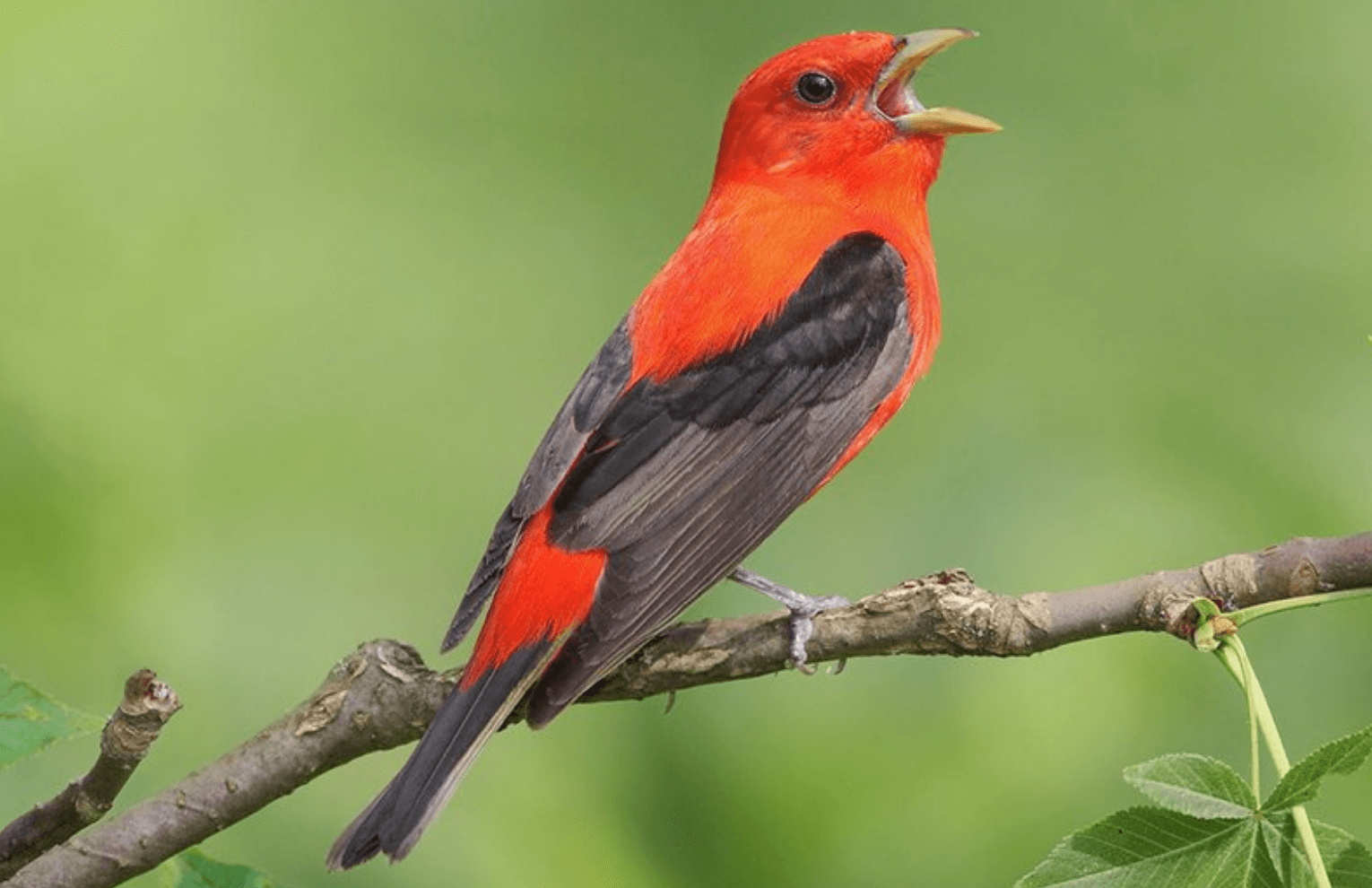
The Scarlet Tanager is a medium-sized songbird with brilliant red feathers and black wings in males. Females are olive-yellow.
- Region of Habitat: Eastern North America
- Scientific Name: Piranga olivacea
- Feeding Habits: Omnivorous; eats insects and berries
- What Sound They Make: Buzzy, robin-like song
Fun Facts
Scarlet Tanagers migrate to South America for winter. Despite their vivid colors, they are hard to spot due to their canopy-loving nature.
Some More Birds That Begin With The Alphabet “S”
16. Sabine’s Gull
17. Sacred Ibis
18. Saddle-billed Stork
19. Saffron Finch
20. Sage Grouse
21. Sage Thrasher
22. Saint Lucia Oriole
23. Saint Vincent Amazon
24. Salim Ali’s Swift
25. Salvadori’s Pheasant
26. Sand Partridge
27. Sandwich Tern
28. Sapphire Quail-Dove
29. Sapphire-rumped Parrotlet
30. Sarus Crane
31. Satin Bowerbird
32. Satin Flycatcher
33. Savannah Sparrow
34. Saw-whet Owl
35. Say’s Phoebe
36. Scaled Dove
37. Scaled Quail
38. Scarlet Finch
39. Scarlet Ibis
40. Scarlet Minivet
41. Scarlet Robin
42. Scissor-tailed Flycatcher
43. Sclater’s Lark
44. Screaming Piha
45. Sedge Warbler
46. Sedge Wren
47. Semaine’s Sunbird
48. Senegal Coucal
49. Senegal Parrot
50. Serin
51. Sharp-shinned Hawk
52. Shearwater
53. Shikra
54. Short-billed Dowitcher
55. Short-eared Owl
56. Short-tailed Albatross
57. Short-tailed Shearwater
58. Shoveler
59. Siamese Fireback
60. Siberian Accentor
61. Siberian Blue Robin
62. Siberian Chiffchaff
63. Siberian Jay
64. Siberian Rubythroat
65. Siberian Thrush
66. Silky-flycatcher
67. Silver Pheasant
68. Silvereye
69. Singing Bush Lark
70. Singing Honeyeater
71. Singing Quail
72. Skimmer
73. Slaty Antwren
74. Slaty-backed Gull
75. Slaty-tailed Trogon
76. Slender-billed Gull
77. Small Blue Kingfisher
78. Small Minivet
79. Small Niltava
80. Smew
81. Snow Bunting
82. Snow Petrel
83. Snowy Plover
84. Sociable Lapwing
85. Solomon Islands Owl
86. Somali Ostrich
87. Song Thrush
88. Sooty Albatross
89. Sooty Falcon
90. Sooty Gull
91. Sooty Shearwater
92. South Polar Skua
93. Southern Bald Ibis
94. Southern Cassowary
95. Southern Ground Hornbill
96. Southern Lapwing
97. Southern Screamer
98. Spanish Sparrow
99. Speckled Pigeon
Summing It Up
Birds with names starting with “S” show how amazing nature can be. From the small sparrow that visits our yards to the strong swan swimming in lakes, these birds bring beauty to our world.
Some, like the scary secretary bird, hunt snakes, while others, like the silly seagull, steal our beach snacks!
We learned that storks deliver more than babies – they migrate thousands of miles each year. The colorful scarlet tanager brightens up forests, and the speedy swift can fly faster than many cars on the highway.
Next time you look up at the sky or out your window, watch for these special “S” birds. They might be swooping, soaring, or singing nearby.
If you’re interested in more informative bird, animal, and wildlife content, feel free to click here and explore other blogs that you might enjoy!

